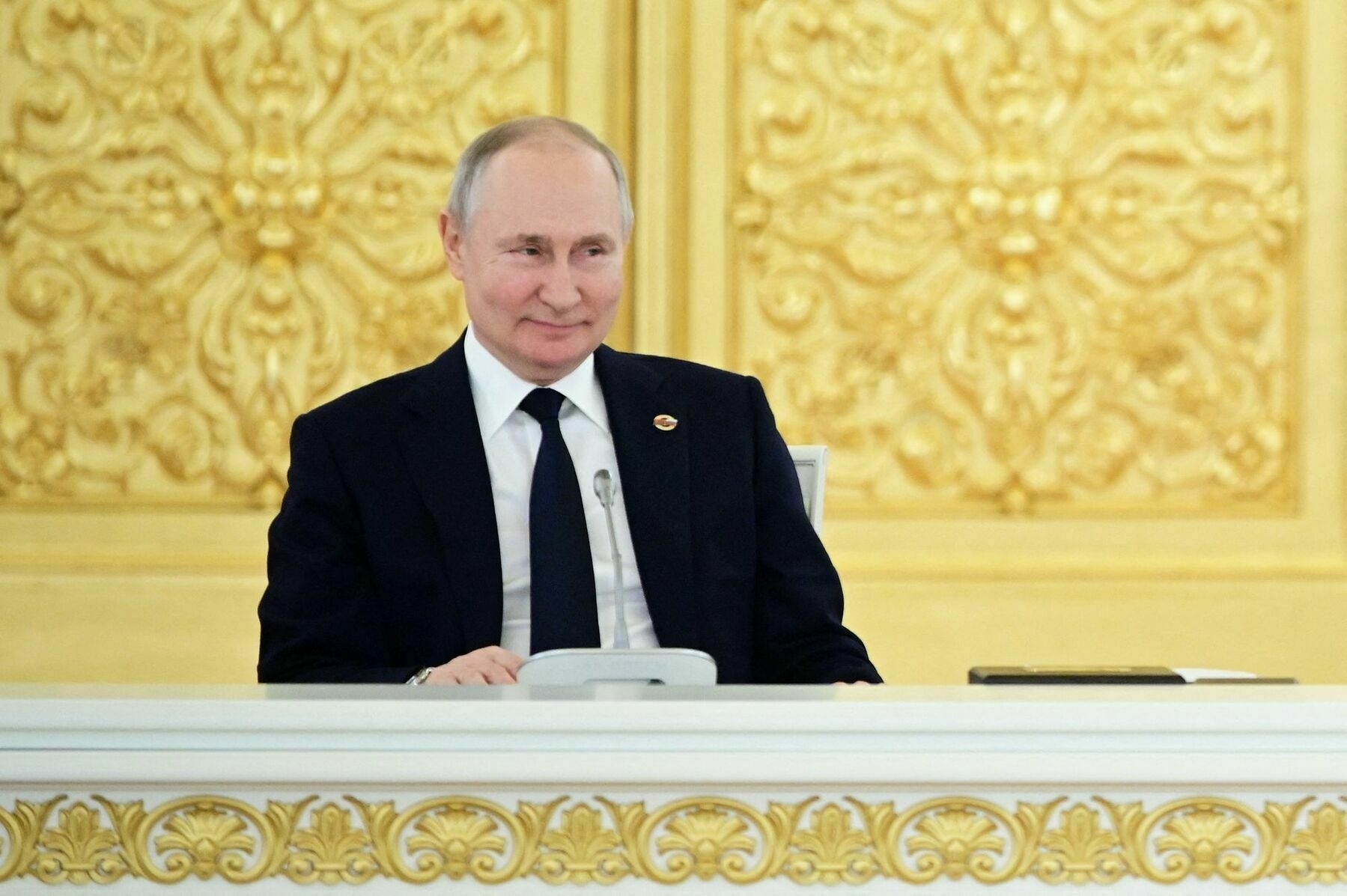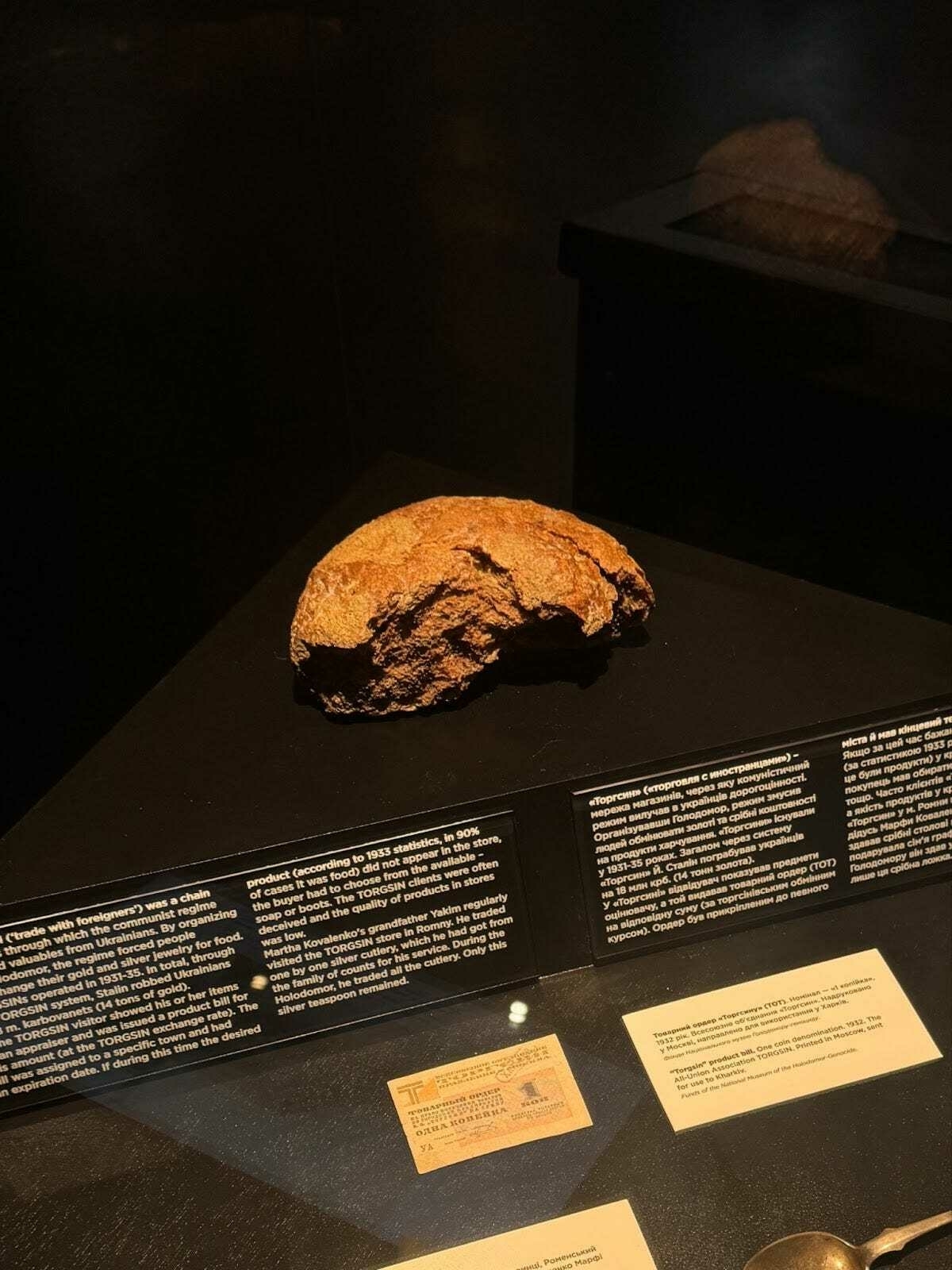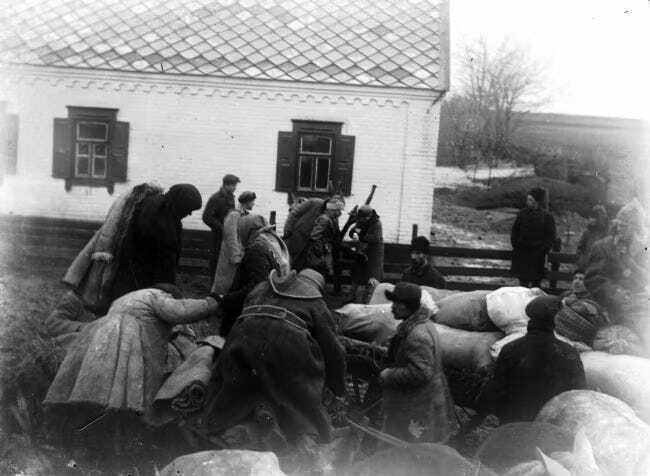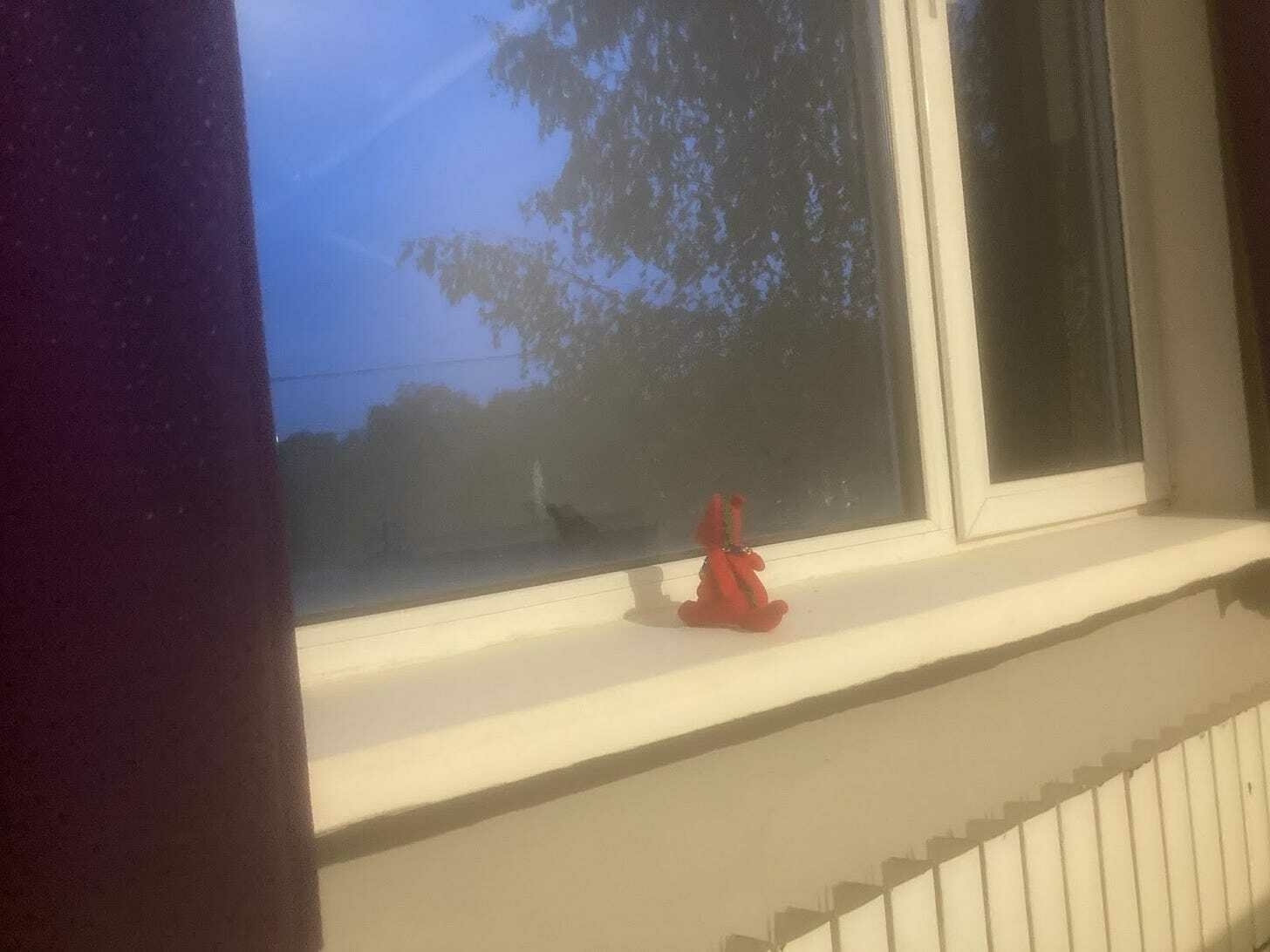-
Ukraine war latest: Ukraine strikes targets in Russia, including gunpowder plant
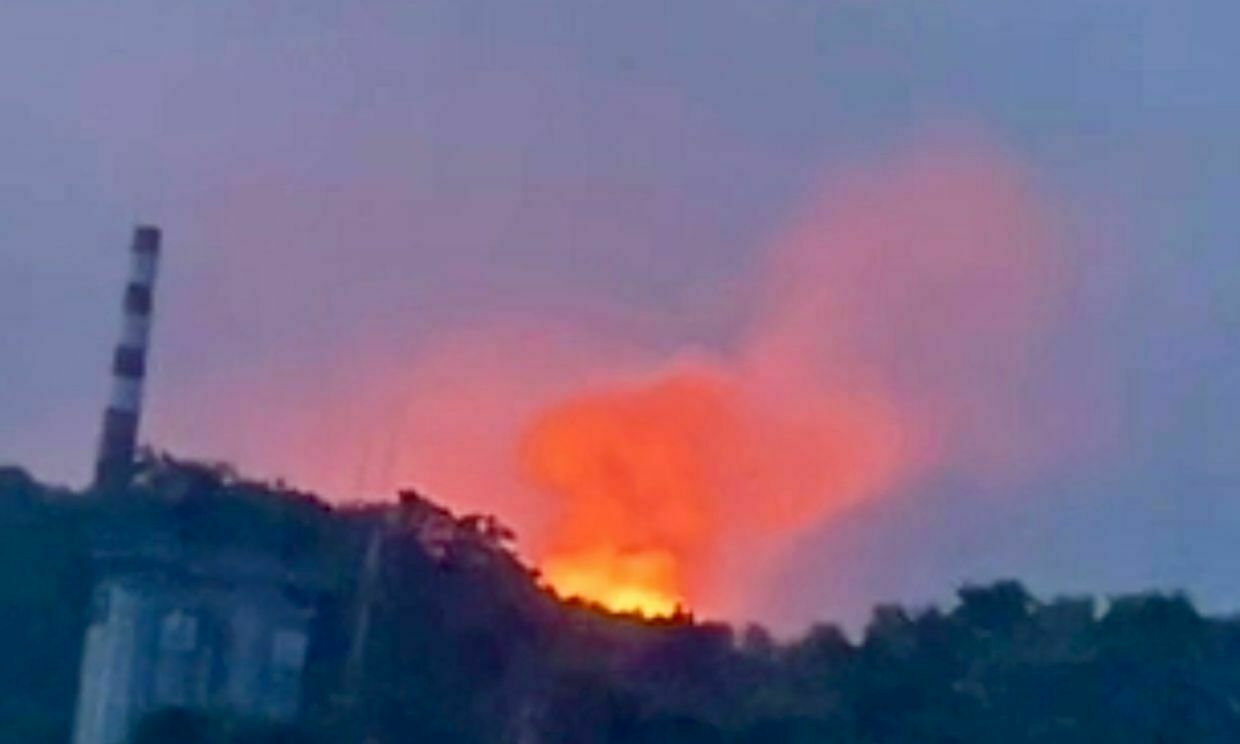
Key developments on June 11:
- Ukrainian drones strike targets in Russia, including gunpowder plant, General Staff says
- Zelensky urges ‘stronger’ EU sanctions on Russia, lower oil price cap
- Ukraine repatriates bodies of 1,212 fallen soldiers
- Ukraine’s SBU releases fresh video of Operation Spiderweb, teases ‘new surprises’
- NATO summit statement omits Ukraine’s entry bid, $40 billion pledge, Bloomberg reports
Ukrainian drones struck multiple military targets in Russia, including the Tambov Gunpowder Plant, overnight on June 11, the General Staff of Ukraine’s Armed Forces reported.
The plant, one of Russia’s main manufacturers of gunpowder and explosives for small arms, artillery, and rocket systems, caught fire following the drone strike, according to the General Staff.
Local residents reported hearing explosions and shared videos showing a large blaze near the facility, according to the Russian independent media outlet Astra.
The General Staff described the attack as part of a broader operation to degrade Russia’s ability to produce explosive materials and ammunition used in the full-scale war against Ukraine.
The Tambov facility has been targeted several times since November 2023, and U.S. sanctions were imposed on it that same year. Tambov Oblast, located southeast of Moscow, lies hundreds of kilometers from Ukraine and shares no direct border with it.
Russian state news agency TASS confirmed a drone attack but did not mention the strike on the powder plant. Tambov Oblast Governor Maxim Egorov said that emergency services had extinguished the fire and that there were no casualties, though he did not specify the location of the fire.
In addition to the strike on Tambov, Ukrainian drones hit the ammunition depot of Russia’s 106th Airborne Division in Kursk Oblast and the depot at Buturlinovka airfield in Voronezh Oblast, the General Staff said.
The extent of the damage is still being assessed, the General Staff said.
“The Defense Forces continue to take all measures to undermine the military and economic potential of the Russian occupiers and force Russia to stop its armed aggression against Ukraine,” the statement reads.
Ukraine has ramped up long-range drone strikes in recent weeks, targeting Russian air bases and arms production facilities in an effort to disrupt Moscow’s war machine ahead of an anticipated Russian summer offensive.
As Russia inches closer to Dnipropetrovsk Oblast, new Ukrainian region might soon be at warMoscow said its troops had crossed into Dnipropetrovsk Oblast and were conducting offensive operations in the region, a claim Kyiv quickly denied as “Russian disinformation.” Russian troops have been pushing toward Dnipropetrovsk Oblast for months, trying to solidify the southern flank to capture Pokrovsk and the remaining parts of theThe Kyiv IndependentAsami Terajima
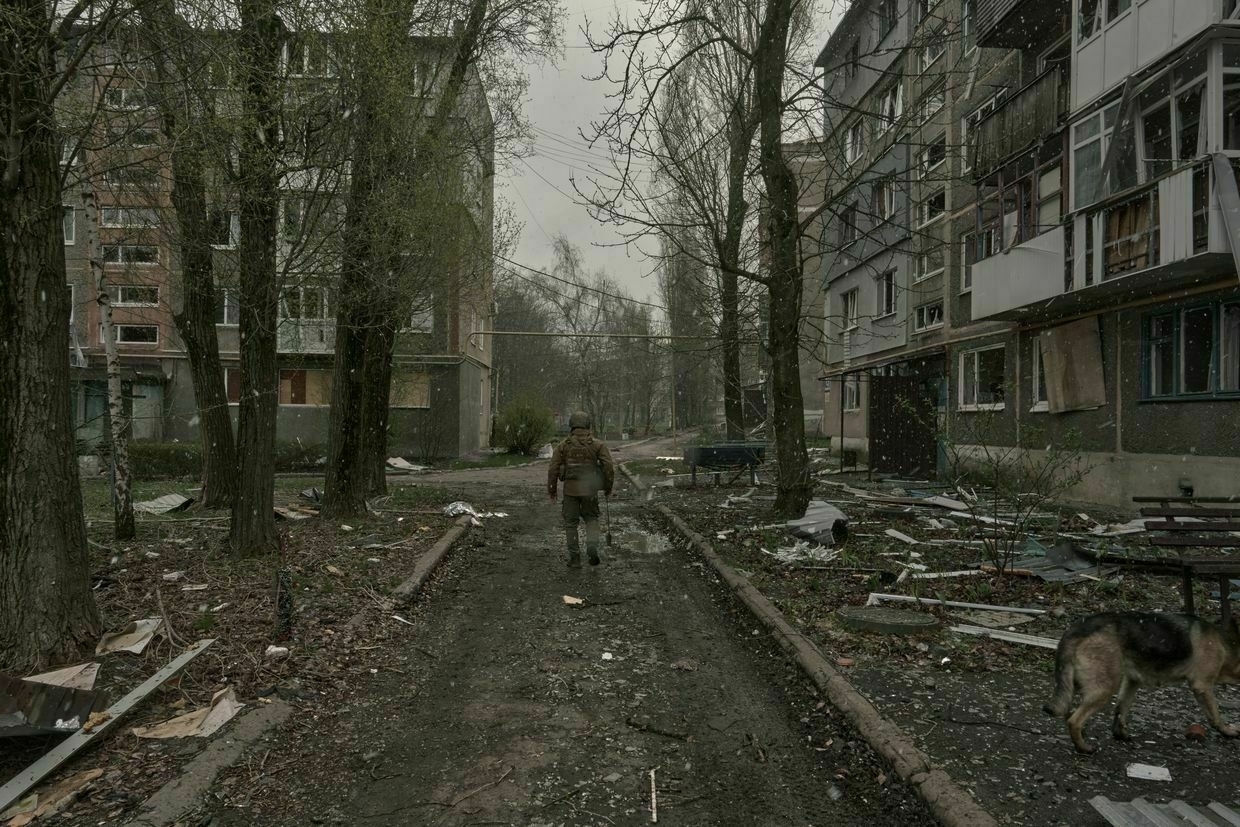
Zelensky urges ‘stronger’ EU sanctions on Russia, lower oil price capPresident Volodymyr Zelensky on June 11 called on the European Union to impose tougher sanctions against Russia, arguing that stronger financial pressure is necessary to curb Moscow’s war effort.
Speaking at the Ukraine-Southeast Europe Summit in Odesa, Zelensky said the upcoming 18th EU sanctions package “could be stronger,” especially in targeting Russian oil tankers and the financial sector. He urged the EU to further reduce the price cap on Russian oil exports.
“A ceiling of $45 per barrel of oil is better than $60, that’s clear, that’s true. But real peace will come with a ceiling of $30,” he said. “That’s the level that will really change the mindset in Moscow."
After the 17th package of sanctions against Russia took effect on May 20, Ukraine’s allies announced the following day that another round of restrictions was already in the works.
European Commission President Ursula von der Leyen announced on June 10 that the EU is considering lowering the oil price cap from $60 to $45 per barrel — a measure that will be discussed at the upcoming G7 summit in Canada on June 15–17.
The Kremlin’s budget is increasingly strained by soaring military expenditures, with Russia’s Finance Ministry relying heavily on energy revenues to fund the war against Ukraine.
The push for tighter sanctions comes as Russia continues to reject ceasefire proposals and presses forward with military operations. Zelensky warned that Odesa remains one of Russia's "main targets," with plans to push beyond it toward the borders with Romania and Moldova.
"Russia wants to destroy it, as it has done with countless cities and villages in the occupied territories," he said. "Russian military plans point to this region — Odesa — and then to the border with Moldova and Romania."
Odesa is a major port city in southern Ukraine, located on the northwestern coast of the Black Sea. The president warned of possible destabilization efforts in the broader region, comparing the Kremlin's strategy to its previous interference in the Balkans.
"We saw this before in the Balkans, where Russia intensified interethnic friction, carried out sabotage, and even attempted coups," Zelensky said.
The Odesa summit was attended by several southeastern European leaders, including Serbian President Aleksandar Vucic and Romania's newly elected President Nicusor Dan.
Vucic's trip marked his first official visit to Ukraine since the start of Russia's full-scale invasion.
Ukraine bracing for ‘painful’ reduction in US military aid after Hegseth announces cutsEditor’s note: For security reasons, the real names of the soldiers mentioned in this story have not been used. A reduction in U.S. military aid to Ukraine would be “painful” and could have potentially “dire consequences” for the global order, Ukrainian lawmakers and soldiers have told the Kyiv Independent.The Kyiv IndependentKateryna Hodunova
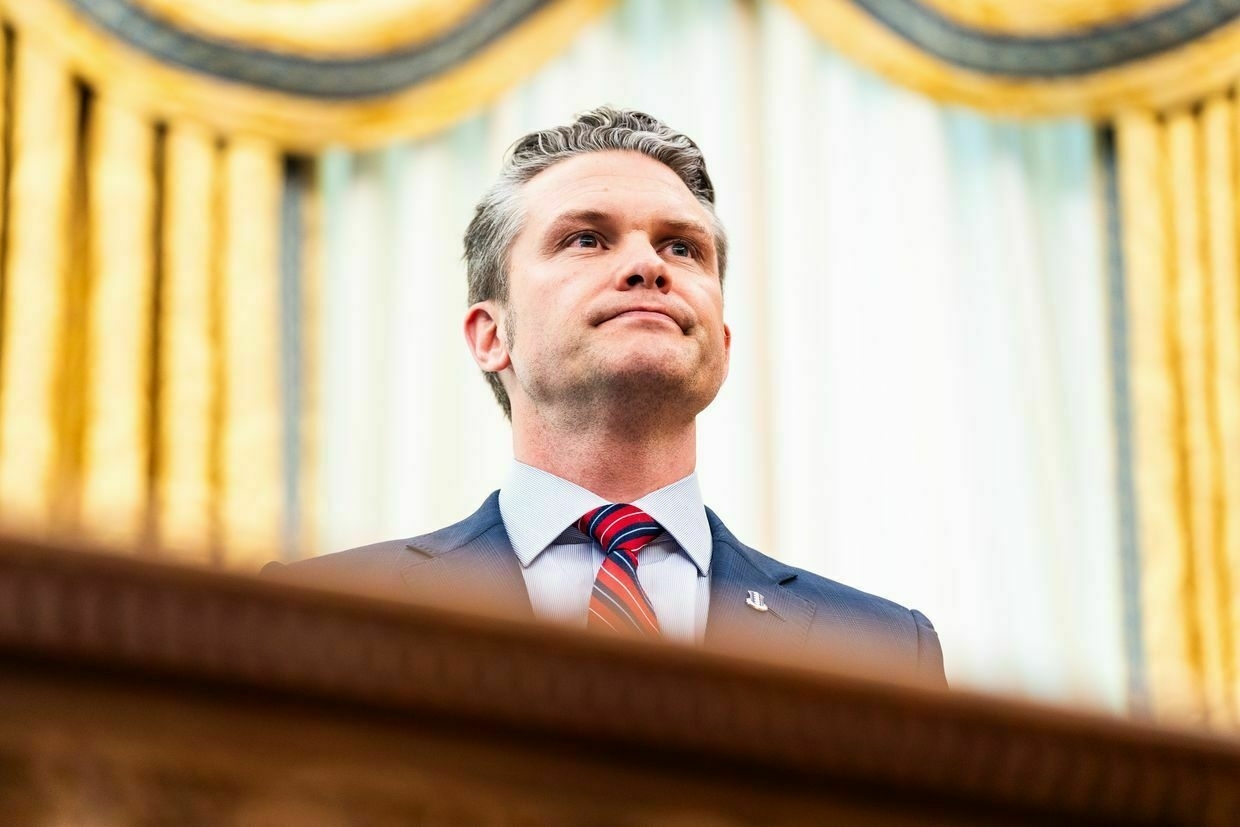
Ukraine repatriates bodies of 1,212 fallen soldiersUkraine has brought back the bodies of 1,212 fallen service members, the Ukrainian Coordination Headquarters for the Treatment of Prisoners of War (POW) said on June 11.
The announcement follows Russian-Ukrainian Istanbul talks on June 2, which focused on exchanges of POWs and fallen soldiers.
The repatriation was carried out through a coordinated effort involving the Security Service of Ukraine (SBU), the Armed Forces, the Interior Ministry, the Ombudsman's Office, the State Emergency Service, and other national security and defense institutions. The International Committee of the Red Cross also supported the operation.
The remains of soldiers were returned from multiple front-line regions, including Kharkiv, Donetsk, Luhansk, Zaporizhzhia, Kherson, and Sumy oblasts.
Officials emphasized that investigative and forensic teams from the Interior Ministry and the Health Ministry are working to identify the bodies in the shortest possible time.
Vladimir Medinsky, aide to Russian President Vladimir Putin, claimed Russia transferred the bodies of 1,212 Ukrainian soldiers in accordance with the agreements in Istanbul, while Ukraine released the remains of 27 Russian service members.
The Ukrainian side did not disclose how many Russian bodies were handed over in return.
At the Istanbul meeting on June 2, Russian and Ukrainian delegations agreed on a new exchange of POWs but failed to reach a ceasefire agreement.
The Turkey-hosted talks were the second round since mid-May and resulted in an agreement to exchange severely wounded and young prisoners, with President Volodymyr Zelensky saying up to 1,200 individuals could be returned on each side. Russia also pledged to transfer up to 6,000 bodies of Ukrainian soldiers.
Following the Istanbul talks, Ukraine and Russia have already conducted two prisoner exchanges on June 9 and 10. While exact figures were not immediately disclosed, Ukraine confirmed the return of severely wounded and chronically ill prisoners, including those captured during the 2022 siege of Mariupol and held for more than three years.
In Istanbul, Ukraine also submitted a peace proposal that called for a full ceasefire, an "all-for-all" POW exchange, the return of abducted children, and the use of frozen Russian assets to rebuild Ukraine. Russia has yet to formally respond.
‘Ukrainians have been stripped of illusion of control’ — Filmmaker Kateryna Gornostai on Russia’s war, cinema and reclaiming the narrativeWhen Russia launched its full-scale invasion of Ukraine, film director Kateryna Gornostai found herself questioning whether she would continue working. “I had this feeling that life — at least professionally — had come to an end,” she says. “Who needed directors or screenwriters, then? At most, volunteers were needed, but hardly anyoneThe Kyiv IndependentKateryna Denisova

Ukraine's SBU releases fresh video of Operation Spiderweb, teases 'new surprises'The Security Service of Ukraine (SBU) released on June 11 a new video detailing the sequence of its mass drone strike against Russia's strategic aviation earlier this month.
The Operation Spiderweb, carried out on June 1, involved 117 drones that were hidden in trucks across Russia and deployed against four air bases, some thousands of kilometers from the Ukrainian border.
The strike deep in the rear damaged 41 aircraft, including Tu-95, Tu-22M3, and Tu-160 bombers, rare A-50 spy planes, and An-12 and Il-78 transport aircraft, causing damage of over $7 billion, the SBU said.
Trucks, seen in the footage driving in an undisclosed location, first transported first-person-view (FPV) drones and wooden cabins to Russia, the SBU said. Already on Russian territory, the vehicles were loaded with cabins, which, in turn, carried the drones.
0:00/A video detailing Ukraine's Operation Spiderweb on June 1, 2025. (SBU) The preparations were taking place in the Russian city of Chelyabinsk, not far from a Federal Security Service (FSB) office, according to the SBU.
The loaded trucks then drove to multiple locations in the cities of Ivanovo, Ryazan, and in the Murmansk, Irkutsk, and Amur oblasts. The cabins opened remotely at the time of the attack, allowing the drones to strike Russian planes at the Belaya, Olenya, Dyagilevo, and Ivanovo air bases.
The operation was also meant to strike at the Russian air base in Ukrainka in Amur Oblast, but this part of the attack failed.
In the strike, Ukraine deployed drones specially designed by SBU specialists for attacks deep in the rear. Their unique features allowed them to be remotely controlled in real time thousands of kilometers behind the border, an SBU source told the Kyiv Independent.
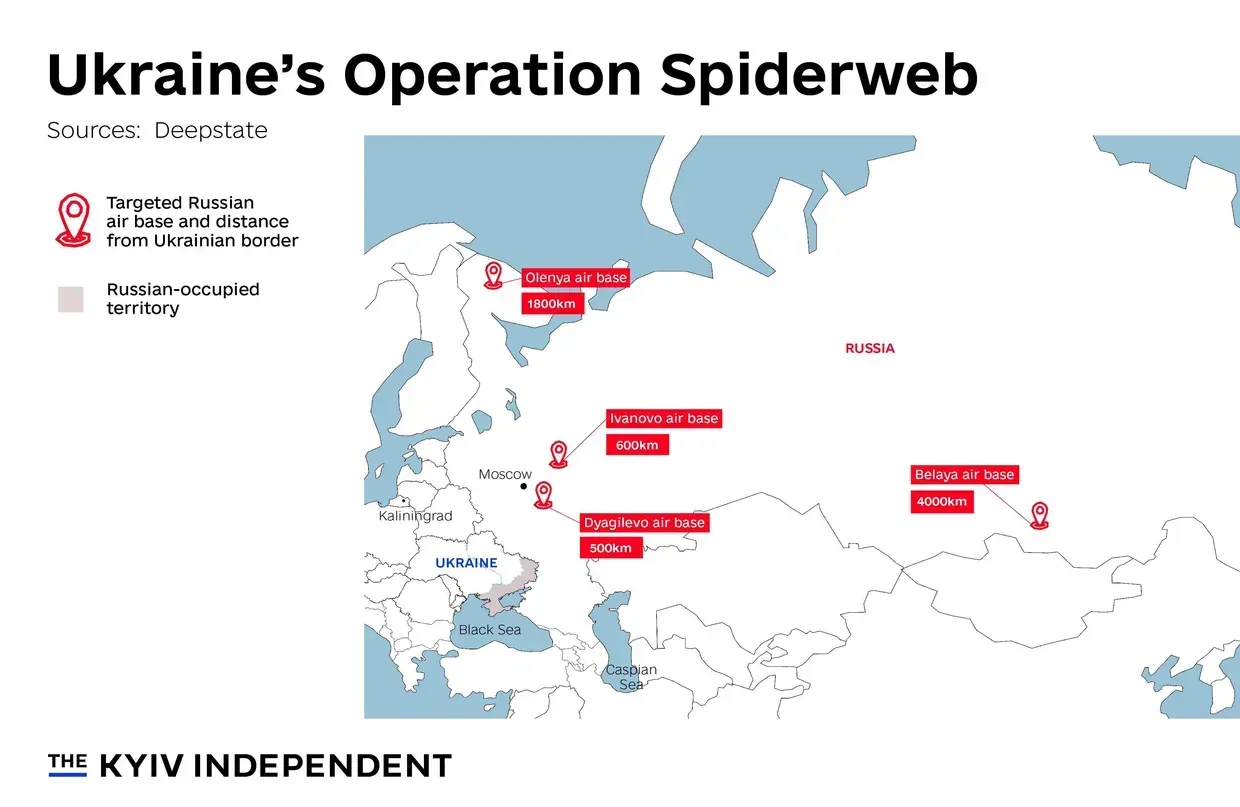
Ukraine's Operation Spiderweb. (Nizar al-Rifai/The Kyiv Independent) The drones' design also helped them "bypass Russian defenses and effectively strike the strategic aviation," the source said.
SBU chief Vasyl Maliuk, who personally oversaw the operation, stressed that Ukrainian drones targeted "absolutely legitimate targets – military airfields and aircraft that attack our peaceful cities."
"The SBU is hitting and will hit (Russia) where it considers itself unreachable!" Maliuk said in a statement.
"We are working on new surprises, no less painful than the Operation Spiderweb."
The attack was lauded by Ukrainian leaders and Western partners, with NATO Admiral Pierre Vandier calling it a reinvention of "the Trojan Horse" method with "technical and industrial creativity."
Various satellite imagery released after the attack showed around a dozen destroyed planes. NATO estimates that between 10 and 13 Russian planes were completely destroyed, and more were damaged.
In turn, President Volodymyr Zelensky claimed that roughly half of the 41 targeted planes have been damaged beyond repair. Russia acknowledged damage to its aircraft but claimed all of them will be "restored."
America’s weak strongmanOver the past two months, financial investors have hit upon a new trading strategy, based on a simple rule: TACO — Trump Always Chickens Out. America’s president threatens to slap massive import tariffs on friends and foes alike, or to remove the Federal Reserve chair, only to back down whenThe Kyiv IndependentTimothy Snyder
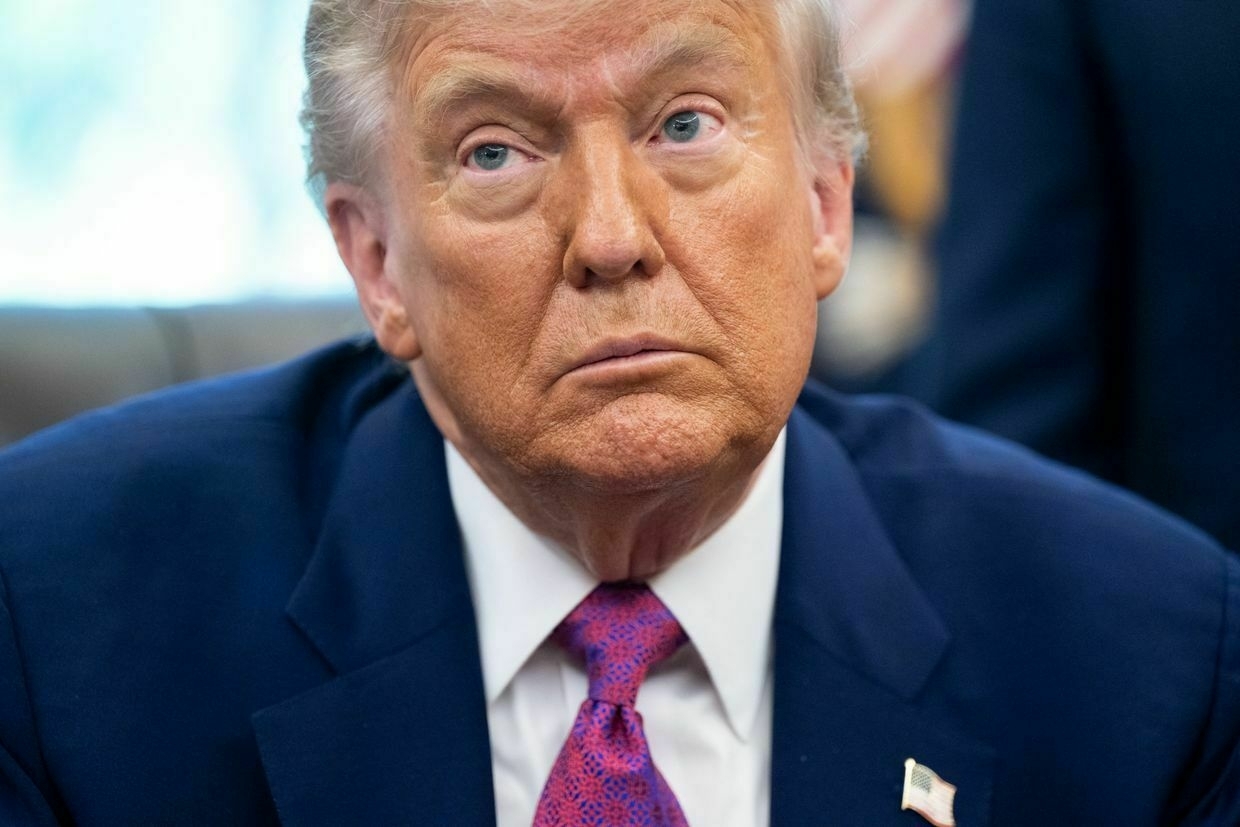
NATO summit statement omits Ukraine's entry bid, $40 billion pledge, Bloomberg reportsA one-page draft of a joint declaration for the upcoming NATO summit omits Ukraine's membership aspirations and last year's pledge of over $40 billion in support, Bloomberg reported on June 11 after reviewing the draft.
This news signals that, for the first time since 2022, Russia's war against Ukraine will not be the chief focus of the annual NATO meeting, which is taking place on June 24-25 in The Hague.
The unusually brief document recognizes Russia as a threat to NATO but not as an aggressor in Ukraine. It also does not mention China, Bloomberg reported.
The communique of the 2024 summit in Washington named Beijing as a "decisive enabler" of Russia's war against Ukraine. Last year's gathering also included a declaration that Ukraine's path to NATO is "irreversible" and promised more than $40 billion in additional military aid.
This year, the document will solely focus on defense spending, as U.S. President Donald Trump pushes NATO partners to hike the military expenditure benchmark from 2% to 5% of GDP.
The final version of the statement can still change, Bloomberg reported.
The brevity of the communique and the summit itself, as well as the decreased focus on Ukraine, stems from the effort to avoid conflict between Trump and European allies.
In a sharp break from former U.S. President Joe Biden, the Trump administration has not approved any new military aid packages to Ukraine and signaled its intent to reduce assistance for Kyiv in the next year's budget.
The U.S. president initially vowed to broker a peace deal between Kyiv and Moscow but became increasingly less engaged in the process as the negotiations stalled and Russia only intensified its attacks against Ukraine.
According to Bloomberg, NATO allies will pledge to allocate at least 3.5% of GDP to defense needs and 1.5% to protecting infrastructure and civil preparedness by 2032. Member states will also consider counting their contributions to Ukraine as part of the new defense spending targets, the news outlet reported.
The summit was preceded by rumors that President Volodymyr Zelensky would not be invited to participate for the first time due to U.S. opposition.
Later, the speculations were dispelled after the Dutch media reported that NATO Secretary General Mark Rutte had invited the Ukrainian leader to attend.
Note from the author:
Ukraine War Latest is put together by the Kyiv Independent news desk team, who keep you informed 24 hours a day, seven days a week. If you value our work and want to ensure we have the resources to continue, join the Kyiv Independent community.
-
Ukraine bracing for 'painful' reduction in US military aid after Hegseth announces cuts

Editor’s note: For security reasons, the real names of the soldiers mentioned in this story have not been used.
A reduction in U.S. military aid to Ukraine would be “painful” and could have potentially “dire consequences” for the global order, Ukrainian lawmakers and soldiers have told the Kyiv Independent.
U.S. Defense Secretary Pete Hegseth on June 10 signalled the move is almost certain to happen as he discussed Washington’s defense budget for 2026 during a congressional hearing.
Highlighting the Trump administration’s “very different view” of the war in Ukraine compared to that of Joe Biden’s, Hegseth insisted a “negotiated peaceful settlement is in the best interest of both parties and our nation’s interests."
Though he didn’t reveal specific details of the cuts, Ukraine is already bracing for its effects and looking for options to fill the likely sizable gap in support, lawmaker Iryna Friz, a parliamentary committee member on national security, defense, and intelligence, told the Kyiv Independent.
Friz said there is a “whole range” of military aid that Ukraine simply cannot obtain from other Western allies, and any reduction in these capabilities will be “painful."
“But I am convinced that instead of being emotionally affected by such statements (from Hegseth) or frustrated, Ukraine must demonstrate its readiness to strengthen its defense capabilities and increase communication with its partners to continue to defend its sovereignty,” Friz added.
Changes in the U.S. approachWith U.S. President Donald Trump’s return to the White House, Washington has sharply shifted its policy toward Ukraine. Even though Ukraine still receives military aid approved by the Biden administration, and intelligence continues to flow, Trump has already temporarily halted both once, and no new aid packages have been announced in the almost five months of Trump’s presidency.
Ukraine continues to hold the line against Russia’s grinding and slow advances, but any reduction in U.S. aid will likely affect Kyiv’s ability to fight back against Moscow’s forces, as well as undermining ongoing U.S.-led peace efforts.
“This reduction of military support might undermine our defensive capabilities, which, in turn, might translate into more casualties both among our soldiers and civilians,” lawmaker Oleksandr Merezhko, the chair of the parliament’s foreign affairs policy, told the Kyiv Independent.
“When (Russian President Vladimir) Putin is preparing for a summer offensive, according to some sources, it sends the wrong signal, because Putin might take it as encouragement to double down on the war efforts,” Merezhko added.
Ukraine’s SBU releases fresh video of Operation Spiderweb, teases ‘new surprises’“The SBU is hitting and will hit (Russia) where it considers itself unreachable!” SBU chief Vasyl Maliuk said. “We are working on new surprises, no less painful than the Operation Spiderweb.”The Kyiv IndependentMartin Fornusek
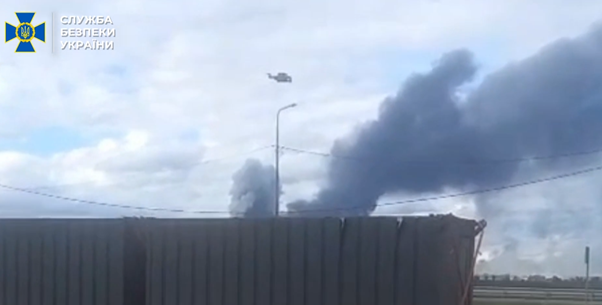
The equipment gapSince the start of the full-scale invasion, the U.S. has given Ukraine around $74 billion in military aid, and has provided weapons that have changed the course of events both on the front line and in cities hundreds of kilometers away from it.
Washington has sent Ukraine several million rounds of ammunition, tanks, armored vehicles, long-range ATACMS missiles, HIMARS, and cutting-edge Patriot air defense systems that are Ukraine’s only effective defense against Russian ballistic missiles.
But under the Trump administration, as well as not receiving new military aid packages, some weapons that were intended for Ukrainian troops have been diverted elsewhere.
According to Zelensky, while then-Defense Secretary Lloyd Austin was in the office, the U.S. pledged to give Ukraine 20,000 missiles to defend against Shahed-type drones, which Russia launches almost every night against Ukrainian cities.
“It was inexpensive, but it is a special technology. We were counting on these 20,000 missiles,” Zelensky said in an interview with ABC published on June 8.
“This morning, my defense minister told me that the U.S. has moved them to the Middle East."
Ukrainian soldiers interviewed by The Kyiv Independent criticized Washington’s recent moves but were not surprised.
“Trump and his entire team are ridiculous cowards. They want to make a deal with (Vladimir) Putin on his terms and sacrifice part of Ukraine. It is more profitable for them,” Bart, a Special Forces sniper fighting in Ukraine’s East, said.
“Reducing American aid is bad for the front line. We depend on it, on their intelligence,” he added.
Ihor, a Ukrainian soldier who also serves on the eastern front, echoed Bart’s stance, adding the new U.S. policies will have “dire consequences” for the global order.
“The U.S. is positioning itself as weak, which will allow dictatorships worldwide to increase pressure (on other countries), and America will not interfere,” he said.
What comes next?In light of the U.S,’s shifting stance, Ukraine’s European allies have pledged to step up military support but countries on the continent are dogged by a decades-long underinvestment in defense production capability.
Ukraine is therefore looking for other options, such as developing its own domestic military production and purchasing American weapons with the help of European partners.
In early June, a Ukrainian delegation led by Presidential Office head Andriy Yermak visited the U.S. to discuss further support for Ukraine’s defense and potential purchases of American weapons.
“We are ready to buy some of it, especially missile defense equipment. The congressmen understand (the issue) and want to move forward with providing Ukraine with everything it needs,” Yermak said on June 6 on national television.
However, following the Ukrainian delegation’s visit, there has been no further action or response from Washington on potential arms supplies or weapons sales to Ukraine and its allies.
Natalia Yermak contributed to this story.
America’s weak strongmanOver the past two months, financial investors have hit upon a new trading strategy, based on a simple rule: TACO — Trump Always Chickens Out. America’s president threatens to slap massive import tariffs on friends and foes alike, or to remove the Federal Reserve chair, only to back down whenThe Kyiv IndependentTimothy Snyder
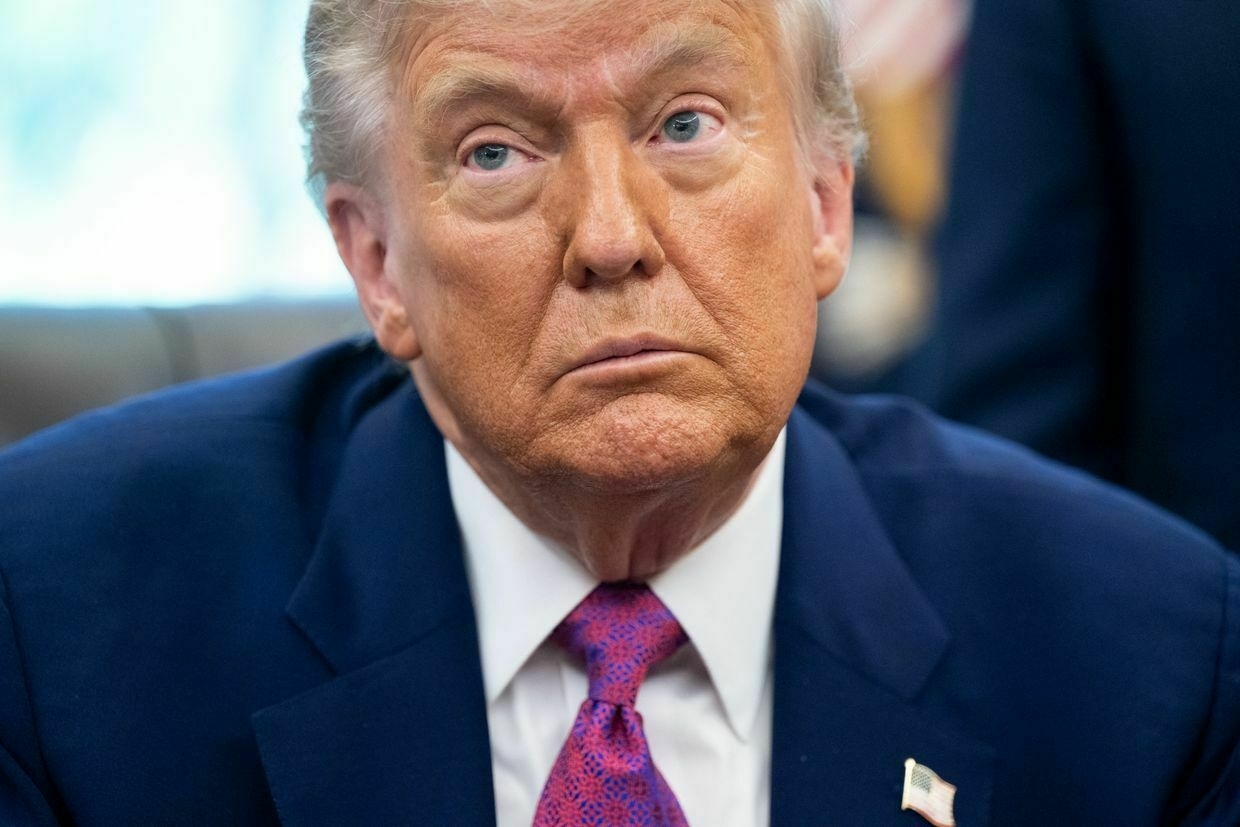
-
America’s weak strongman
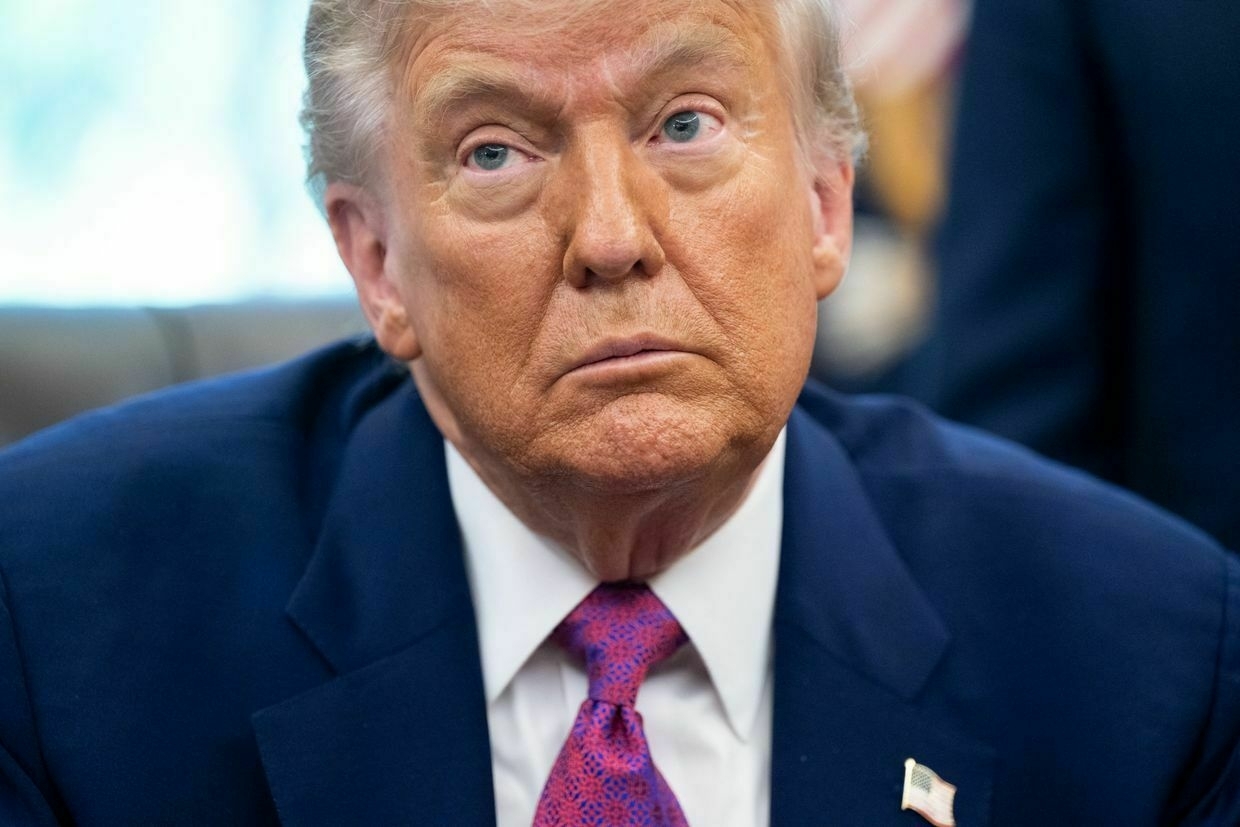
Over the past two months, financial investors have hit upon a new trading strategy, based on a simple rule: TACO — Trump Always Chickens Out. America’s president threatens to slap massive import tariffs on friends and foes alike, or to remove the Federal Reserve chair, only to back down when the whip of the market imposes its uncompromising discipline. Then he switches back to tariffs, only to back down yet again.
It’s a pattern that extends beyond the economy. In fact, it’s the defining feature of Donald Trump’s presidency. But Trump is not just “chicken.” He is a weak strongman, and America’s adversaries may understand that better than most Americans.
Many Americans fear Trump, so they imagine that others must, too. But no one outside America fears Trump as such. America’s friends fear an arsonist — someone who destroys what others have created. And America’s enemies welcome the destruction wrought by Trump and by Elon Musk’s Department of Government Efficiency. When Musk recently stepped down, the leading Kremlin ideologue Alexander Dugin lamented his departure: “DOGE made a great favor to the entire world by liquidating USAID, Health department and Department of education.”
Trump is strong in a relative sense; after he destroys institutions, what remains is his presence. But he is weak because, having destroyed the government departments overseeing money, weapons, and intelligence, the United States has no actual tools to deal with the rest of the world. He plays a strongman on television, and he is a talented performer. But his strength consists solely in his audience’s submissiveness. His performance arouses a dream of passivity: Trump will fix it.
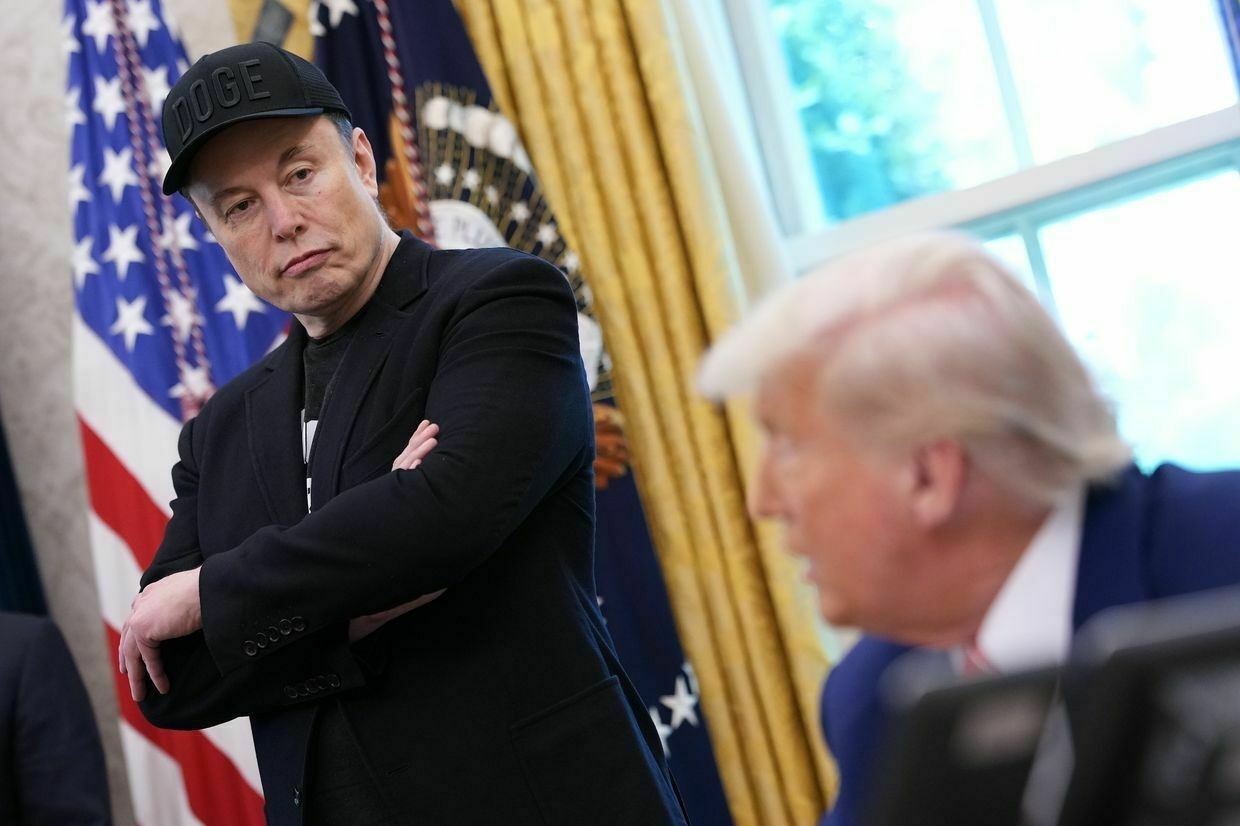
Tesla CEO Elon Musk listens as US President Donald Trump speaks to reporters in the Oval Office of the White House in Washington, D.C., U.S. on May 30, 2025. (Kevin Dietsch / Getty Images) To be sure, Trump’s charisma is a kind of strength. But it cannot be brought to bear on any problem, and it is irrelevant outside the U.S. Trump’s supporters might think that America needs no friends because it can intimidate its enemies without help. But we already know that Trump cannot make Canada or Mexico — much less China, Iran, or Russia — do his bidding.
That only works at home. For years, Trump has used rallies and social media to inspire random violence against his domestic opponents. This has led to a self-purge of the Republican Party and forged a docile cohort of congressional cadres. The people who submit to Trump perceive him as a strongman, but what they are experiencing is their own weakness. And their weakness cannot magically become strength in the wider world.
The capital letters and exclamation points in social-media posts that Trump has directed at Russian President Vladimir Putin in recent months, demanding that he stop the war in Ukraine, have had no effect on Putin’s emotional state, let alone on Russian policy. And inciting stochastic violence won’t work on foreign leaders. No one in Irkutsk is going to threaten or harm Putin because Trump posted something on the internet.
Trump cannot credibly threaten Russia without functioning institutions and competent civil servants.
One could be generous and interpret a Trump post threatening sanctions as an act of policy. But words matter only when there is actually a policy, or at least the possibility that one might be formulated. But for there to be a policy, there must be institutions staffed with competent people. And Trump’s first policy was to fire those who would be competent to design and implement a policy. Many of the people who knew anything about Ukraine and Russia, for example, are simply gone from the ranks of his administration.
Key to Russia’s defeat lies in its economyAs the war in Ukraine grinds on, attention remains fixed on the battlefield. But Russia’s most vulnerable flank is not in the trenches — it’s in the treasury. The West, and especially the United States, holds economic levers that could push Vladimir Putin toward serious negotiations or even collapseThe Kyiv IndependentWojciech Jakóbik
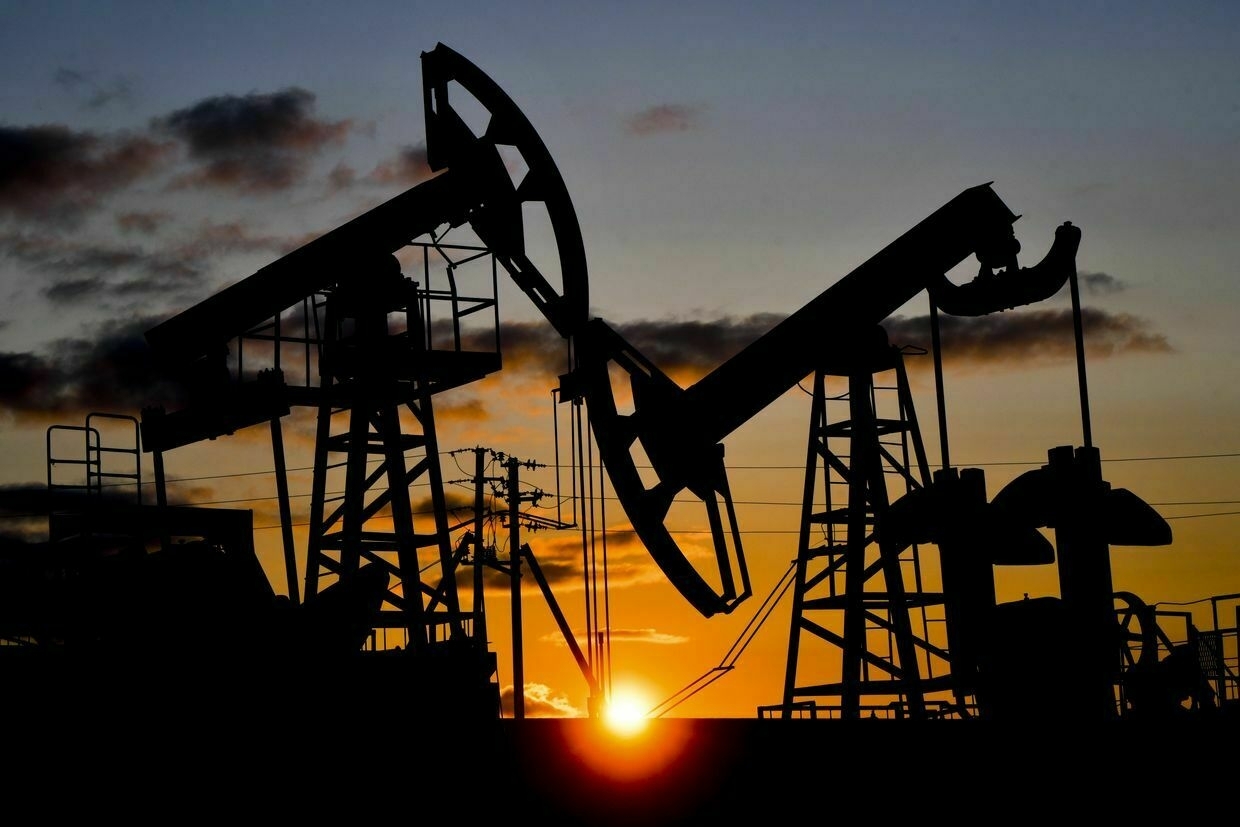
In their place came Trump’s flailing efforts to make concessions to Russia regarding Ukrainian sovereignty on his own — without Ukraine and without any allies. It didn’t work. His position was so weak that Putin naturally assumed he could get more and duly escalated Russian aggression in Ukraine. Trump is a sheep in wolf’s clothing, and the wolves can tell the difference.
It’s an obvious point, but it must be made clearly: no one in Moscow thinks that Trump is strong. Even if he wanted to, Trump cannot credibly threaten Russia without functioning institutions and competent civil servants. To make sanctions work, for example, he would need more people on the job, not fewer. Moreover, foreign powers would need to believe that the Department of the Treasury is more than an American billionaire’s plaything. Unfortunately, their intelligence agencies read the newspapers.
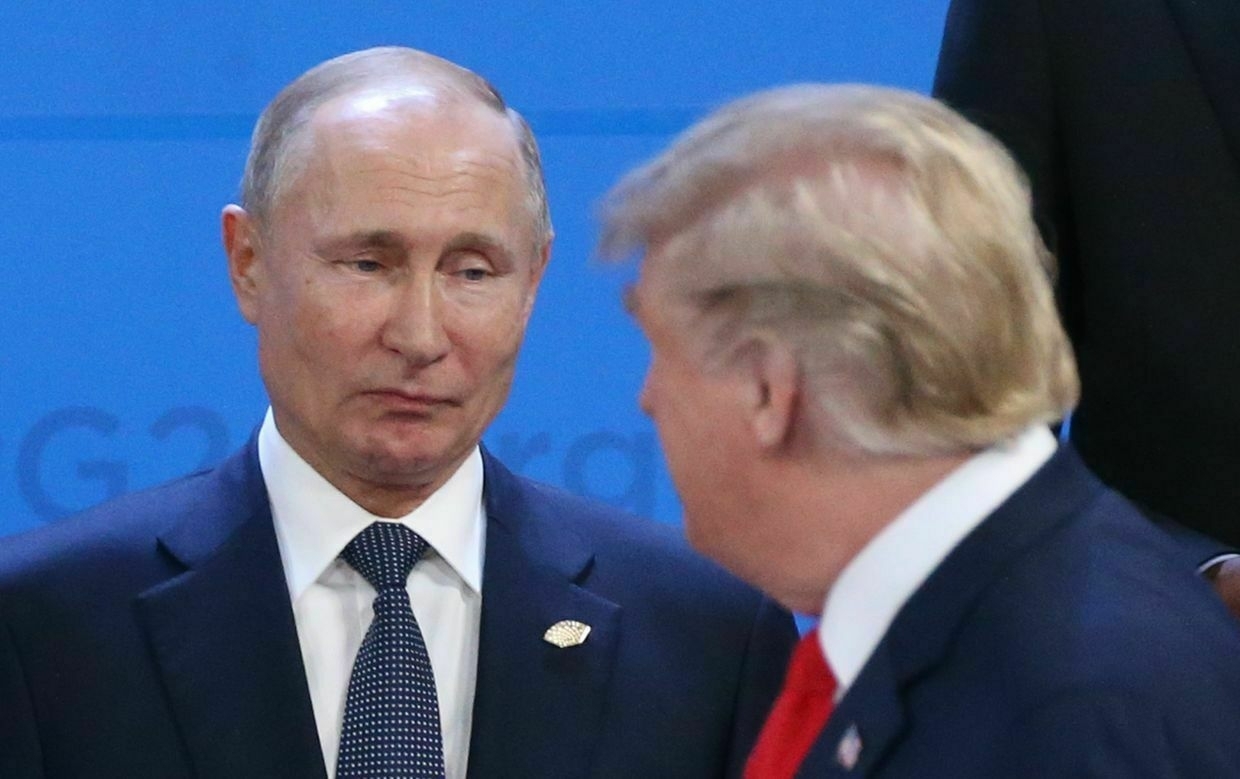
Russian President Vladimir Putin (L) looks at U.S. President Donald Trump during the welcoming ceremony ahead of the G20 summit plenary meeting in Buenos Aires, Argentina, on Nov. 30, 2018. (Mikhail Svetlov / Getty Images) Americans can choose to ignore that the state capacity needed to deal with adversaries has been gutted and/or entrusted to people whose only qualification is absolute fealty to Trump. But the destruction of the institutions of U.S. power creates a very simple incentive structure for America’s enemies. The Russians hoped that Trump would return to the White House precisely because they believe he weakens the U.S. Now, as they watch him dismantle the CIA and FBI, putting the likes of Tulsi Gabbard, Kash Patel, and Pam Bondi in charge of intelligence and federal law enforcement, they can only think that time is on their side.
That is why Putin has ignored Trump’s demand for a ceasefire in Ukraine, and why Russia will use any ceasefire that may occur to prepare for the next invasion. Putin is justifiably confident that a U.S. neutered by Trump will be unable to respond, that the Europeans will be distracted, and that the Ukrainians, after years of war, will find it harder to mobilize again.
What is true for Russia also holds for China. The weak strongman helps the People’s Republic. Time was not really on China’s side before Trump. While a generation of Americans had feared that China would surpass the U.S. economically and militarily, the trend lines in recent years were no longer so clear, or indeed had reversed. But now that Trump has set a course to destroy America’s state capacity, China can simply take what it once would have had to struggle to gain.
Wall Street might profit from the TACO trade in the short term, but a weak strongman brings only losses. While Trump’s supporters might be tempted to believe that he has made America a titan among nations, the opposite is true. As a strongman, Trump destroys the norms, laws, and alliances that held back war. As a weakling, he invites it.
Editor’s Note: Copyright, Project Syndicate. This article has been republished by the Kyiv Independent with permission. The opinions expressed in the op-ed section are those of the authors and do not purport to reflect the views of the Kyiv Independent.
Western hesitation continues to undermine UkraineOn May 28, President Volodymyr Zelensky visited Germany and met with the country’s new Chancellor, Friedrich Merz. There were high expectations that Berlin would finally authorize the delivery of Taurus long-range missiles — a long-standing request from Kyiv since the beginning of the Russian invasion. However, this demand had beenThe Kyiv IndependentUria Fancelli
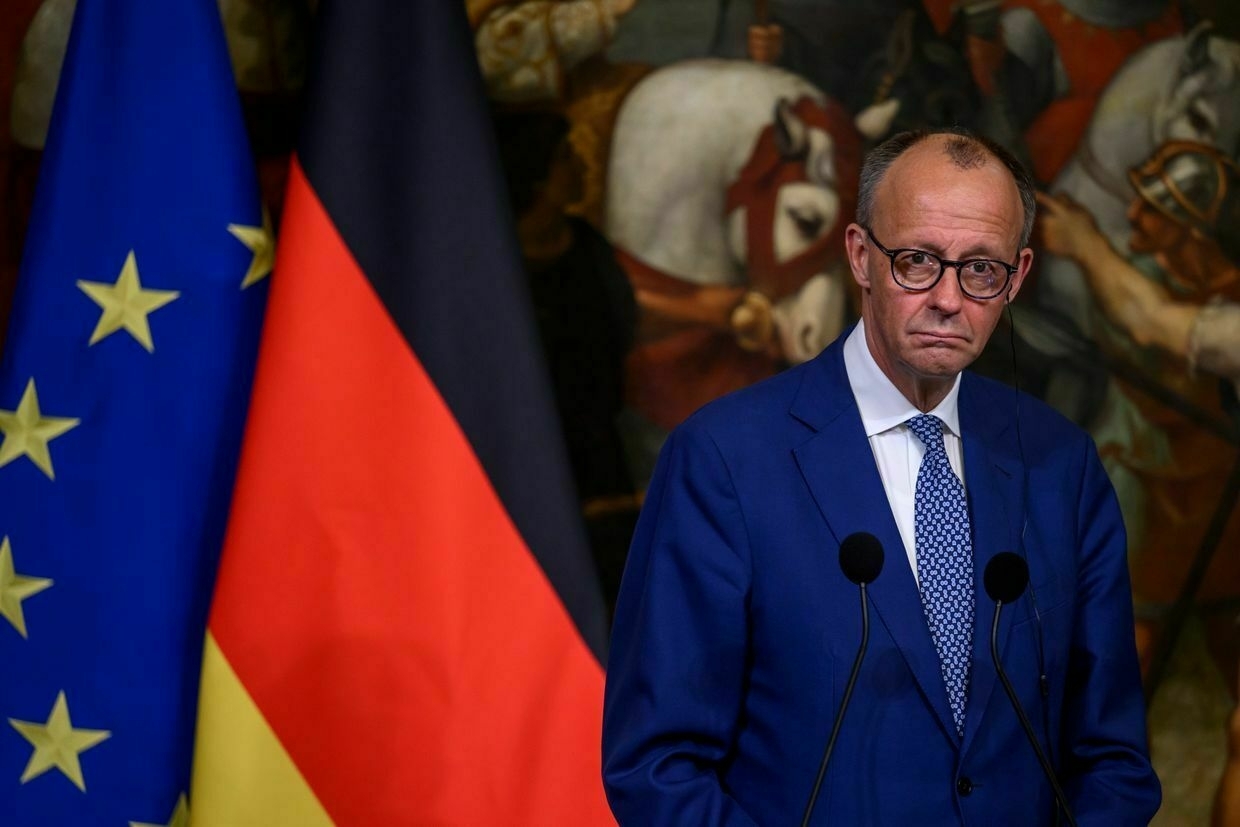
-
How Holodomor famine still scars Ukraine food habits
Editor’s note: June has historically been our toughest month, where we see a lot of unsubscribes.
Amid the constant attacks in Ukraine, we need your help: will you upgrade to a paid subscription to support our original work now?
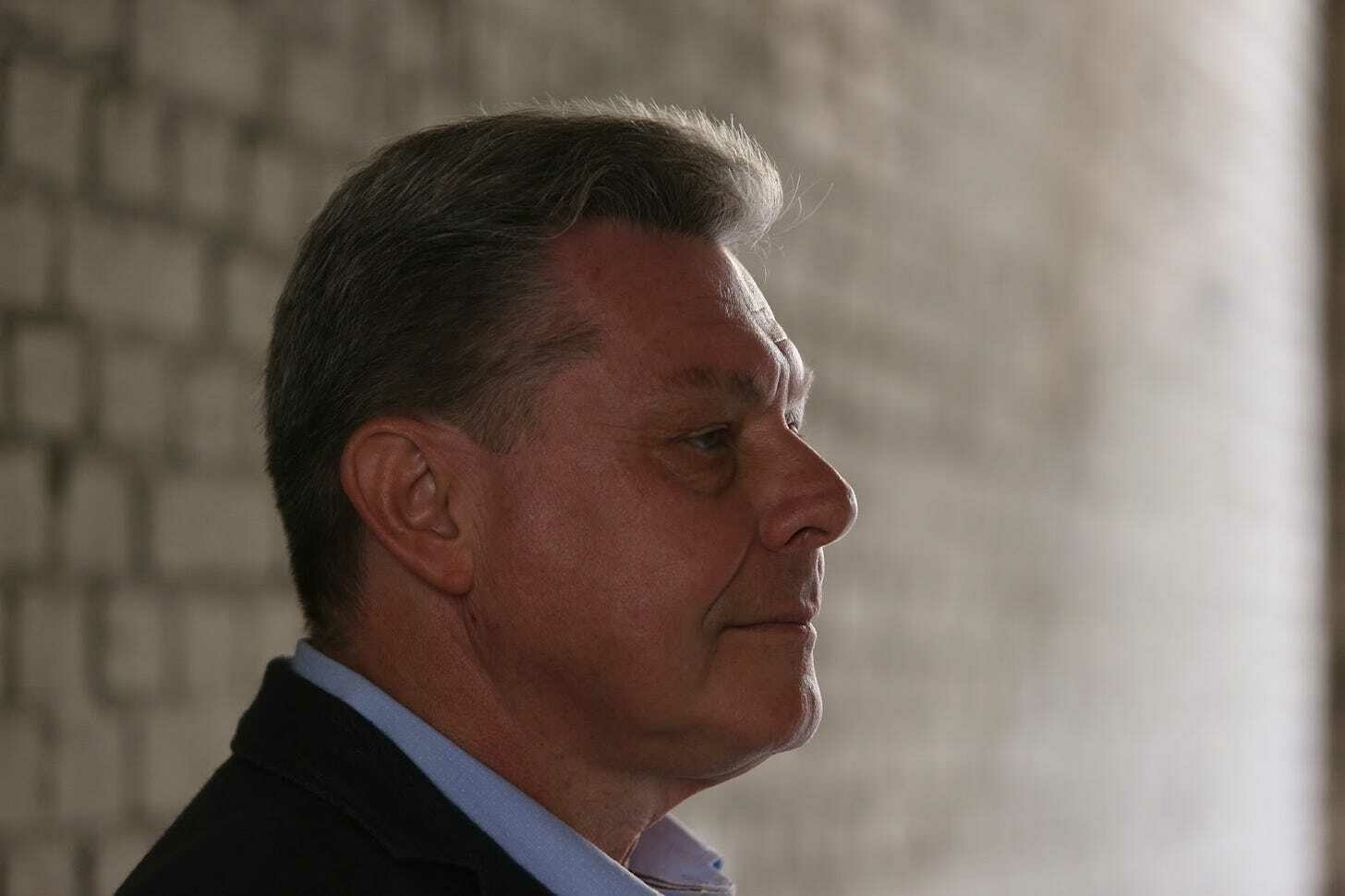
Oles Ilchenko, whose family survived Holodomor 1932-1933. (Photo provided by Oles to The Counteroffensive). “Instinctively, I catch myself on what I've been taught since childhood: that I have to eat up,” said Oles Ilchenko, a Ukrainian writer. “Sometimes I consciously stop.”
The rule of leaving no crumbs after a meal is still engraved in the subconscious of many Ukrainians. It’s just one of the scars still showing after a man-made mass famine in the Soviet Union in early 1930s killed about four million people.
More than 90 years later, the Holodomor remains deeply ingrained in the daily lives of Ukrainians and their meals. The instinct to never waste food – and the quiet joy of a well-stocked pantry – are traditions passed down through generations, as the trauma of starvation lingers in collective memory.
In Ukraine, preserving and rationing food has become a way of life, shaped by the legacy of the Holodomor. The canning and bottling of preserved food in basements was a critical reason why so many Ukrainians survive periods of occupation in the ongoing war.
And the tool of hunger as a weapon of oppression echoes today, as Russia’s military continues to starve Ukrainian prisoners of war.
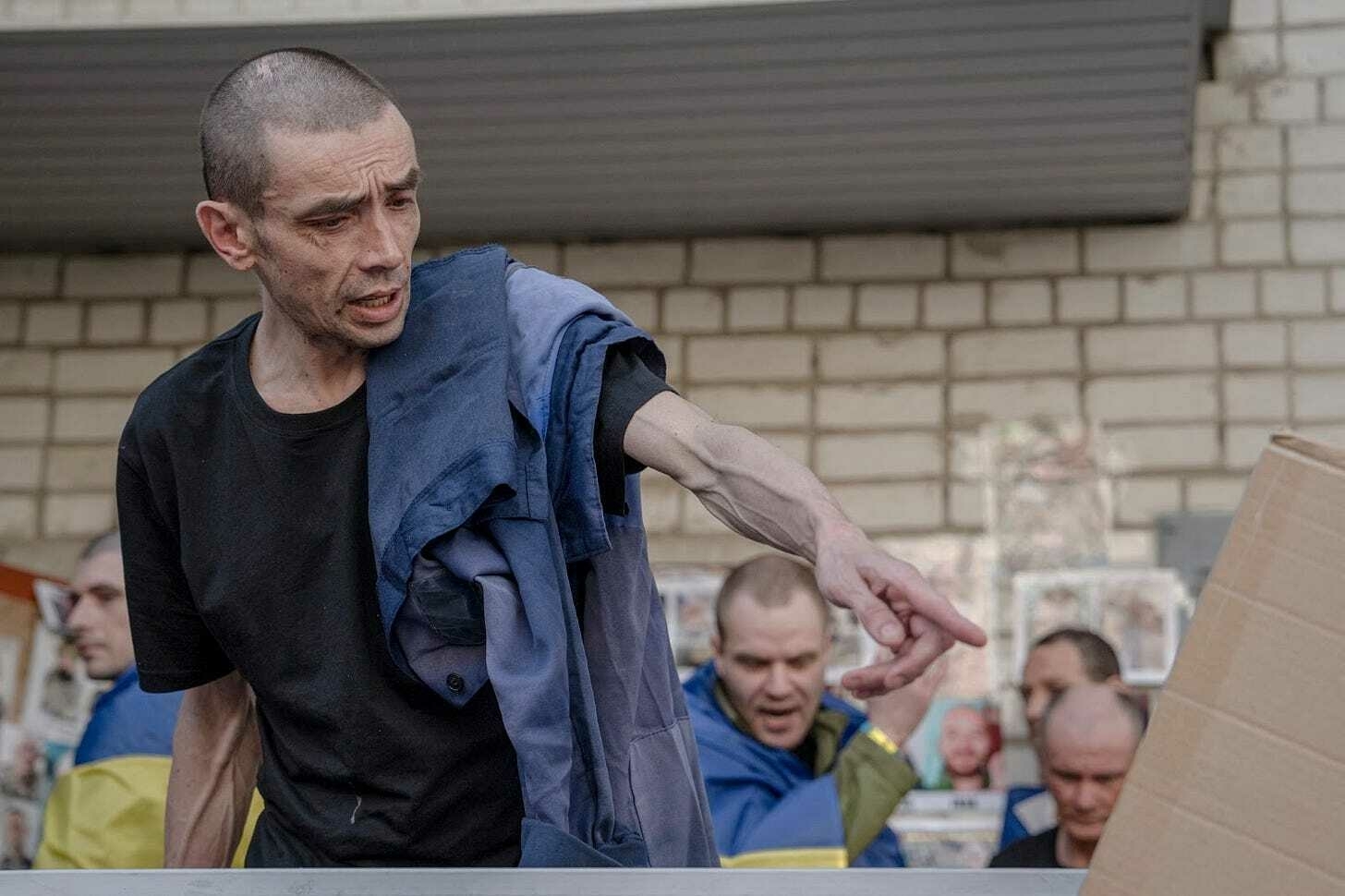
A POW gestures toward portraits of missing or captured servicemen, during the arrival of freed Ukrainian POWs after a prisoner exchange on June 10, 2025. (Photo by ANDREW KRAVCHENKO/AFP via Getty Images). Oles Ilchenko, 67 years old, is a Ukrainian writer, artist, and teacher at the first Ukrainian school in Geneva, Switzerland. He was born in Kyiv and spent most of his life there.
As a young teenager living in Ukraine, he would hear his family tell vivid stories about their experience during the Holodomor. His mother was reluctant to share, but his grandmother was an open book. Oles’ family lived in Ukraine’s central village of Kerelivka (Shevchenkove), in the Cherkasy region, during the Holodomor.
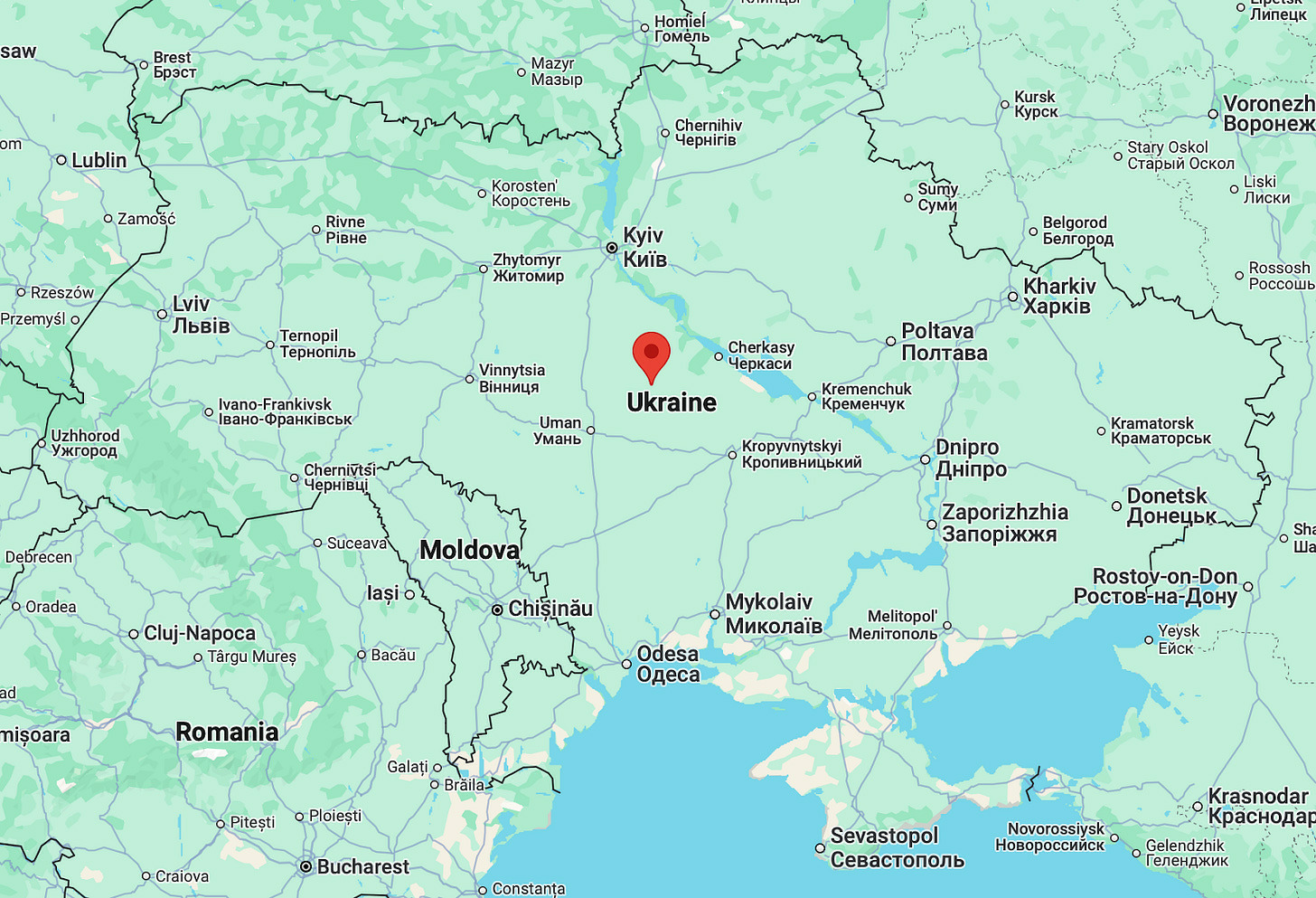
The village of Kerelivka (Shevchenkove), Cherkasy region, where Oles’ relatives lived during the Holodomor. (Screenshot from Google Maps). Oles moved to Switzerland in 2011 due to his wife’s job. Although he’s been away from Ukraine for 14 years, the experiences of his relatives still haunts him.
“I still can't watch them [Europeans] in a restaurant or a cafe, getting up, dropping everything – taking a bite of some cake, not liking it – because they didn’t want to eat it,” he said. “It still somehow doesn't leave me indifferent.”
Now, he tries to stop himself every time the old habits kick in, which can include overeating or feeling guilty over wasting food.
Oles has done everything he could to avoid passing on these traumatic habits to his now 35-year-old son. He claims to have never forced him to finish his meals, which is something his parents would make him do:
“Finish it all, don't leave it, you can't throw it away,” Oles recalled his relatives telling him when he was young. The forced feeding – often an unhappy memory in and of itself, was a reflection of a mentality that it is better to eat now because there may be no food tomorrow.
“[Even when] the child doesn't want to eat anymore, [he was forced] to eat.”
Even today, Ukrainian prisoners of war are tortured with starvation by Russian forces, violating all the norms outlined in Article 26 of the Geneva convention – a chilling echo of the same weapon once used by the Soviets. Many soldiers return exhausted not only from the physical torture they endure, but also from the lack of proper nutrients they receive.
Foreigners visiting Ukraine have been surprised by Ukrainians’ relationship with food.
“One of the things that struck me the most was how people don't waste food, like no one will throw bread away, particularly bread,” said Felicity Spector, a British journalist and author of the book ‘Bread and War’.
For Ukrainians, bread is sacred. It is ‘vsomu holova’ (‘head of everything’), ‘sviatyi’ (‘holy’) and ‘Bozhyi dar’ (‘God’s gift’).
During the famine and the years that followed, when there was nothing sweet to eat, Ukrainians would make bread with butter or honey on top, or simply wet a slice of bread with sugar. If bread becomes stale, it can be made into croutons that can be added to a soup or salad.
Before the Soviet Union, traditional Ukrainian bread was made of sourdough and grain.
The Holodomor was a man-made famine in Soviet Ukraine, caused by Stalin’s policies to suppress anything un-Soviet, targeted Ukrainian farmers through forced collectivization and grain seizures. Millions died in 1932-1933, and the famine is now widely recognized as a delibarate act of genocide intended to break Ukrainian resistance and identity.
On August 7, 1932, the so-called 'Law of Five Ears of Grain’ was adopted, which stated that ‘stealing’ common property, which could even mean picking up grain from the ground, could lead to confiscation of property or even execution.
Amid the new law, people could no longer cook or buy grain bread, as there was a lack of ingredients. Innovative cooks made bread out of peas, corn, acorn shells, or potato scraps.
Oles remembers how the imitation bread of the 60s, bought from the store, “tasted very bad and it was falling apart.”
Even years after the Holodomor ended, bread shortages persisted due the failure of collective farms. Oles’ father once went on a business trip to Leningrad, now known as St. Petersburg, and brought back two highly-coveted loaves of bread as a gift.
“And I remembered those two loaves so much, how we didn't know how to eat them or what to do with them,” Oles said. “And it was 1963, 30 years after the Holodomor. But the memories were so fresh, and everyone was really afraid that it would happen again.”
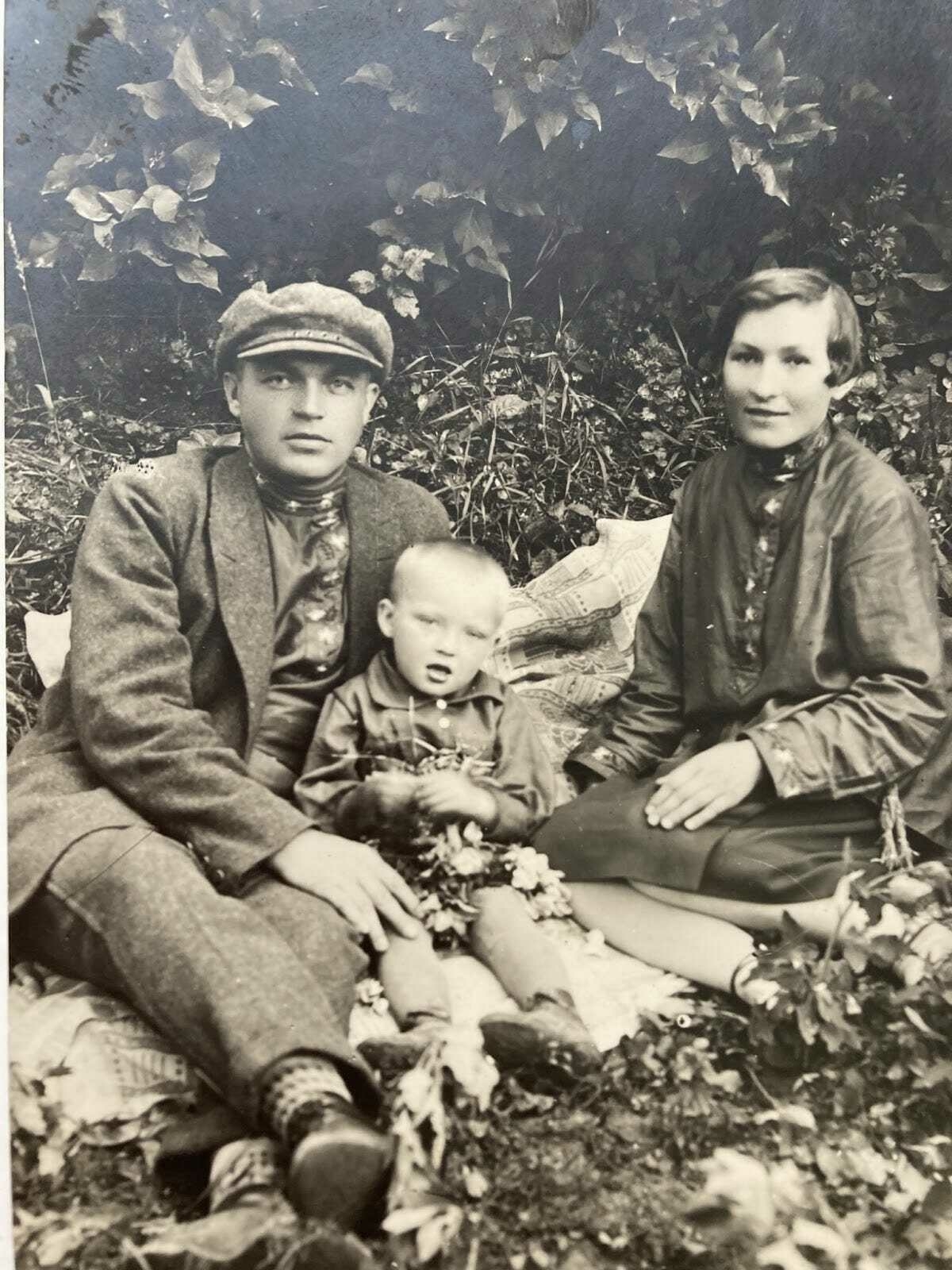
Oles’ grandfather, Zakhar Ilchenko, his grandmother, Mariia Kovalenko, and his mother, Diana Ilchenko, before the Holodomor. (Photo provided by Oles Ilchenko). For grandparents triggered by the horrors of famine, kids are never full.
“Grandparents look and see how thin he [a child] is, ‘we need to feed him more’,” said Vitalii Klymchuk, a Ukrainian therapist and Director at Mental Health. Even doctors sometimes tend to comment on a child’s weight, he said.
During phone calls, the first question from grandparents is usually: “Have you eaten?” or “Are you hungry?” These small details can be traced back to the time when feeding a child meant keeping them alive.
When the Holodomor started, Oles’ grandmother, Mariia Kovalenko, was a young mother. People ate whatever they could find or hide.
“My grandmother told me that they hid a bag of dried cherries in the attic and ate them secretly at night,” Oles said. “And that's how they survived.”
In the 1920s, a grain procurement crisis arose when farmers refused to sell grain at a discounted price to the USSR. Amid the crisis, Soviet leaders imposed the collectivization of the agricultural sector in 1929, forcing people to enroll in ‘kolkhoz’ – collective farms. The policy was aimed at wealthy peasants who disagreed with the grain prices – 113,000 of them were later deported.
Approximately 70 percent of peasant farms were collectivized – roughly half of the population of Ukraine at the time. The Soviet leadership thought the initiative would increase the food supply. But by beginning of 1932, every farmer was experiencing hunger.
“It was insanity, cannibalism, and degradation when they [people during Holodomor] ate roots, leaves, and bark,” Oles said. “This is simply reducing a human being to the level of an animal that only thinks about what to eat, and cannot think of anything else.”
There were more than 2,000 criminal cases of cannibalism during 1932-1933, according to Mykhailo Kostiv, Head of the Department for the Study of Genocide, Crimes Against Humanity and War Crimes.
Oles was shocked by a story his grandfather told. Perhaps it was a rumor, perhaps it was true. But it showed the sort of lives these people lived: A woman became so desperate that she killed a child and boiled it. She was shot on the spot by authorities.
Such horrors transformed food from a mere substance to something to be coveted and preserved. Ukrainians have long found ways to reuse spoiled food instead of discarding it. If milk starts to sour, for example, they can make other dairy products, such as kefir (a thin yoghurt) and cheese.
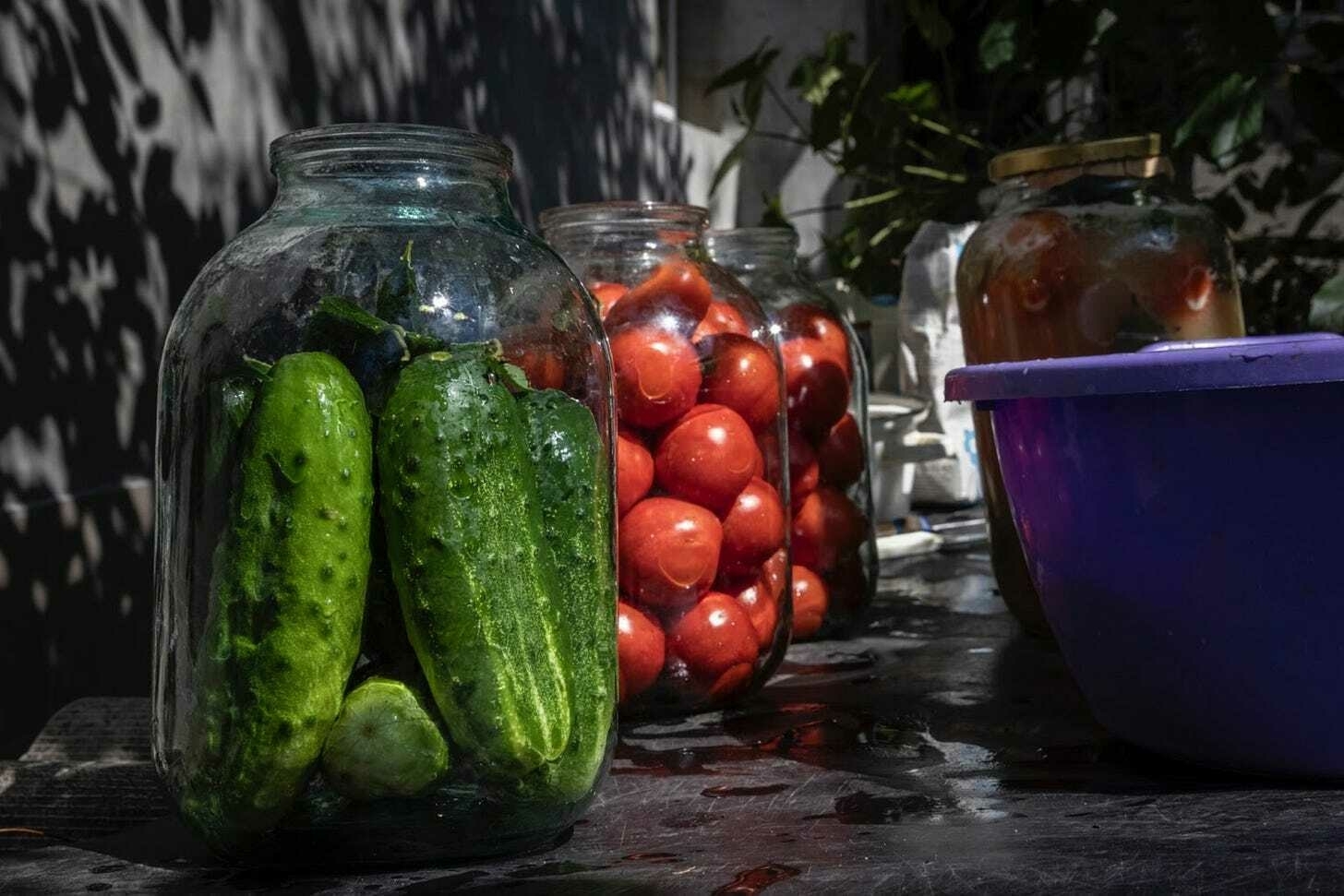
Traditional Ukrainian pickling season starts in mid summer as fruit and vegetables grow ripe in mineral rich soil and the home-grown produce is harvested and preserved in large jars. (Photo by Ed Ram/Getty Images). “It becomes clear why all families, Ukrainian ones, had such fantastic winter preparations,” Oles said, adding that they all kept jars of pickles, fermented foods, jam, and jelly in storage. “And these jars were in incredible numbers, you couldn't eat them all.”
Oles’ grandmother even stored jars filled with every “imaginable and unimaginable” type of fruit for years. Nowadays, even with access to supermarkets, Ukrainians continue to store food this way. The majority of Ukrainians living in villages, in houses with cellars, use this method to prepare for winter.
A Ukrainian family that Oles knows, who has lived in Geneva for the past 20 years, also stores food in preparation for winter.
Dried cherries are one of the reasons why Oles’ family survived during the Holodomor — a habit many Ukrainians have continued to use since. They gather vegetables and plants during the spring and summer, and freeze or dry them to store for the winter.
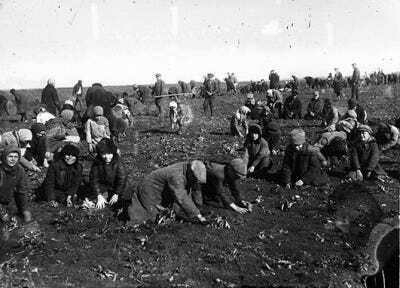
Children picking frozen potatoes on a collective farm field in the village of Udachne, Donetsk region, 1933. (Source: ЦДКФФА України імені Г. С. Пшеничного). Ukraine harvests approximately 18 tons of potatoes annually, with only two percent of these being produced by commercial and private enterprises. One-third of it is stored in the cellars of Ukrainians, and often goes uneaten for years.
During the winter months of the Holodomor, children would gather potatoes, both frozen and rotten, that were left over from the harvest, and their families would cook surrogate food – food substitutes made from non-traditional or inedible ingredients – with them. For example, traditional pancakes were made of potato starch or peels.
“I remember this old tradition of my grandmother and her two brothers, when other people would come – I was just amazed at how much food they cooked,” Oles said. “There were mostly borscht, sometimes soup, always two meat dishes, salads, and at least two cakes.”
At a certain point, amid the food shortages, Ukrainians began to prioritize the nutritional value of each meal. In 1939, the book ‘On Tasty and Healthy Food’ was published. The purpose was to educate people about the nutritional value of products, its calorie content, and cost.
As a result, Soviet dishes, such as Olivier and crab salad, began to gain popularity. The salads contained boiled eggs, potatoes, vegetables, rice, mayonnaise, and sausages — cheaper and of lower quality than meat.
Even 90 years later, some descendants of Holodomor survivors are developing eating disorders amid the fears and misconceptions imposed on them.
Other Ukrainians with ancestors who survived the famine have a higher risk of developing type 2 diabetes. Examining more than 10 million Ukrainians born in the 1930s, a scientific study found that exposure to famine during early childhood more than doubled the chances for developing type 2 diabetes in later life.
To this day, some people still struggle to discuss the famine.
“I know that in many families they did not want to or did not like to remember these events,” Oles said. “My mother did not like it either. But my grandmother did not hide it.”
It takes a great deal of self-reflection to see how context becomes character.
But for every preserved jar still sitting in dark Ukrainian cellars, for every piece of stale bread carefully repurposed for later, is a story of survival.
NEWS OF THE DAY:
Good morning to readers; Kyiv remains in Ukrainian hands.
U.S. MAY SEND UKRAINIANS TO GITMO: This week, the U.S. may begin relocating thousands of foreigners who are staying in the country illegally, The Washington Post reported.
They will likely be sent to the U.S. military base in Guantanamo, Cuba. Among them are citizens of allied countries such as Ukraine, the U.K., Italy, France, Germany and Belgium
The Trump administration is unlikely to inform the allied governments before this sort of forced relocation. Guantanamo Bay is known as a prison for terrorism suspects and others captured after the events of 9/11. In January, Trump stated that he would move up to 30,000 migrants there.
‘OPERATION SPIDER WEB’ CARRIED OUT WITH UNIQUE DRONES: SBU engineers developed unique drones specifically for ‘Operation Spiderweb,’ Babel reported. Operators could remotely control the drones in real time from thousands of kilometers away from Ukraine’s state border, as well as bypass Russian air defense systems.
According to SBU claims, these drones were able to strike approximately 34% of Russia’s strategic aviation, thereby weakening Russia’s capacity to deliver massive strikes on Ukrainian cities.
RUSSIAN SPY DETAINED IN POLAND: A Polish citizen has been arrested on suspicion of spying for Russia, the Polish prosecutor’s office reported.
He had been transmitting information to Russian intelligence services from February 2024 to April 2025. This included data on infrastructure critical to Poland’s defense. The disclosure of this information allegedly posed a serious threat to the country’s national security.
This is not the first time Russian spies have been exposed in Poland. They have reportedly been carrying out sabotage attacks on Polish territory, directed by Minsk and Moscow.
DRAKONCHIK OF WAR:
Today we have a drakonchik of war (a diminutive of ‘dragon’ in Ukrainian) from our reader Anna Bowles!
Whenever she comes to Ukraine, he sits on the windowsill, ready to spit fire at any drones or missiles that might dare to approach the building.
Stay safe out there.
Best,
Tim -
NATO summit statement omits Ukraine's entry bid, $40 billion pledge, Bloomberg reports
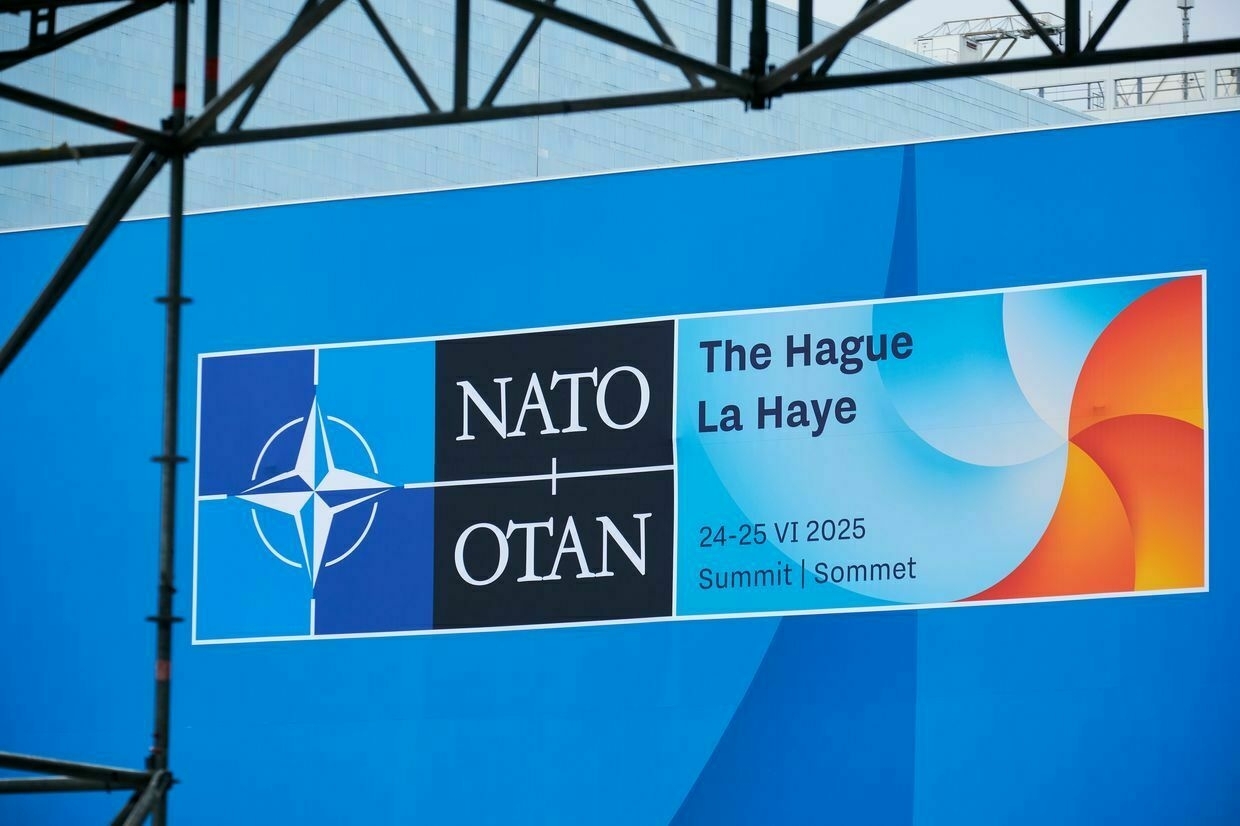
A one-page draft of a joint declaration for the upcoming NATO summit omits Ukraine’s membership aspirations and last year’s pledge of over $40 billion in support, Bloomberg reported on June 11 after reviewing the draft.
This news signals that, for the first time since 2022, Russia’s war against Ukraine will not be the chief focus of the annual NATO meeting, which is taking place on June 24-25 in The Hague.
The unusually brief document recognizes Russia as a threat to NATO but not as an aggressor in Ukraine. It also does not mention China, Bloomberg reported.
The communique of the 2024 summit in Washington named Beijing as a “decisive enabler” of Russia’s war against Ukraine. Last year’s gathering also included a declaration that Ukraine’s path to NATO is “irreversible” and promised more than $40 billion in additional military aid.
This year, the document will solely focus on defense spending, as U.S. President Donald Trump pushes NATO partners to hike the military expenditure benchmark from 2% to 5% of GDP.
The final version of the statement can still change, Bloomberg reported.
The brevity of the communique and the summit itself, as well as the decreased focus on Ukraine, stems from the effort to avoid conflict between Trump and European allies.
In a sharp break from former U.S. President Joe Biden, the Trump administration has not approved any new military aid packages to Ukraine and signaled its intent to reduce assistance for Kyiv in the next year’s budget.
The U.S. president initially vowed to broker a peace deal between Kyiv and Moscow but became increasingly less engaged in the process as the negotiations stalled and Russia only intensified its attacks against Ukraine.
According to Bloomberg, NATO allies will pledge to allocate at least 3.5% of GDP to defense needs and 1.5% to protecting infrastructure and civil preparedness by 2032. Member states will also consider counting their contributions to Ukraine as part of the new defense spending targets, the news outlet reported.
The summit was preceded by rumors that President Volodymyr Zelensky would not be invited to participate for the first time due to U.S. opposition.
Later, the speculations were dispelled after the Dutch media reported that NATO Secretary General Mark Rutte had invited the Ukrainian leader to attend.
As Russia inches closer to Dnipropetrovsk Oblast, new Ukrainian region might soon be at warMoscow said its troops had crossed into Dnipropetrovsk Oblast and were conducting offensive operations in the region, a claim Kyiv quickly denied as “Russian disinformation.” Russian troops have been pushing toward Dnipropetrovsk Oblast for months, trying to solidify the southern flank to capture Pokrovsk and the remaining parts of theThe Kyiv IndependentAsami Terajima
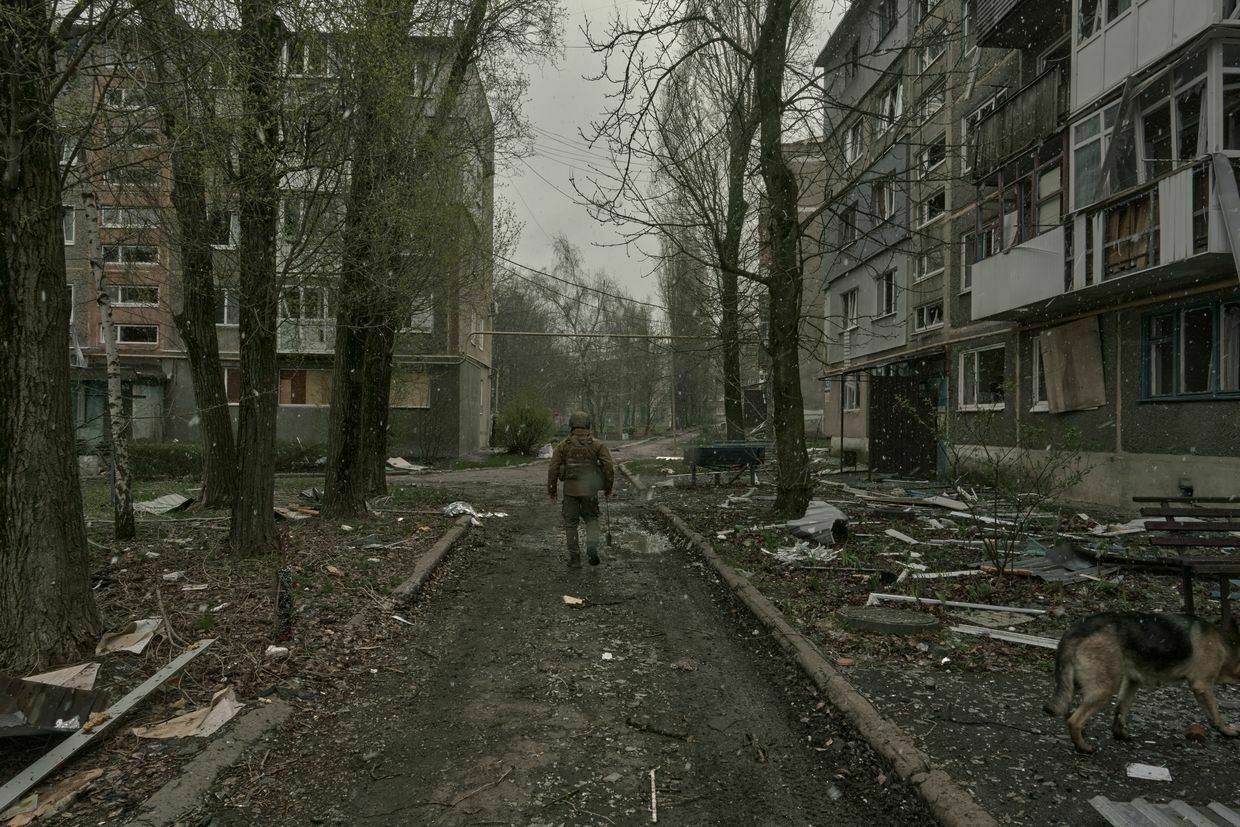
-
Ukrainians among foreign nationals in US targeted for transfer to Guantanamo, WP reports

The Trump administration is preparing to transfer thousands of undocumented foreign nationals, including Ukrainian citizens, to the U.S. military detention facility at Guantanamo Bay in Cuba, the Washington Post reported on June 10, citing undisclosed U.S. official sources.
The infamous prison facility was established by the Bush administration in 2002 to hold suspected terrorists amid the War on Terror. Its operations attracted broad criticism for reports of torture, abuse, and for the facility’s position outside of normal legal frameworks.
The detainees reportedly include individuals from countries such as the United Kingdom, France, Germany, and Ukraine. The move is part of a broader plan to free up capacity at overcrowded domestic facilities.
U.S. officials told the Washington Post that there were no plans to notify the governments of these citizens before their transfer to the facility.
Medical screenings for 9,000 individuals are reportedly underway to assess whether they are physically fit for transfer. Internal documents reviewed by the Washington Post suggest the facility is currently underutilized and could accommodate more detainees.
The Homeland Security Department and the White House declined to comment for the Washington Post on the reporting, which is based on information from multiple anonymous officials and internal documents. A defense official maintained that current operations at the base remain “unchanged” and refused to speculate on “future missions."
Some home countries of the targeted detainees have previously expressed willingness to repatriate their nationals, but have been deemed too slow by U.S. immigration authorities.
The White House has not confirmed the number of Ukrainians affected, and Ukraine’s Foreign Ministry has yet to comment.
The plan to revive Guantanamo as a holding site for mass immigration enforcement is part of President Donald Trump’s broader pledge to ramp up deportations and arrests, with a goal of at least 3,000 arrests daily, according to White House officials.
Previously, the media reported that the Trump administration planned to revoke the temporary legal status of 240,000 Ukrainian refugees who fled Russia’s invasion.
According to a March 6 article by Reuters, the administration aims to cancel refugees' immigration status granted under the Biden-era Uniting for Ukraine program, potentially exposing them to deportation. Although the White House denied the claim, internal Immigration and Customs Enforcement (ICE) documents suggest preparations for fast-tracked removals are underway.
Ukrainian boxer Usyk invites Trump to his home to see Russia’s war firsthand, BBC reports“I advise American President Donald Trump, go to Ukraine and live in my house one week. Only one week … Watch what’s going on every night,” the heavyweight champion said in an interview with BBC Sport.The Kyiv IndependentAbbey Fenbert
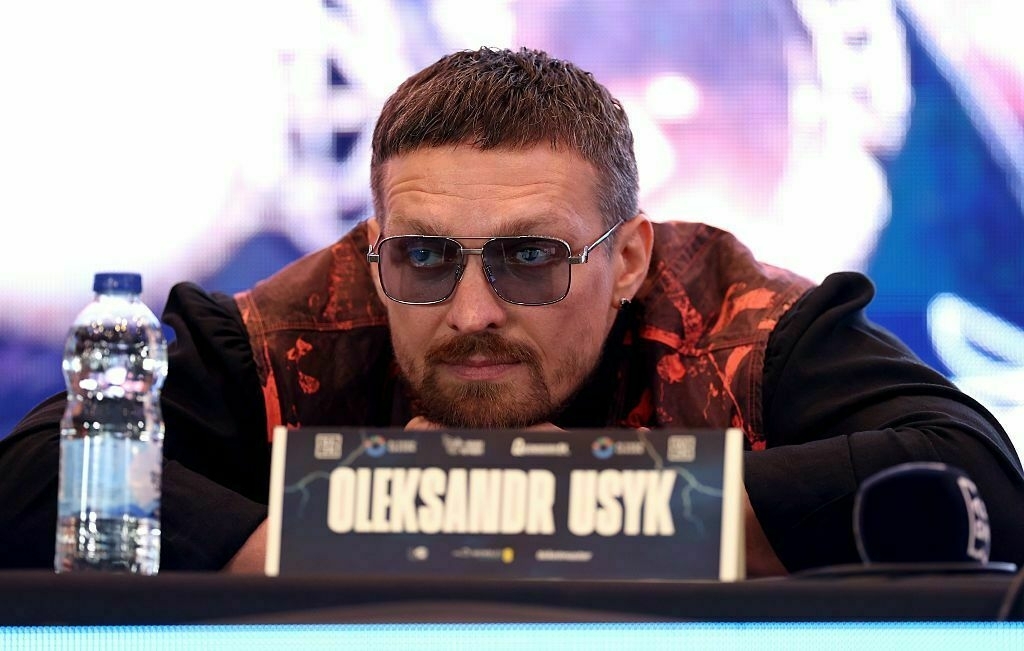
-
US-Russia talks to be held in Moscow 'very soon,' Russian ambassador claims
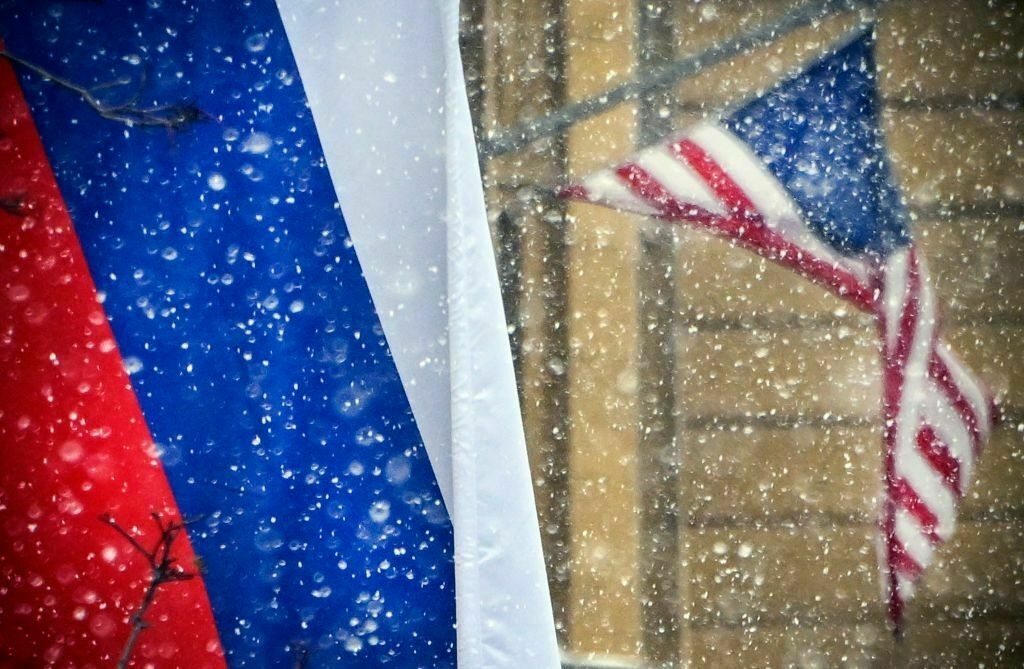
Russian and U.S. delegations will hold talks in Moscow in the near future, Russian Ambassador to the United States Alexander Darchiev said in an interview with state-controlled news agency TASS on June 10.
The meeting would follow a series of previous discussions between the U.S. and Russia that focused on peace efforts in Ukraine and the resumption of bilateral ties.
The first talks since the start of Russia’s full-scale war against Ukraine took place on Feb. 18 in Riyadh, where the sides discussed bilateral relations, a potential presidential meeting, and ending the war.
“I can confirm that the next round of negotiations between the delegations will take place very soon in Moscow,” Darchiev said.
The ambassador noted that during the previous round of talks on April 10 in Istanbul, the two sides agreed to move future consultations to their respective capitals.
The U.S. State Department described the April 10 talks in Istanbul as having a “constructive approach.” The closed-door consultations lasted about six hours and focused on ensuring stable banking services for diplomatic missions. Both delegations exchanged notes on the issue and agreed to continue discussions.
Darchiev also said that Russia is aiming for a model of “non-confrontational coexistence” with the United States and confirmed that the parties have launched negotiations on the return of confiscated Russian diplomatic property.
Other rounds of talks between U.S. and Russia occurred in Istanbul on Feb. 27 and April 10, focusing on diplomatic mission operations and movement of diplomats.
U.S. and Russian delegations also held a 12-hour closed-door session in Riyadh on March 24. The talks centered on a potential ceasefire in the Black Sea and broader military de-escalation.
The diplomatic push continues amid efforts by U.S. President Donald Trump to broker a ceasefire and peace agreement in Ukraine. Trump suggested on June 5 that it may be better to let the conflict continue for now, likening the war to a fight between children that should not be interrupted too quickly.
Kyiv and its allies remain skeptical of Trump’s approach toward peace efforts. President Volodymyr Zelensky has repeatedly called for stronger U.S. action and warned that “America’s silence, and the silence of others around the world, only encourages (Russian President Vladimir) Putin."
A bipartisan sanctions bill, targeting countries that purchase Russian oil and uranium, is awaiting approval in Congress.
Trump quietly pressuring Senate to weaken Russia sanctions, WSJ reportsThe White House reportedly asked Sen. Graham to insert waivers into the bill allowing Trump to choose which entities get sanctioned and changing the word “shall” to “may.”The Kyiv IndependentAbbey Fenbert
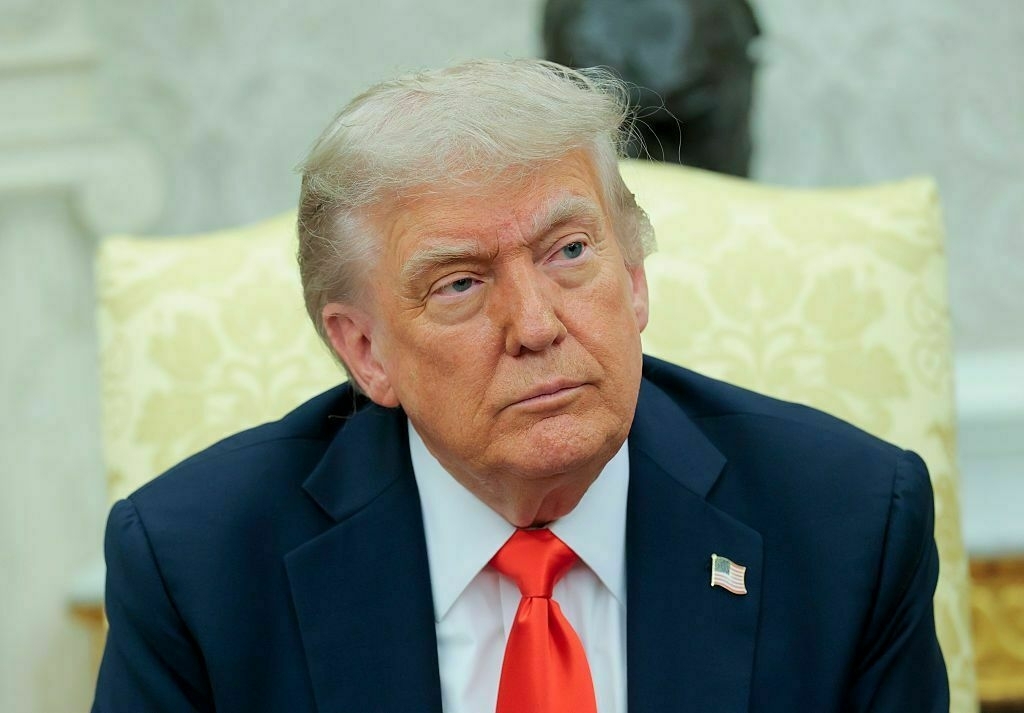
-
US to cut military aid to Ukraine, Hegseth says
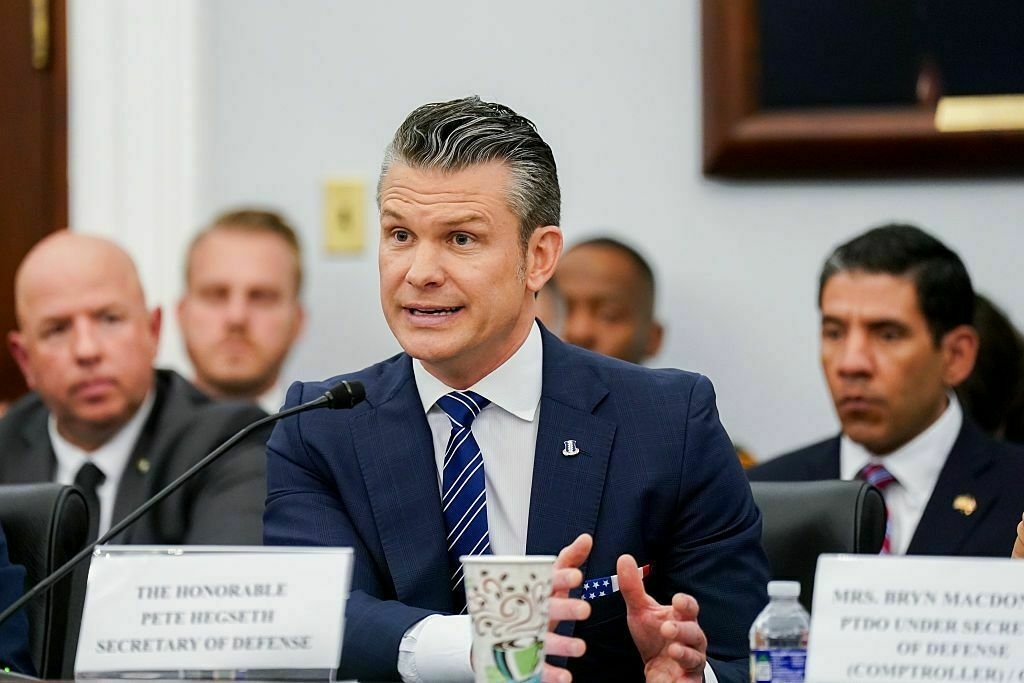
The United States will reduce funding allocated for military assistance to Ukraine in its upcoming defense budget, U.S. Defense Secretary Pete Hegseth said in a congressional hearing on June 10.
“It is a reduction in this budget,” Hegseth told lawmakers in the U.S. House of Representatives.
“This administration takes a very different view of that conflict. We believe that a negotiated peaceful settlement is in the best interest of both parties and our nation’s interests, especially with all the competing interests around the globe."
The Pentagon has not yet released the full documentation regarding its 2026 budget. According to Hegseth, the pending budget “provides a historic level of funding for military readiness, putting (U.S.) warfighters and their needs first."
Hegseth did not disclose details as to the extent of the funding cuts to Ukraine.
The Pentagon’s announcement follows weeks of intense Russian attacks on Ukrainian cities, including record-breaking drone strikes against Kyiv. Amid the escalating aerial assaults, President Volodymyr Zelensky has urged the U.S. to support Ukraine with critical air defense systems.
Ukraine has offered to buy these systems outright rather than requesting military aid.
Since Russia launched its full-scale invasion of Ukraine in February 2022, the U.S. has provided Kyiv with over $66 billion in defense support. But U.S. President Donald Trump halted the approval of new military aid packages to Kyiv when he began his second term in January.
Under Trump’s leadership, Washington’s policy towards Ukraine shifted dramatically. Calls to support Ukraine’s independence and sovereignty have been replaced with demands that Ukraine make a deal with Russia, and Trump has at times lashed out at Zelensky.
After the leaders' infamous clash during an Oval Office meeting in February, the U.S. temporarily suspended all military aid to Ukraine. Hegseth, who ordered the temporary halt, did not attend the most recent Ukraine Defense Contact Group meeting on June 4 — the first such absence by a U.S. defense chief since the beginning of the full-scale invasion.
Zelensky also confirmed in a recent interview that the U.S. diverted 20,000 anti-drone missiles originally intended for Ukraine to American forces in the Middle East.
‘We love our country’ — As Russia steps up its attacks, Kyiv residents choose to staySales manager Victoriia Nikishyna was sheltering with her cat in the stairwell when a Russian drone struck a residential building in Kyiv, leaving several rooms in her apartment without windows. “We’re still holding on. We haven’t fully processed what happened,” Nikishyna told the Kyiv Independent as State EmergencyThe Kyiv IndependentKateryna Denisova
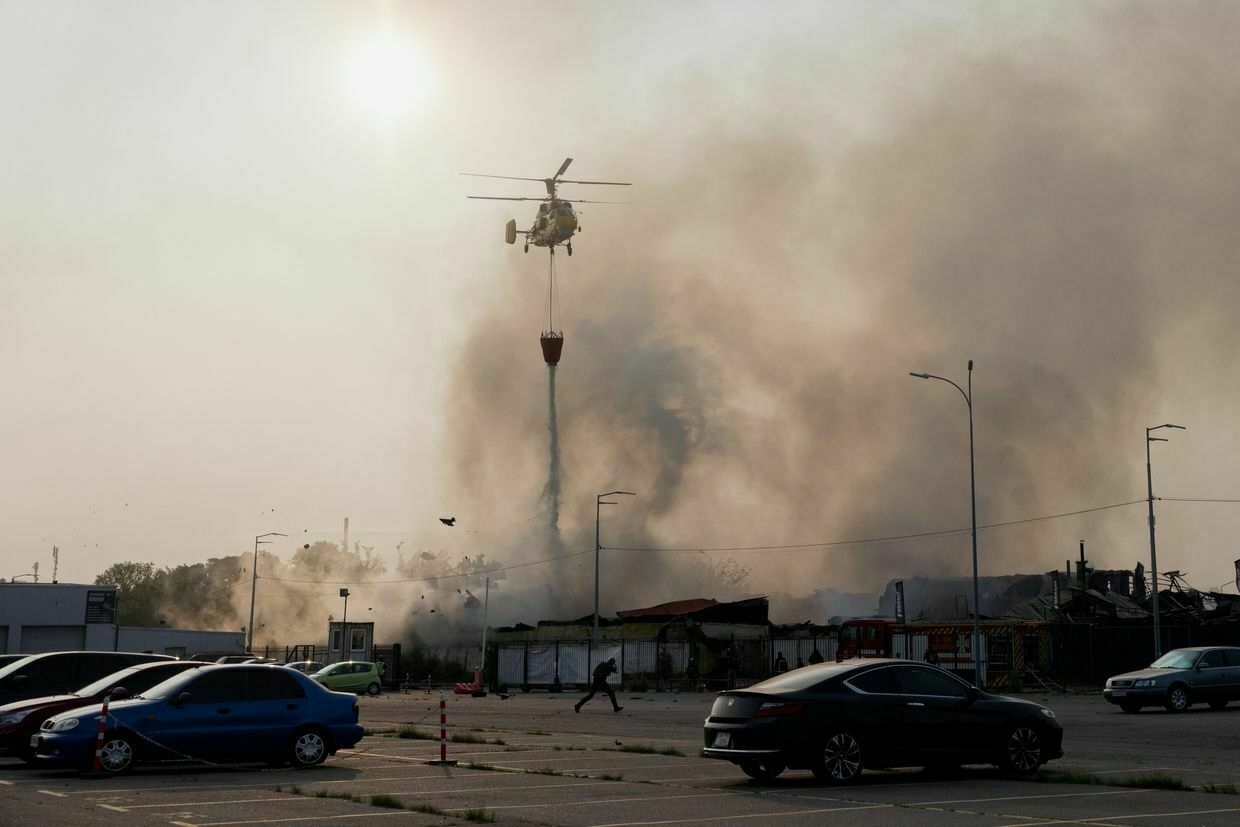
-
Ukraine war latest: Russia carries out one of largest attacks against Kyiv; second group of Ukrainian POWs comes back home under Istanbul deal
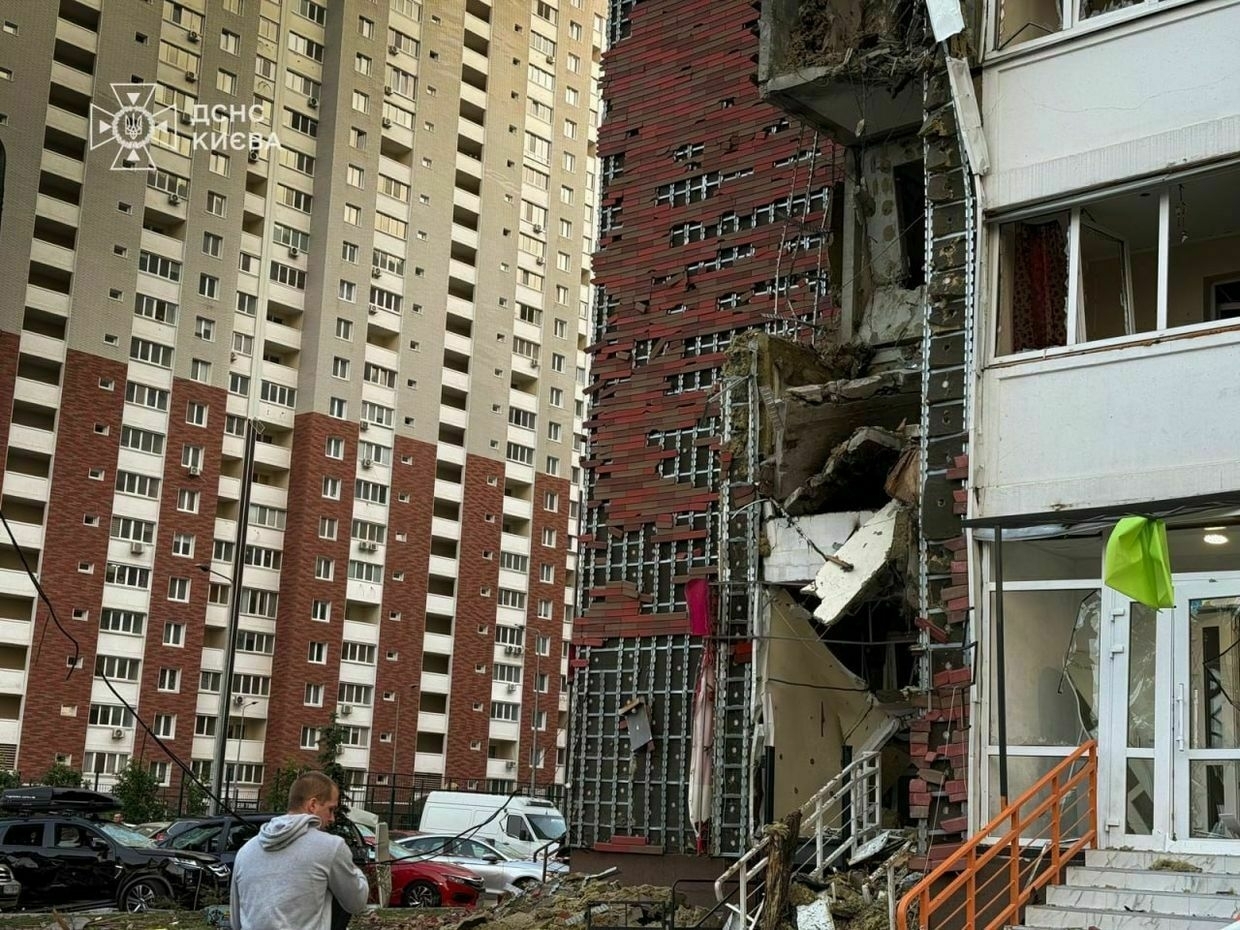
Key developments on June 10:
- In one of largest attacks on Ukraine’s capital, Russian barrage hits Kyiv, Odesa, kills 3, injures 12
- Ukraine, Russia conduct second prisoner swap under Istanbul deal
- Russia significantly improved North Korea’s shoddy KN-23 ballistic missiles, Ukraine’s Budanov says
- EU unveils 18th package of sanctions against Russia, targeting energy, banking, oil
- Over 40% of Ukrainians willing to compromise on ‘de facto’ recognition of Russian occupation for peace, poll shows
Kyiv and Odesa came under another mass Russian attack in the early hours of June 10, involving ballistic missiles and drones.
Russia launched 315 Shahed-type attack drones and decoys against Ukraine overnight, as well as two North Korean KN-23 ballistic missiles and five Iskander-K cruise missiles, primarily targeting Kyiv, the Air Force reported.
Ukrainian air defenses shot down all seven missiles and 213 attack drones. According to the statement, 64 drones disappeared from radars or were intercepted by electronic warfare systems.
A woman was killed and four other people were injured in Kyiv, according to local authorities. Meanwhile, in the southern city of Odesa, two men were killed and at least eight civilians were wounded in the attack. One more person suffered shock during the attack on Odesa, authorities reported.
According to President Volodymyr Zelensky, the attack was one of the largest on Kyiv during the full-scale war.
“Russian missile and Shahed strikes drown out the efforts of the United States and others around the world to force Russia into peace,” he wrote on X.
“For yet another night, instead of a ceasefire, there were massive strikes with Shahed drones, cruise and ballistic missiles."
‘We love our country’ — As Russia steps up its attacks, Kyiv residents choose to staySales manager Victoriia Nikishyna was sheltering with her cat in the stairwell when a Russian drone struck a residential building in Kyiv, leaving several rooms in her apartment without windows. “We’re still holding on. We haven’t fully processed what happened,” Nikishyna told the Kyiv Independent as State EmergencyThe Kyiv IndependentKateryna Denisova
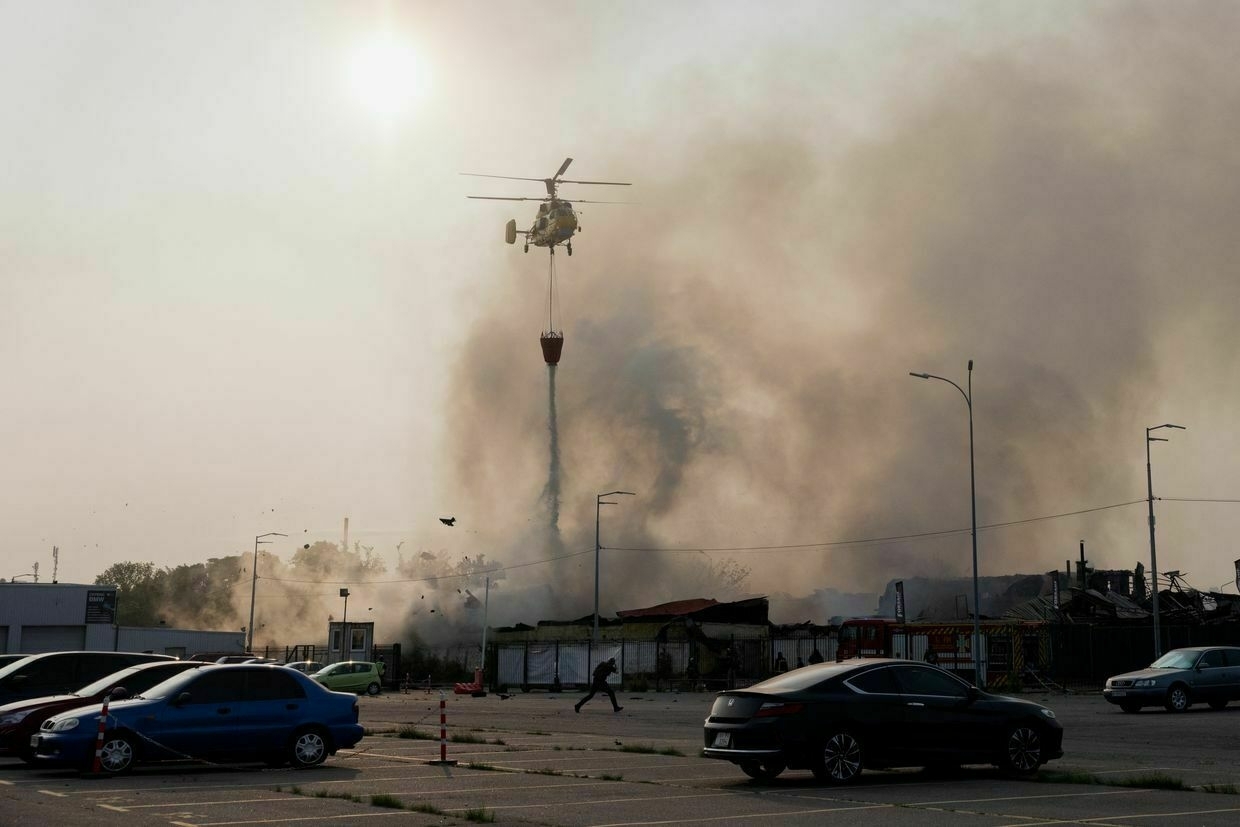
According to Culture Minister Mykola Tochytskyi, the strike also damaged St. Sophia Cathedral in Kyiv. The UNESCO World Heritage site, dating back to the 11th century, is one of Ukraine’s most significant religious and cultural landmarks.
The management of St. Sophia Cathedral has informed UNESCO about the damage caused to the historic site by a recent Russian airstrike, according to the reserve’s general director, Nelia Kukovalska. Speaking to Suspilne, she said that the blast wave damaged the cornice of the cathedral’s central apse.
In Odesa, a film studio and medical facilities, including a maternity hospital, were damaged.
A Russian attack caused damage to a maternity hospital in Odesa. At the time of the attack, 85 adults and 22 children were inside, but no staff or patients were injured as everyone was in the shelter, facility director Iryna Golovatyuk-Yuzefpolskaya told Suspilne.
Ukraine, Russia conduct second prisoner swap under Istanbul dealUkraine and Russia carried out another prisoner exchange on June 10, concluding the second phase of an agreement reached during the most recent round of peace talks in Istanbul, President Volodymyr Zelensky announced.
"We continue the return of our people, as agreed in Istanbul," Zelensky wrote on X, confirming the exchange without immediately disclosing the number of returnees.
"Today marks the first stage of the return of our injured and severely wounded warriors from Russian captivity. All of them require immediate medical attention. This is an important humanitarian act," he added.
The Coordination Headquarters for the Treatment of Prisoners of War said the second group of released prisoners includes personnel from Ukraine's Navy, Ground Forces, National Guard, Unmanned Systems Forces, Air Assault Forces, Border Guard Service, Territorial Defense, and State Special Transport Service.
Ukraine managed to release officers, soldiers, and non-commissioned officers. Among the freed Ukrainian soldiers are those who are seriously ill, as well as those who defended the city of Mariupol in Donetsk Oblast and spent more than three years in captivity.
"All of the defenders released today have severe injuries and serious illnesses: amputated limbs, vision problems, abscesses, infections, trauma, shrapnel wounds, and chronic diseases. Some of the liberated have been diagnosed with hepatitis and tuberculosis," the headquarters' statement read.
The Russian Defense Ministry also said that it had received a second group of Russian prisoners of war who are now in Belarus. Moscow did not disclose the exchange details or the number of returnees.
The swap marks the second stage of the deal negotiated during the June 2 negotiations in Turkey — the second direct peace dialogue between Kyiv and Moscow since 2022.
Russia significantly improved North Korea's shoddy KN-23 ballistic missiles, Ukraine's Budanov saysRussia helped significantly improve North Korea's KN-23 ballistic missiles, also known as Hwasong-11, after receiving the first inaccurate batch from Pyongyang, Kyrylo Budanov, Ukraine's military intelligence (HUR) chief, said in an interview with The War Zone published on June 9.
North Korea has supplied Russia with ammunition, ballistic missiles, and soldiers since the beginning of the full-scale invasion.
KN-23 ballistic missiles initially flew with a deviation of a few kilometers and around half fired at Ukraine by Russia malfunctioned and exploded in mid-air, Reuters reported in May 2024, citing Ukraine's Prosecutor General's Office.
But now they are hitting their targets, Budanov said, without specifying what exactly was changed in the North Korean missiles.
"The KN-23 missiles that were delivered in the very beginning, now it's an absolutely different missile in (terms) of their technical characteristics. The accuracy has increased many times," Budanov said.
"This is the result of the common work of Russian and North Korean specialists. Also, there is the modernization of long-range air-to-air missiles, particular technologies on submarines, and unfortunately, ballistic missiles, which can carry nuclear payloads," he added.
According to Budanov, Russia has also agreed to help North Korea begin domestic production of Shahed-type kamikaze drones.
Pyongyang has ratcheted up its support for Russia following Russian President Vladimir Putin's signing of a mutual defense pact with North Korean leader Kim Jong Un in June 2024.
As Russia inches closer to Dnipropetrovsk Oblast, new Ukrainian region might soon be at warMoscow said its troops had crossed into Dnipropetrovsk Oblast and were conducting offensive operations in the region, a claim Kyiv quickly denied as “Russian disinformation.” Russian troops have been pushing toward Dnipropetrovsk Oblast for months, trying to solidify the southern flank to capture Pokrovsk and the remaining parts of theThe Kyiv IndependentAsami Terajima
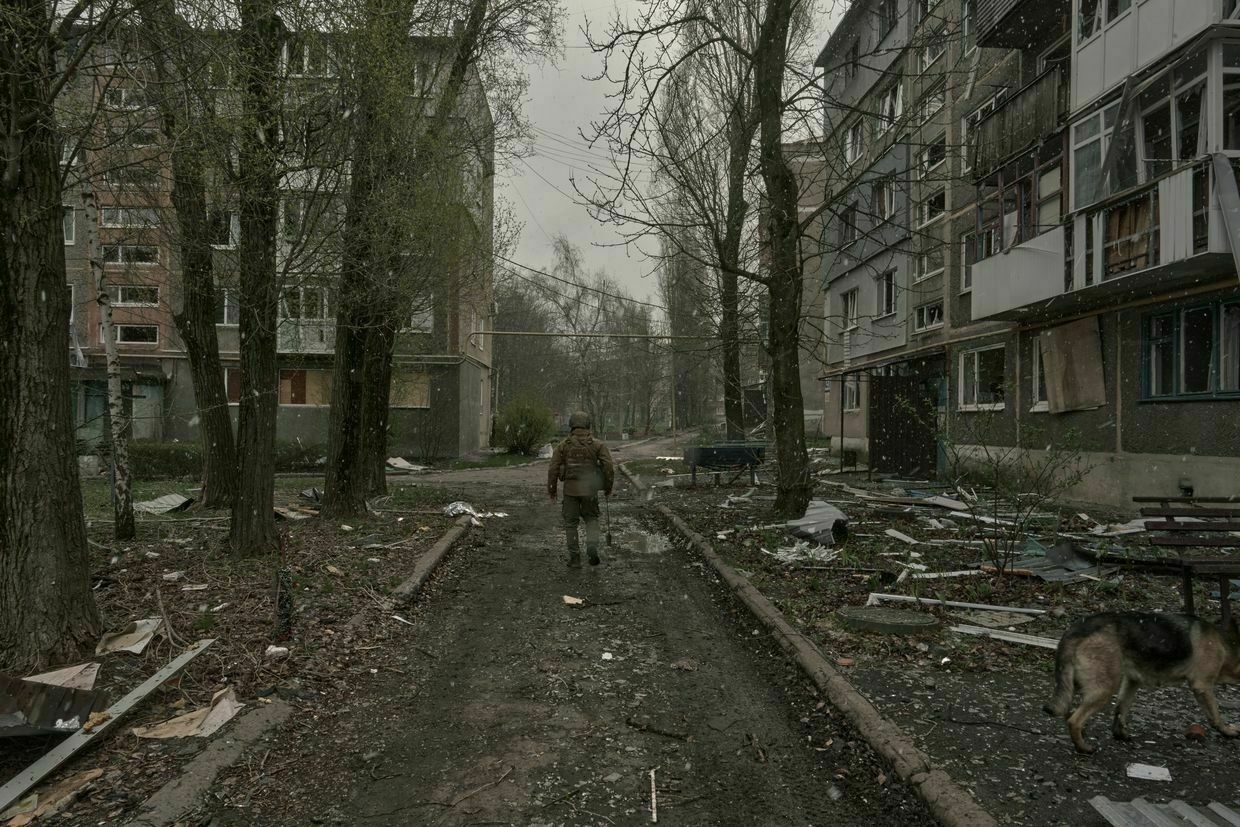
EU unveils 18th package of sanctions against Russia, targeting energy, banking, oilThe 18th package of European Union sanctions against Russia will include additional restrictions on energy, banking, oil, and other areas, European Commission President Ursula von der Leyen announced on June 10.
After the 17th package of sanctions against Russia came into effect on May 20, Ukraine's allies announced that the next package of restrictions was already in the works, after Moscow repeatedly refused to accept a ceasefire.
Russian troops also continue to advance slowly along the front line, approaching Ukraine's Dnipropetrovsk Oblast and moving deeper into Sumy Oblast.
"Russia's goal is not peace," von der Leyen said. "Strength is the only language that Russia will understand."
The EU has proposed for the first time a ban on transactions involving the Nord Stream 1 and Nord Stream 2 pipelines, as well as a reduction in the oil price cap from $60 to $45 per barrel, as one-third of Russia's government revenue still comes from oil exports, according to von der Leyen.
Von der Leyen added that the amendments to the oil price cap are a Group of Seven (G7) coalition measure, so it will be discussed at the G7 summit to be held on June 15-17 in Kananaskis County, located in the western province of Alberta, Canada.
The EU will also add 77 more shadow fleet vessels to comply with the cap to prevent Russia from circumventing sanctions and propose imposing a ban on imports of petroleum products made from Russian oil.
Another part of the sanctions will be aimed at the Russian banking sector, with the EU wanting to add 22 more Russian banks to the list of those who can no longer use the SWIFT international system.
The EU also proposes to extend the ban on transactions to financial operators in third countries that finance trade with Russia, bypassing sanctions, and to impose limitations on the Russian Direct Investment Fund, its subsidiaries, and investment projects.
Further EU restrictive measures will include a ban on exports worth more than 2.5 billion euros ($2.8 billion), which must deprive the Russian economy of critical technologies and industrial goods, von der Leyen said.
Machinery, metals, plastics, and chemicals used as raw materials for industry, as well as dual-use goods involved in the production of weapons and drones, will be affected, according to von der Leyen.
The European Commission President also emphasized that the EU wants its sanctions to be more effective. Thus, the EU would list another 22 Russian and foreign companies, including those from China and Belarus, providing direct or indirect support to Russia's military and industrial complex. These additions will bring the total number of sanctioned companies to over 800.
EU countries will start debating the proposal this week.
Key to Russia’s defeat lies in its economyAs the war in Ukraine grinds on, attention remains fixed on the battlefield. But Russia’s most vulnerable flank is not in the trenches — it’s in the treasury. The West, and especially the United States, holds economic levers that could push Vladimir Putin toward serious negotiations or even collapseThe Kyiv IndependentWojciech Jakóbik
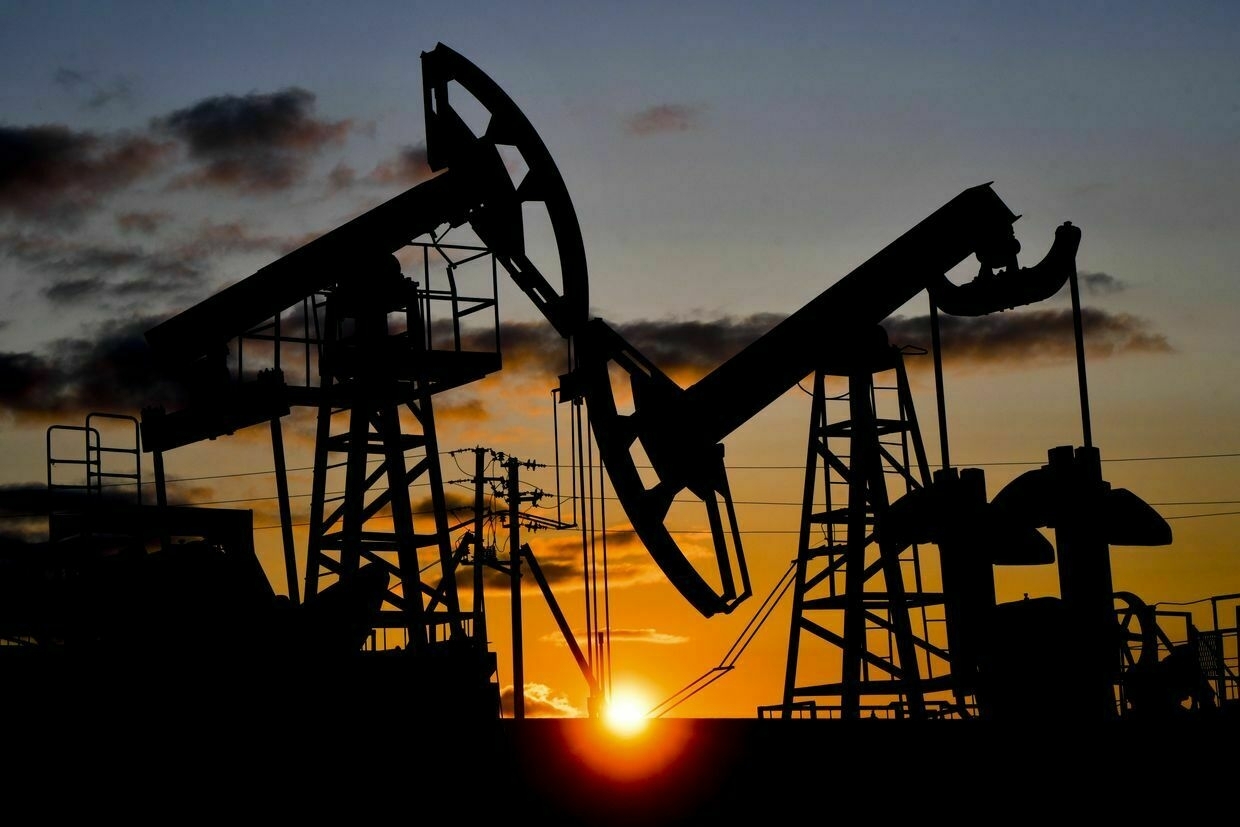
Over 40% of Ukrainians willing to compromise on 'de facto' recognition of Russian occupation for peace, poll showsSome 48% of Ukrainians "categorically" oppose even a de facto recognition of Russian control of the occupied Ukrainian territories to achieve peace, according to a poll by the Kyiv International Institute of Sociology (KIIS) published on June 10.
In turn, 43% of respondents said they would be willing to make the concession to reach a peace deal with Moscow, provided it does not include a formal, or de jure, recognition of the Russian control.
The news comes as Russia continues to push for territorial concessions from Ukraine as part of the ongoing peace talks.
The survey suggests that Ukrainians are even less ready to accept a de jure recognition of the Russian occupation – 68% of respondents said they are categorically against such a step, while 24% were open to it if it leads to peace.
The strongest opposition – 78% – was against handing over control of Ukrainian territories that Russia does not currently occupy. Only 15% of respondents were willing to make that compromise.
Russia currently occupies roughly 20% of Ukraine's territory. This includes the whole of Crimea occupied in 2014 and large parts of the Donetsk, Luhansk, Zaporizhzhia, and Kherson oblasts.
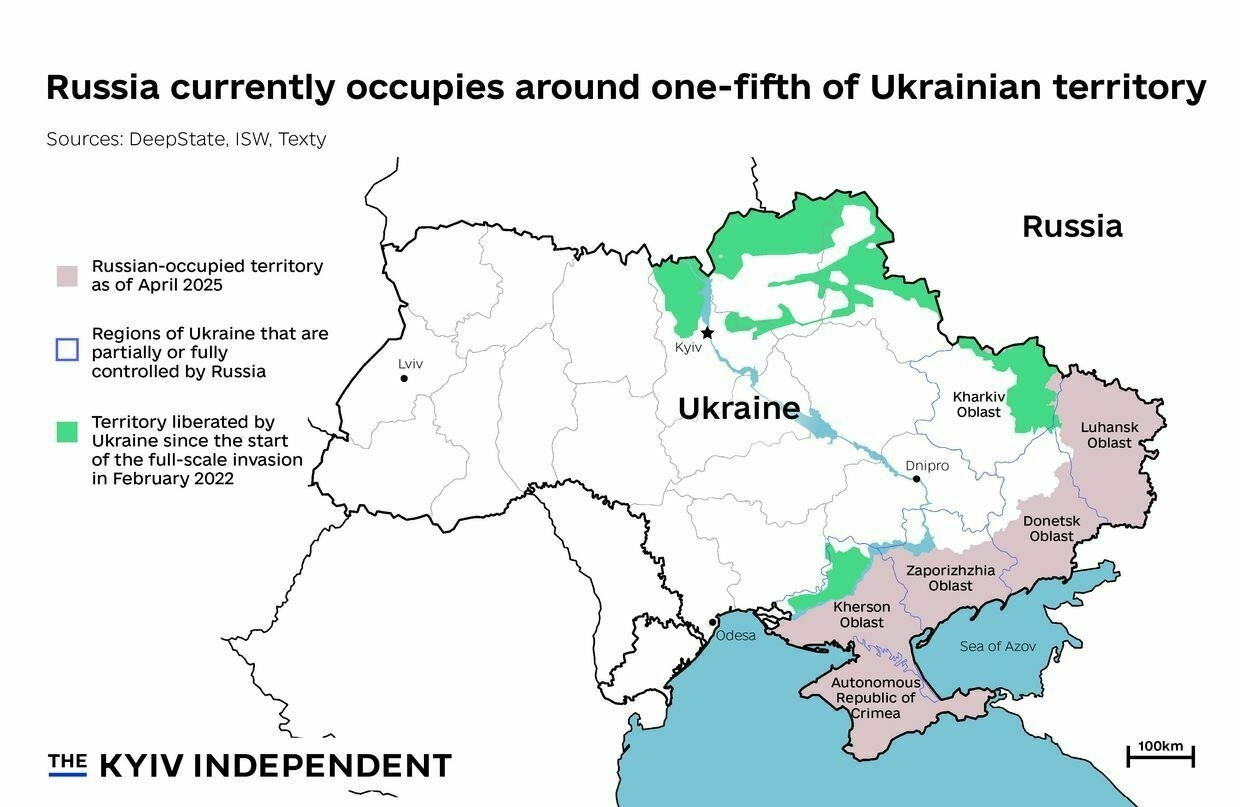
A map showing Russian-occupied parts of Ukraine as of 2025. (The Kyiv Independent) Moscow illegally declared the annexation of the latter four regions in 2022 and insists on Ukraine's full withdrawal from them as part of a peace deal, even though it does not control them completely.
The Kremlin is also pushing for a formal recognition of its hold over Ukrainian territories. While U.S. President Donald Trump has reportedly signalled a willingness to U.S. recognition of the Russian occupation of Crimea, Ukraine has rejected the step, as well as its withdrawal from the territory it currently holds.
The poll revealed that public opinion on territorial concessions has remained relatively stable over the past months.
When asked whether Ukraine should give up territories to achieve peace — without specifying a de facto or de jure recognition of the Russian occupation — 52% said Ukraine should not take the step under "any circumstances."
In comparison, 38% of respondents backed the compromise. These are almost the same figures as in December 2024, when 51% were opposed to the concession, while 38% were open to it.
"Our survey shows that the issue of territorial losses is extremely sensitive for Ukrainians and, in particular, how exactly 'territorial losses' are interpreted plays a significant role," said Anton Hrushetskyi, executive director of KIIS, in a statement.
"At the same time, this means that (un)readiness for territorial losses can become the subject of manipulation and information campaigns against Ukraine."
The poll was conducted between May 15 and June 3. It involved 2,004 adult residents of the Ukrainian-controlled territories who were interviewed by telephone. Only about 500 of them answered all four questions.
Note from the author:
Ukraine War Latest is put together by the Kyiv Independent news desk team, who keep you informed 24 hours a day, seven days a week. If you value our work and want to ensure we have the resources to continue, join the Kyiv Independent community.
-
Ukraine in talks with U.S. over $50 billion arms deal
Diplomatic discussions concerning arms purchases from the United States are actively underway, according to the Ukrainian Ministry of Foreign Affairs. This announcement comes as aid packages continue to arrive from the U.S.
Ukrainian Foreign Ministry representative, Heorhiy Tikhiy, spoke to the media on Tuesday, June 10, outlining Ukraine's ongoing dialogues with the United States regarding the acquisition of American weaponry. "Ukraine is actively engaging with the U.S. on acquiring American arms, including air defense systems like the Patriot missiles, and other critical resources they've been providing over the years," Tikhiy stated.
Expressing gratitude toward America, Tikhiy emphasized Ukraine's readiness to procure American arms via diverse funding sources.
In response to inquiries about current aid packages from the U.S., Tikhiy confirmed, "To my knowledge, those aid packages are indeed being delivered."
Additionally, the discussions on arms procurement also align with funding options devised under mineral resource agreements, as pointed out by Tikhiy.
Earlier this year, Ukrainian President Volodymyr Zelensky underscored the nation's intent to purchase $50 billion worth of U.S. weapons as a strategic security guarantee. He also said that Ukraine is ready to acquire 10 Patriot systems from the U.S. at a potential cost of $15 billion.
In contrast, former President Donald Trump delivered a stern response to Zelensky's comments on the Patriot systems: "He's always looking to purchase missiles. Listen, when you start a war, you gotta know you can win a war. You don't start a war against somebody that's 20 times your size and then hope that people give you some missiles.."
Trump's comments implied that Ukraine initiated the conflict with Russia. However, Ukraine anticipates continued U.S. arms sales despite such remarks, according to officials within the Ukrainian President's Office.
-
Russia admitted its 'peace memorandum' is an ultimatum Kyiv won't accept, Zelensky says
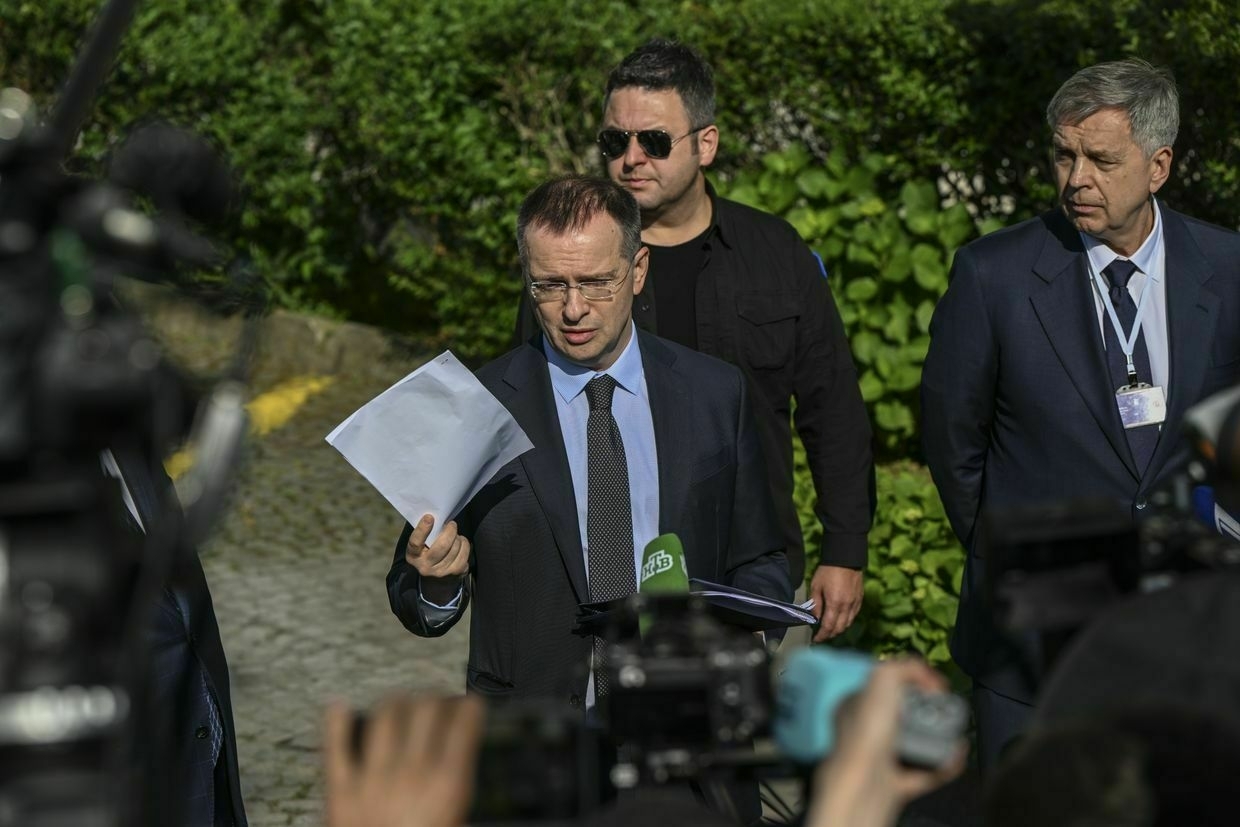
Russian negotiators told the Ukrainian delegation directly that their so-called “peace memorandum” is an ultimatum Kyiv cannot accept, President Volodymyr Zelensky said in an interview with Hungarian news outlet Valasz Online published on June 10.
“They even told our delegation: we know that our memorandum is an ultimatum, and you will not accept it,” Zelensky said. “Thus, the question is not the quality of the Istanbul format, but what to do about the Russians' lies."
Zelensky said Russia’s goal is to erode Western support for Ukraine and prolong negotiations while continuing military aggression.
The remarks follow the second round of direct peace talks in Istanbul on June 2, where the Kremlin submitted its memorandum listing conditions for a ceasefire.
According to Zelensky, the Ukrainian delegation in Istanbul had a mandate to negotiate humanitarian matters such as a ceasefire, prisoner exchanges, and the return of abducted children — but not the country’s sovereignty or territorial integrity.
“This is our own constitutional matter. It is my job to hold talks on territories — and (Russian President Vladimir) Putin’s, who seized them. I will not discuss my position on this with anyone else,” Zelensky said.
Russia’s so-called “peace memorandum” demands that Ukraine recognize Russia’s annexation of Crimea, as well as Kherson, Donetsk, Zaporizhzhia, and Luhansk oblasts — none of which are fully under Moscow’s control.
The Kremlin also insists on Ukraine's complete military withdrawal from these regions. Zelensky reaffirmed Ukraine's refusal to concede any occupied territory.
"We have also said repeatedly that if we receive adequate security guarantees preventing Putin from continuing the war, then we will have time to decide on territorial issues. By diplomatic means, not with weapons," he said.
Other Russian demands include Ukrainian neutrality, ending foreign military assistance, recognizing Russian as an official language, granting amnesty for pro-Russian collaborators, and prohibiting foreign troops, contradicting EU-backed peacekeeping proposals.
Ukraine's counterproposal in Istanbul included an all-for-all prisoner swap, the return of Ukrainian children abducted by Russia, the release of all civilians held in captivity, and freedom to pursue EU and NATO membership.
Kyiv also proposed using frozen Russian assets for reconstruction and said it would consider lifting certain sanctions if a ceasefire is achieved.
While no ceasefire or political breakthrough was achieved, negotiations resulted in key humanitarian agreements, including commitments to exchange prisoners of war (POWs) and the bodies of fallen soldiers.
As Ukraine and the U.S. continue to push for an unconditional ceasefire, Russia has maintained maximalist demands and rejected all such proposals.
U.S. President Donald Trump has reportedly expressed frustration with Moscow's intransigence and growing violence but has yet to impose any new sanctions on Russia.
In one of largest attacks on Ukraine’s capital, Russian barrage hits Kyiv, Odesa, kills 3, injures 12In the early hours of June 10, Kyiv and Odesa came under another mass Russian attack, involving ballistic missiles and drones.The Kyiv IndependentOlena Goncharova
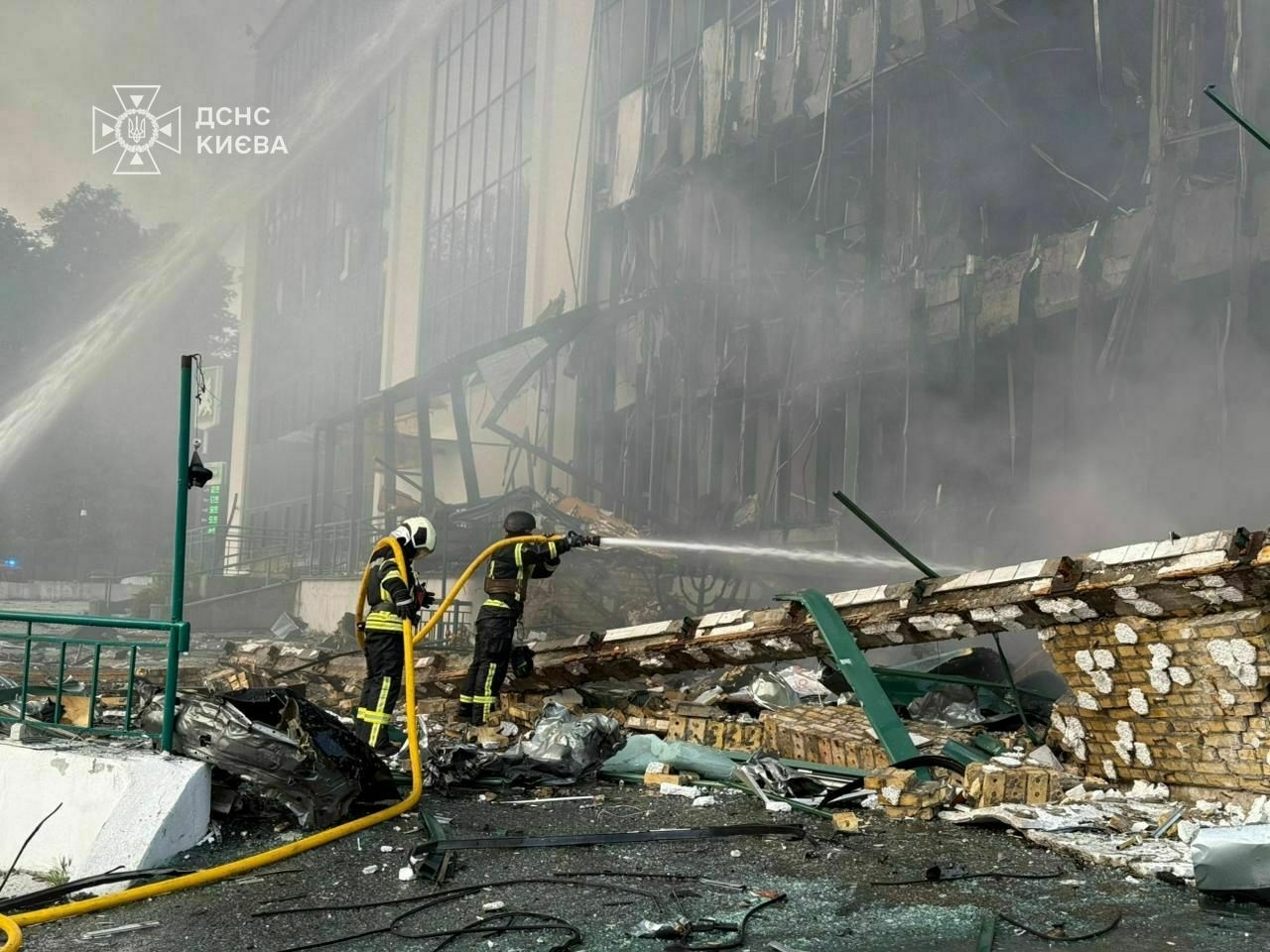
-
Israeli Foreign Ministry denies sending Patriot systems to Ukraine amid conflicting claims
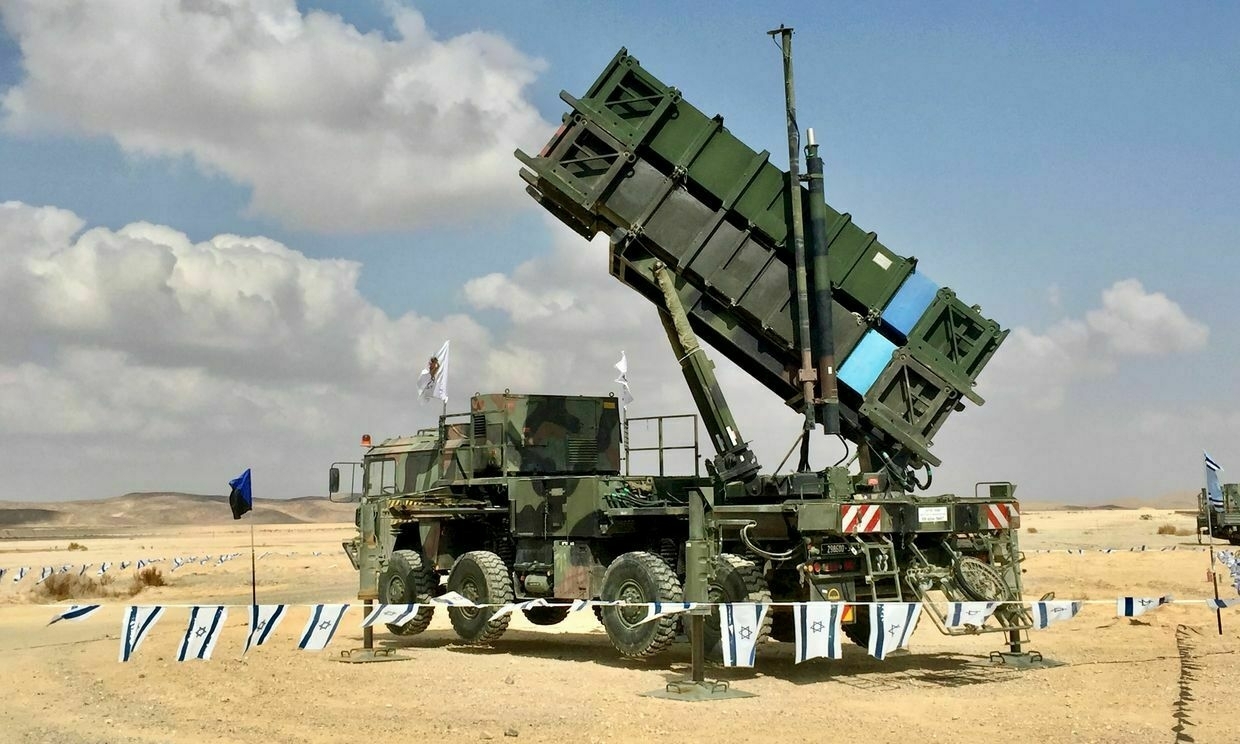
Israel has not transferred any Patriot air defense systems to Ukraine, the Israeli Foreign Ministry told Israeli news outlet Ynet on June 10, refuting earlier claims made by its own ambassador in Kyiv.
"Israel has not transferred such systems to Ukraine," the Israeli Foreign Ministry told Ynet in a statement.
The denial contrasts with statements made by Israeli Ambassador to Ukraine Michael Brodsky, who said in a recent interview that Israel had agreed to transfer retired Patriot missile systems — originally supplied by the U.S. in the 1990s — to Ukraine.
“The Patriot systems that we once received from the United States are now in Ukraine,” Brodsky said in an interview with Ukrainian blogger Marichka Dovbenko. “When people say that Israel did not help militarily, that is not true."
Kyiv has consistently pressed Western partners to bolster Ukraine’s air defenses, warning that its current capabilities are insufficient to counter the scale of Russian missile and drone assaults.
The Patriot system, a U.S.-made surface-to-air missile platform, is widely recognized for its high-precision detection, tracking, and interception of aircraft, cruise, and ballistic missiles.
Ukrainian Foreign Ministry spokesperson Heorhii Tykhyi has neither confirmed nor denied the delivery of Israeli Patriots to Ukraine.
“We welcome signals from Israel about its readiness to provide military assistance,” Tykhyi said at a press briefing.
The Kyiv Independent contacted the Israeli Embassy in Ukraine, the Israeli Foreign Ministry, and Ukraine's Presidential Office for comments but has yet to receive a response.
According to a May 4 reporting by the New York Times, which cited four current and former U.S. officials, at least one Patriot system that was previously deployed in Israel will be refurbished and sent to Ukraine.
It remains unclear what U.S. President Donald Trump's stance is on the decision or whether the move was initiated before he took office, during former President Joe Biden's administration.
President Volodymyr Zelensky has repeatedly underscored Kyiv's urgent need for more air defenses. Speaking to CBS News in April, he said Ukraine is prepared to buy 10 Patriot batteries for $15 billion to protect densely populated areas.
"We will find the money and pay for everything," Zelensky said, emphasizing Ukraine's intention to buy additional systems, rather than requesting them for free.
Despite Kyiv's appeals, Trump dismissed the request on April 14, accusing Zelensky of "always looking to purchase missiles."
Russia has carried out near-nightly aerial assaults in recent weeks. On June 9, Ukraine's Air Force said Russia launched 499 aerial weapons in a record overnight attack.
Ukraine has expressed solidarity with Israel following the deadly Hamas terrorist attack on October 7, 2023, condemning the violence and affirming its support for Israel's right to defend itself.
In one of largest attacks on Ukraine’s capital, Russian barrage hits Kyiv, Odesa, kills 3, injures 12In the early hours of June 10, Kyiv and Odesa came under another mass Russian attack, involving ballistic missiles and drones.The Kyiv IndependentOlena Goncharova
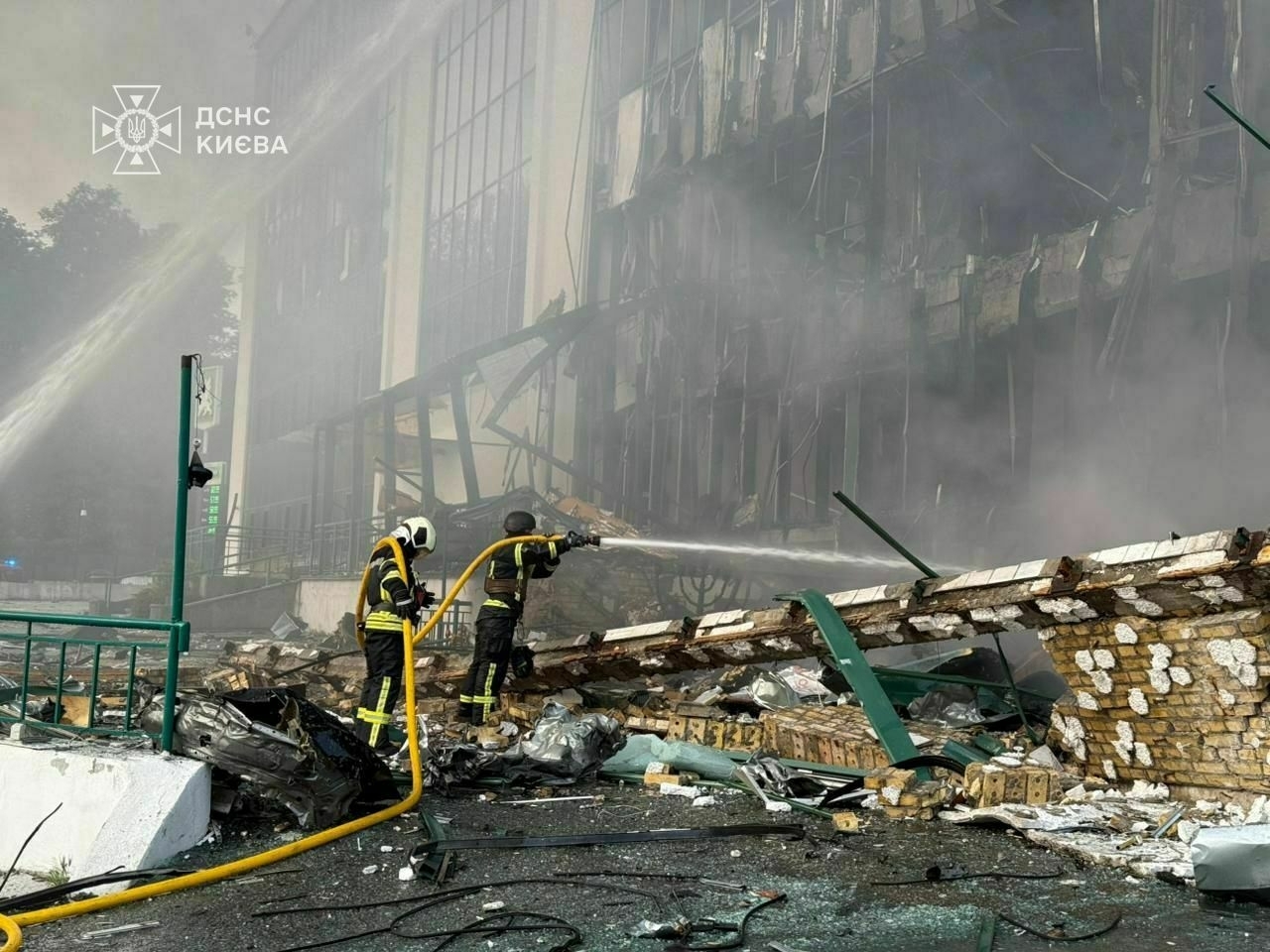
-
Over 40% of Ukrainians willing to compromise on 'de facto' recognition of Russian occupation for peace, poll shows
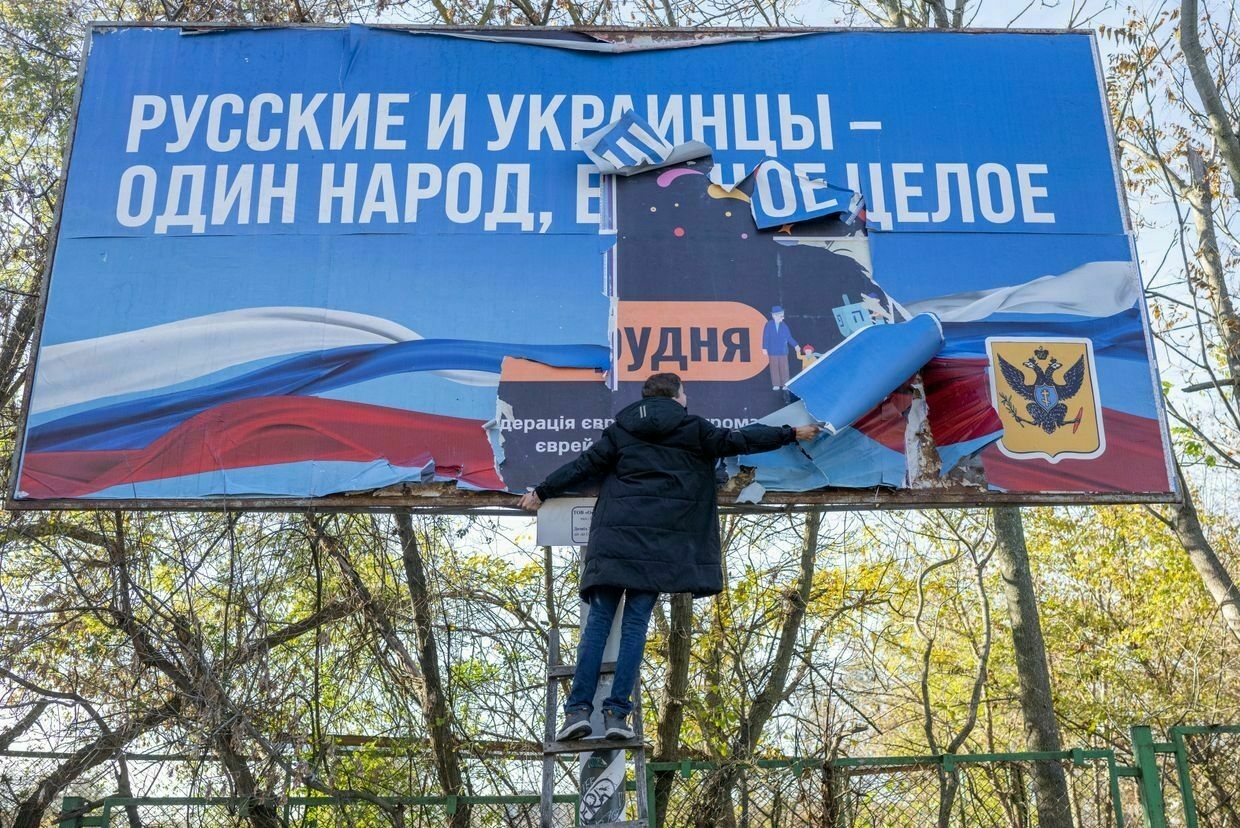
Some 48% of Ukrainians “categorically” oppose even a de facto recognition of Russian control of the occupied Ukrainian territories to achieve peace, according to a poll by the Kyiv International Institute of Sociology (KIIS) published on June 10.
In turn, 43% of respondents said they would be willing to make the concession to reach a peace deal with Moscow, provided it does not include a formal, or de jure, recognition of the Russian control.
The news comes as Russia continues to push for territorial concessions from Ukraine as part of the ongoing peace talks.
The survey suggests that Ukrainians are even less ready to accept a de jure recognition of the Russian occupation – 68% of respondents said they are categorically against such a step, while 24% were open to it.
The strongest opposition – 78% – was against handing over control of Ukrainian territories that Russia does not currently occupy. Only 15% of respondents were willing to make that compromise.
Russia currently occupies roughly 20% of Ukraine’s territory. This includes the whole of Crimea occupied in 2014 and large parts of the Donetsk, Luhansk, Zaporizhzhia, and Kherson oblasts.
Moscow illegally declared the annexation of the latter four regions in 2022 and insists on Ukraine’s full withdrawal from them as part of a peace deal, even though it does not control them completely.
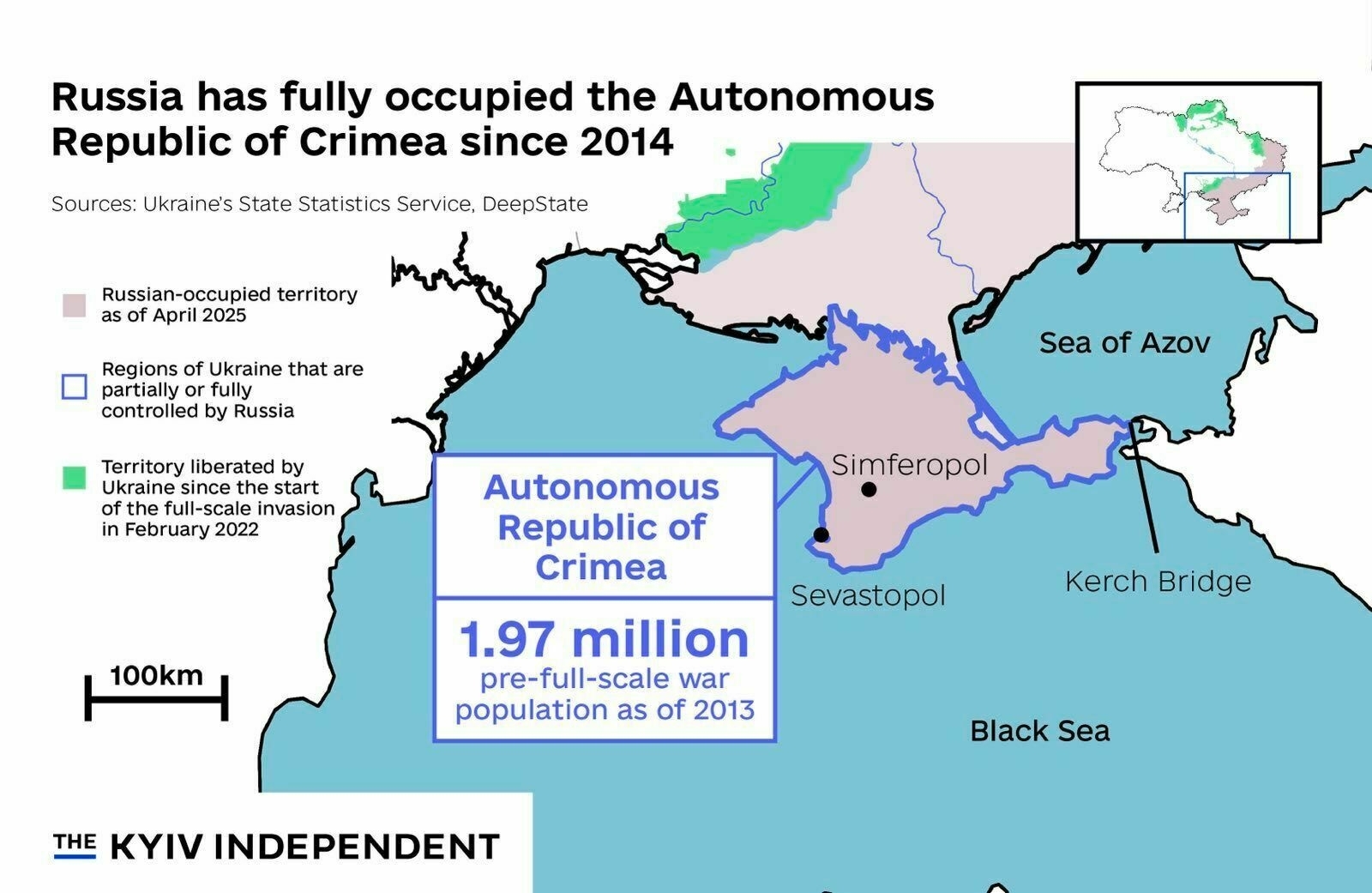
A map of Russian-occupied Crimea. (The Kyiv Independent) 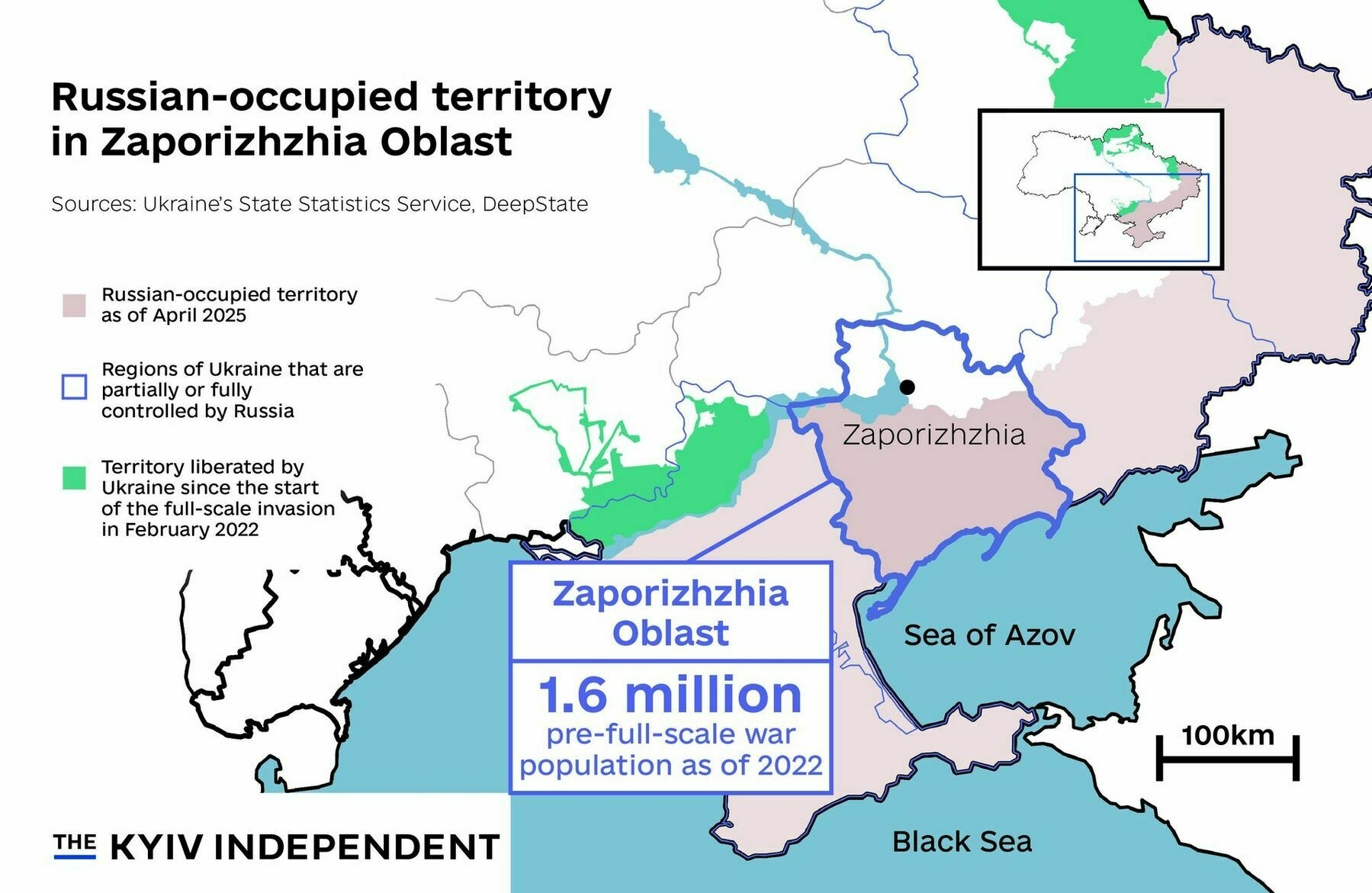
A map showing Russian-occupied parts of Ukraine’s Zaporizhzhia Oblast as of 2025. (The Kyiv Independent) 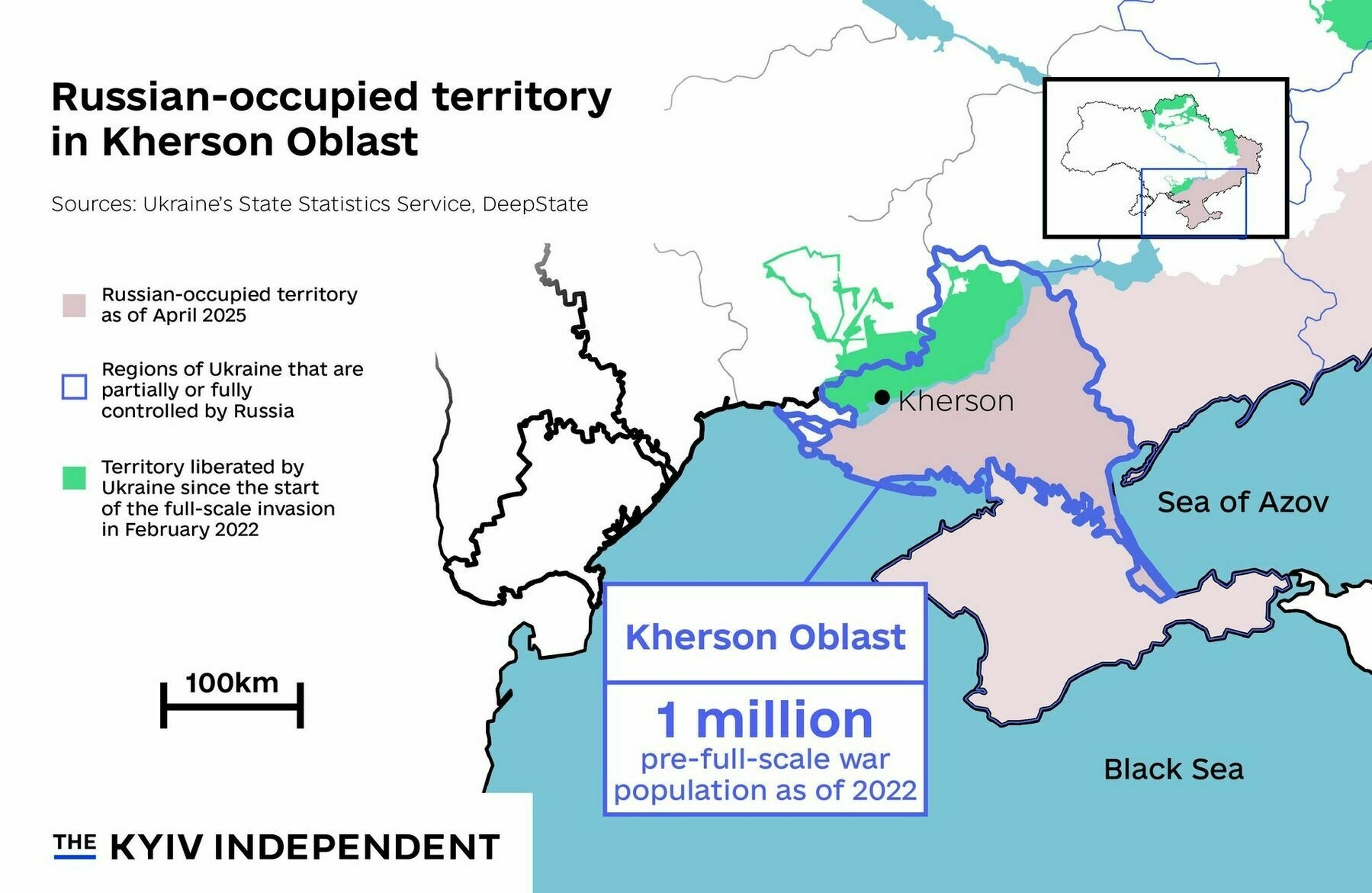
A map showing Russian-occupied parts of Ukraine’s Kherson Oblast as of 2025. (The Kyiv Independent) 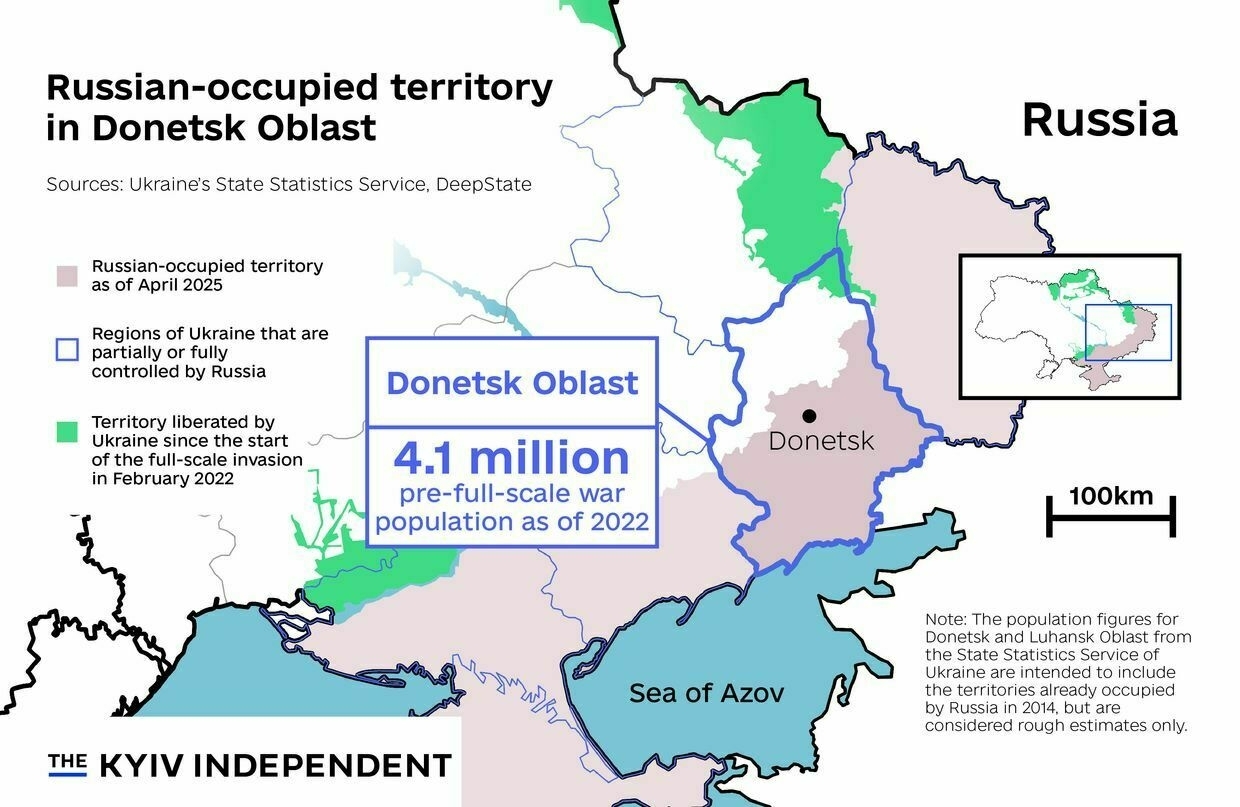
A map showing Russian-occupied parts of Ukraine’s Donetsk Oblast as of 2025. (The Kyiv Independent) 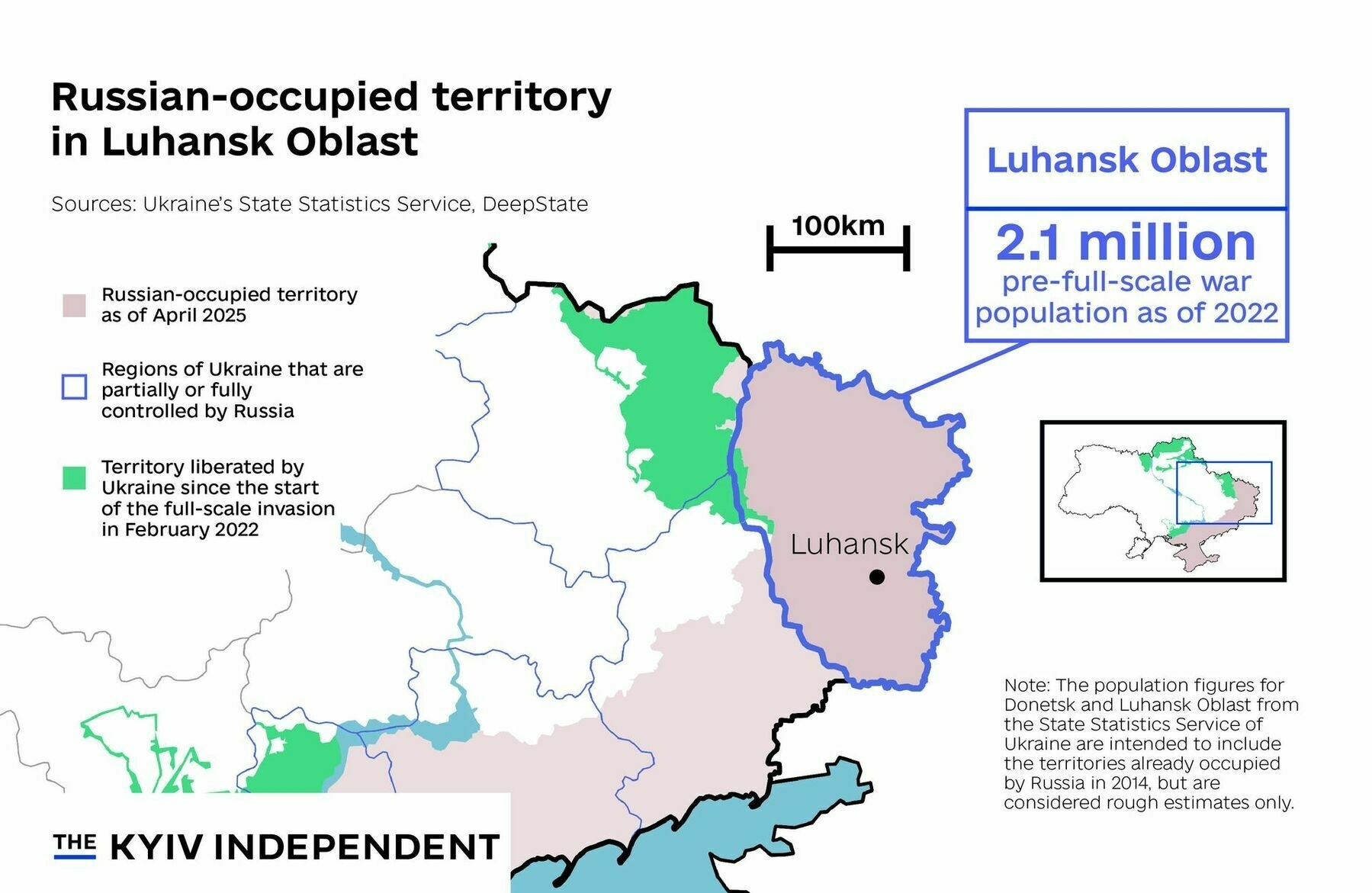
A map showing Russian-occupied parts of Ukraine’s Luhansk Oblast as of 2025. (The Kyiv Independent) The Kremlin is also pushing for a formal recognition of its hold over Ukrainian territories. While U.S. President Donald Trump has reportedly signalled a willingness to U.S. recognition of the Russian occupation of Crimea, Ukraine has rejected the step, as well as its withdrawal from the territory it currently holds.
The poll revealed that public opinion on territorial concessions has remained relatively stable over the past months.
When asked whether Ukraine should give up territories to achieve peace — without specifying a de facto or de jure recognition of the Russian occupation — 52% said Ukraine should not take the step under “any circumstances."
In comparison, 38% of respondents backed the compromise. These are almost the same figures as in December 2024, when 51% were opposed to the concession, while 38% were open to it.
“Our survey shows that the issue of territorial losses is extremely sensitive for Ukrainians and, in particular, how exactly ‘territorial losses’ are interpreted plays a significant role,” said Anton Hrushetskyi, executive director of KIIS, in a statement.
“At the same time, this means that (un)readiness for territorial losses can become the subject of manipulation and information campaigns against Ukraine."
The poll was conducted between May 15 and June 3. It involved 2,004 adult residents of the Ukrainian-controlled territories who were interviewed by telephone. Only about 500 of them answered all four questions.
Key to Russia’s potential defeat lies in its economyAs the war in Ukraine grinds on, attention remains fixed on the battlefield. But Russia’s most vulnerable flank is not in the trenches — it’s in the treasury. The West, and especially the United States, holds economic levers that could push Vladimir Putin toward serious negotiations or even collapseThe Kyiv IndependentWojciech Jakóbik
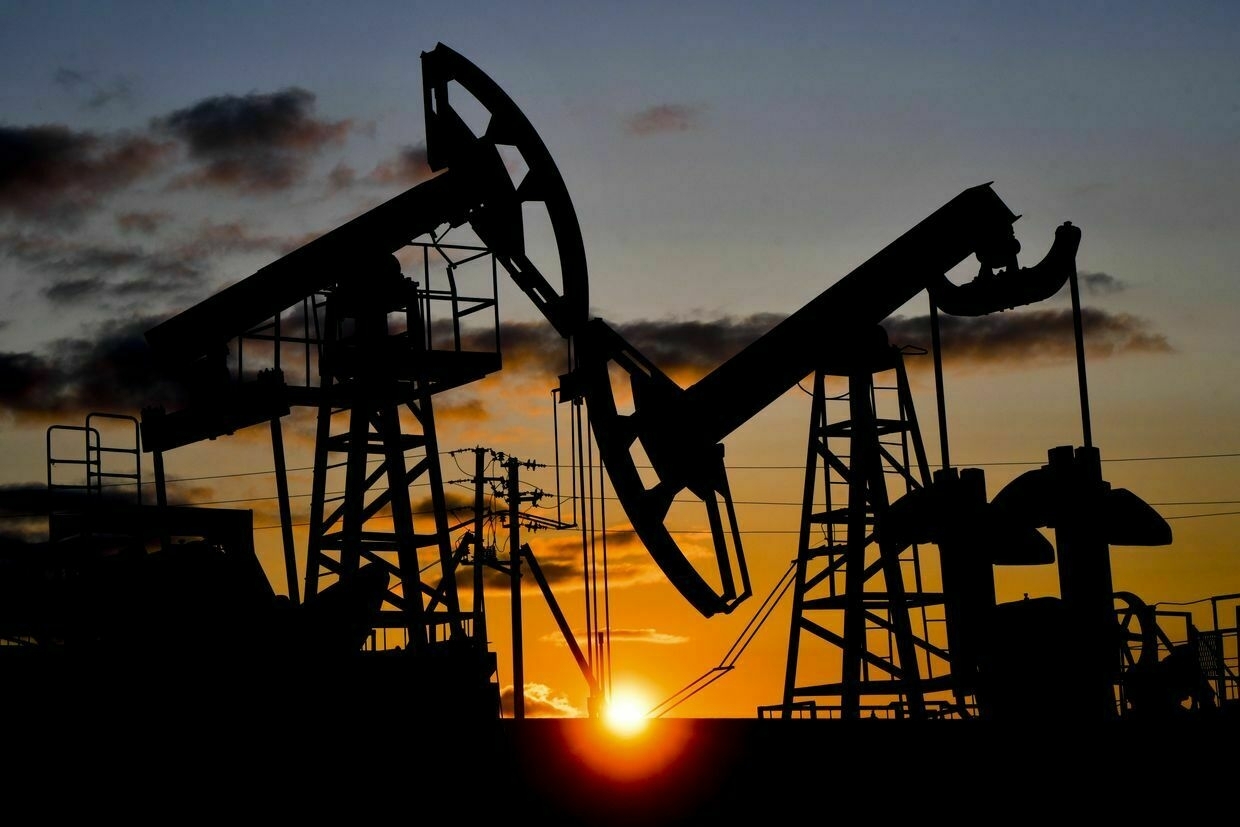
-
Russia doubts NATO's Article 5, could use 'little green men' to test it, German intelligence chief warns
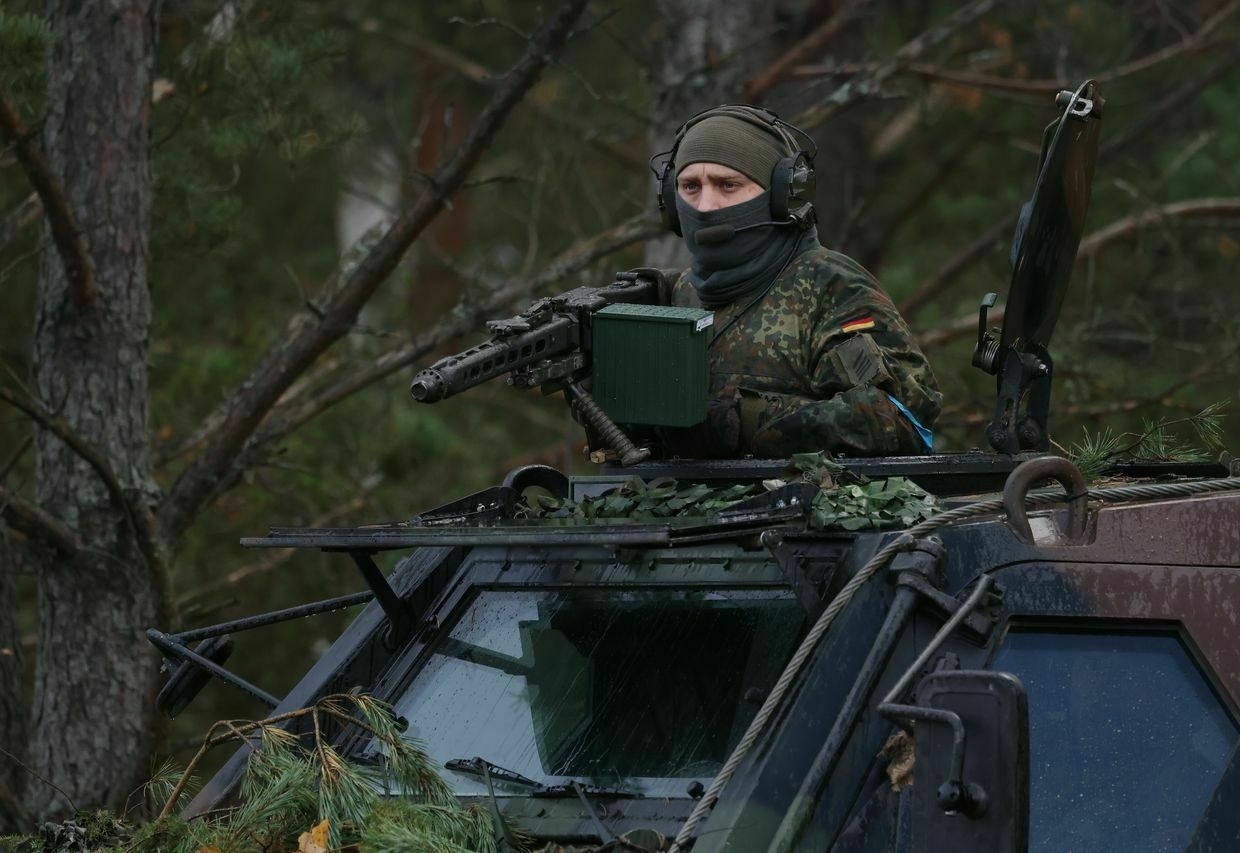
Russia wants to test NATO’s resolve by hostile steps beyond Ukraine, as some Russian officials believe the alliance’s collective defense principle no longer works, German intelligence chief Bruno Kahl told the Table Media news outlet in an interview published on June 9.
“There are people in Moscow who no longer believe that NATO’s Article 5 works. And they would like to test it,” Kahl said in the podcast interview.
The comments come as NATO Secretary General Mark Rutte warned that Russia could be ready to launch an attack against the alliance within five years. Such stark warnings have become increasingly common since Moscow’s full-scale invasion of Ukraine in 2022.
The chief of Germany’s Federal Intelligence Service (BND) noted that Moscow sees its war in Ukraine as “only a step on its path westward.” Citing intelligence sources, he said Russia may seek to start a lower-intensity confrontation that will test the U.S.’s willingness to fulfill its obligations under Article 5.
“They don’t need to send tanks for that,” Kahl noted. “They just have to send ‘little green men’ to Estonia to defend the allegedly oppressed Russian minority.”
Article 5 refers to a key principle of the North Atlantic Treaty, which obliges all members to treat an attack on one member as an attack on all and provide assistance. The article has been invoked only once, following the September 11 terrorist attacks against the U.S. in 2001.
The term “little green men” was first used in reference to Russian soldiers without insignia who seized key strategic facilities in Crimea in 2014 in the opening phase of the Russian occupation of the Ukrainian peninsula.
Concerns among NATO members about a potential Russian aggression and Washington’s commitment to the alliance have grown since U.S. President Donald Trump took office in January.
The new administration has signaled plans to reduce military presence in Europe, and Trump has even directly challenged the collective defense principle by saying the U.S. would not defend NATO members who do not invest sufficiently in their military capabilities.
New German Chancellor Friedrich Merz traveled to Washington last week to meet Trump and discuss joint support for Ukraine and NATO’s future. While the talks proceeded relatively smoothly, the German chancellor failed to obtain any concrete commitments from Trump.
Multiple Ukrainian and Western officials have warned that Russia may be preparing for an open confrontation with NATO after ending its war against Kyiv. The preparations may pick up pace if Western sanctions are lifted as part of a potential peace deal, Ukrainian intelligence said.
What UK’s Strategic Defense Review means for UkraineBritish Prime Minister Keir Starmer announced on June 2 that the United Kingdom is moving to “warfighting readiness,” in large part in response to the full-scale invasion of Ukraine and the threat Russia poses to Europe. He made the comment as his government unveiled its latest Strategic Defense Review, whichThe Kyiv IndependentAlex Nichol
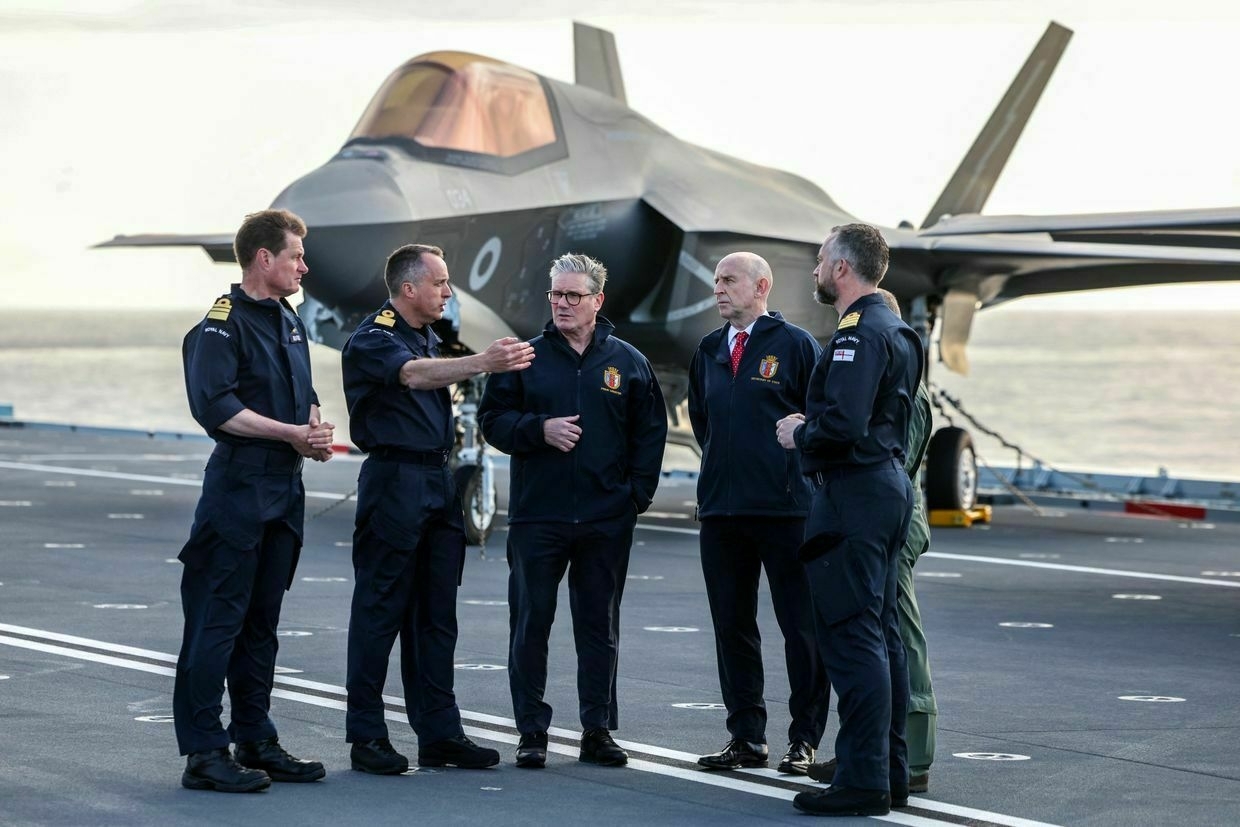
-
Ukraine's NATO membership remains 'irreversible' despite possible communique omission, Rutte says
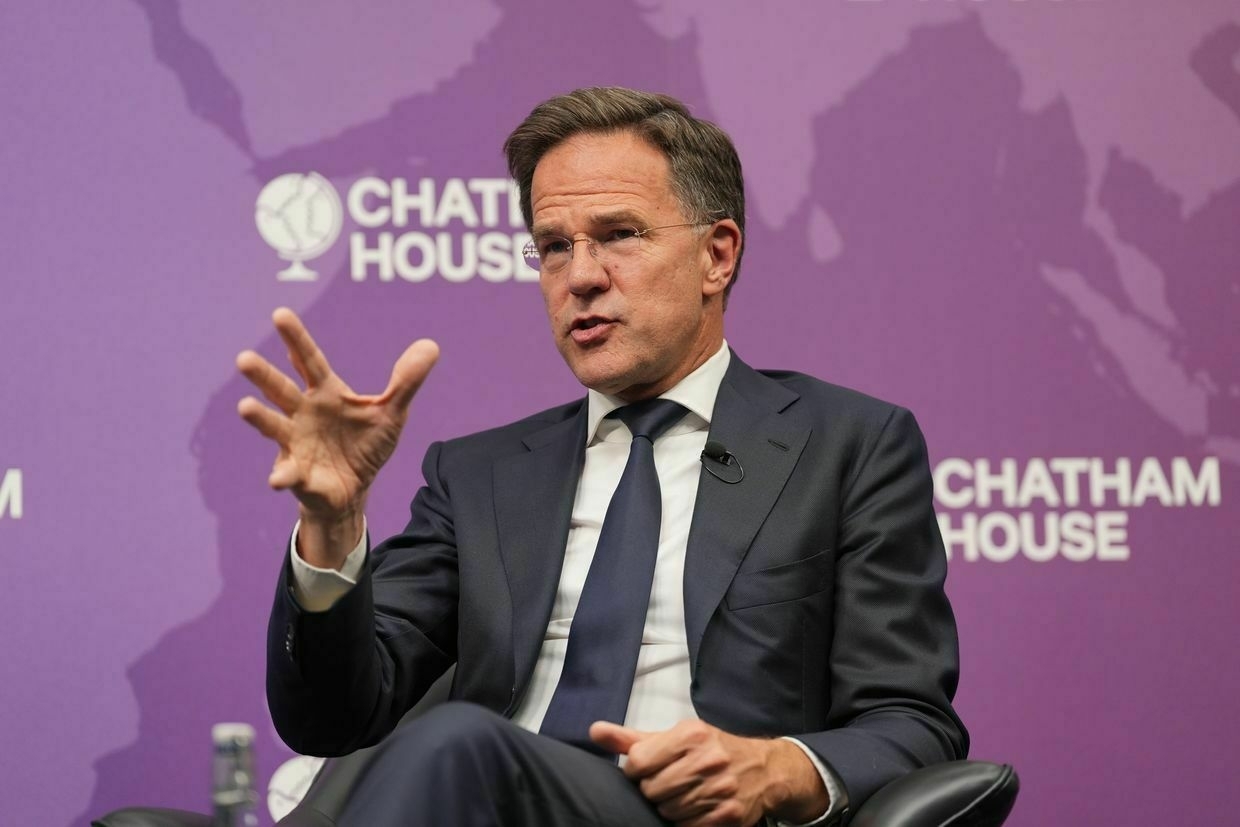
The political commitment to Ukraine’s future membership in NATO remains unchanged, even if it is not explicitly mentioned in the final communique of the upcoming summit in The Hague, NATO Secretary General Mark Rutte said on June 9.
“The irreversible path of Ukraine into NATO is there, and it is my assumption that it is still there after the summit,” Rutte said at Chatham House in London.
“Whether it is again in the communique or not, I think that’s not relevant, because all the language we previously agreed on is there — until we decide it is no longer there."
Rutte’s comments follow reporting that this year’s summit communique, set for release after the June 24–25 meeting, may exclude references to Russia and Ukraine. This would mark a notable departure from previous gatherings, where Kyiv’s future in NATO took center stage.
Ukraine applied for alliance membership in September 2022, several months after Russia launched its full-scale invasion. While NATO has repeatedly affirmed that Kyiv will eventually join, it has yet to extend a formal invitation.
U.S. President Donald Trump, who is set to attend the summit, has claimed that Ukraine’s NATO aspirations provoked the war — a line frequently echoed in Russian propaganda. He also signaled plans to reduce U.S. military presence in Europe and has been reluctant to provide new military support to Kyiv.
President Volodymyr Zelensky confirmed on June 2 that Ukraine had been invited to the upcoming summit, despite earlier speculation that the country might be excluded due to opposition from the Trump administration.
The Ukrainian president has attended every NATO summit since February 2022: in person in 2024 in Washington and 2023 in Vilnius, and virtually in 2022.
This year’s summit is expected to focus more cautiously on alliance posture and defense spending, as internal divisions surface over support for Ukraine and broader geopolitical commitments.
Russian missile and drone barrage hits Kyiv, Odesa, killing 2 and injuring 12, damaging maternity hospitalIn the early hours of June 10, Kyiv and Odesa came under another mass Russian attack, involving ballistic missiles and drones. Explosions were heard across the capital as air defense systems engaged the targets.The Kyiv IndependentOlena Goncharova
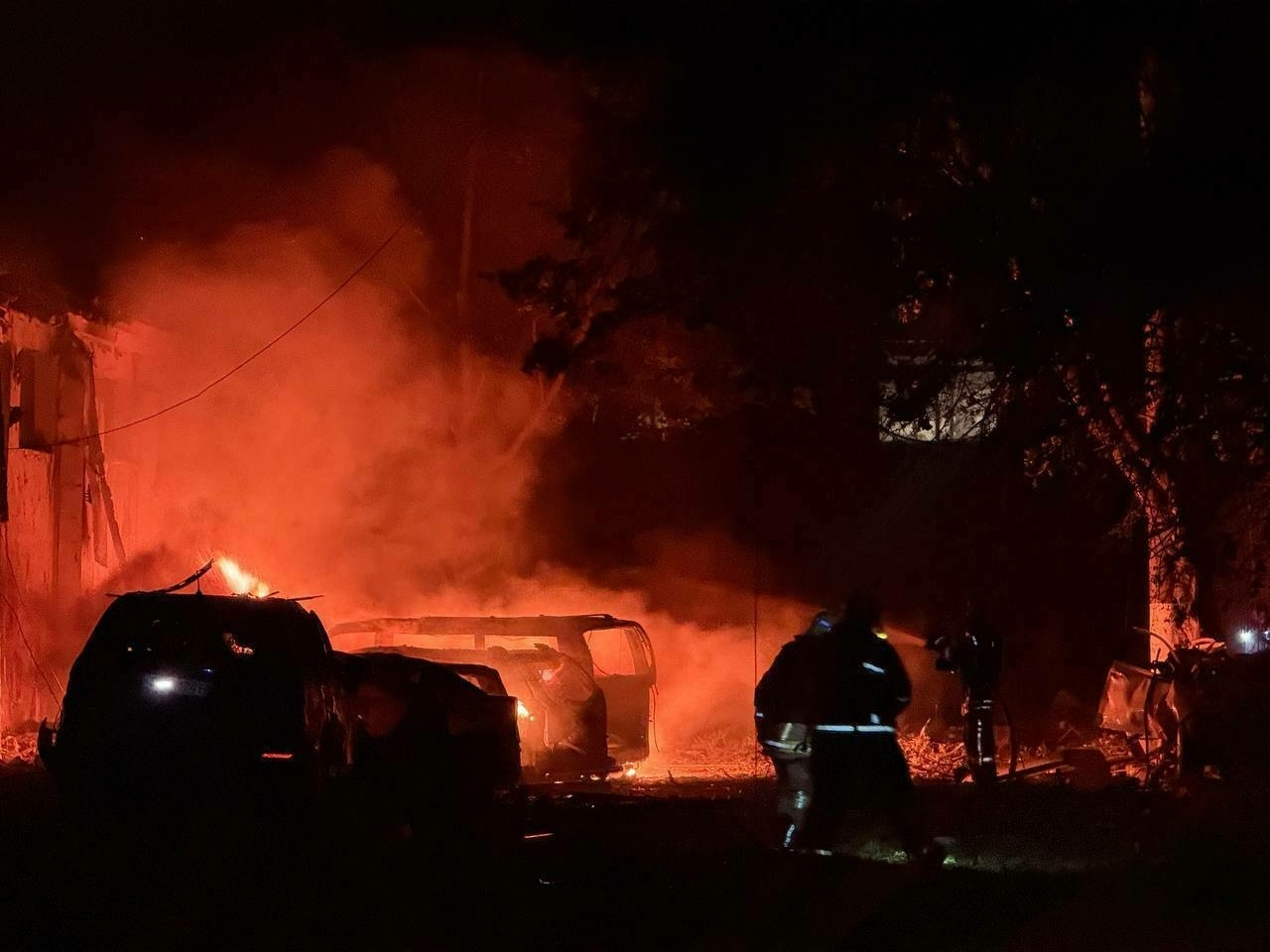
-
Russia makes a year’s worth of NATO ammunition in 3 months, Rutte says
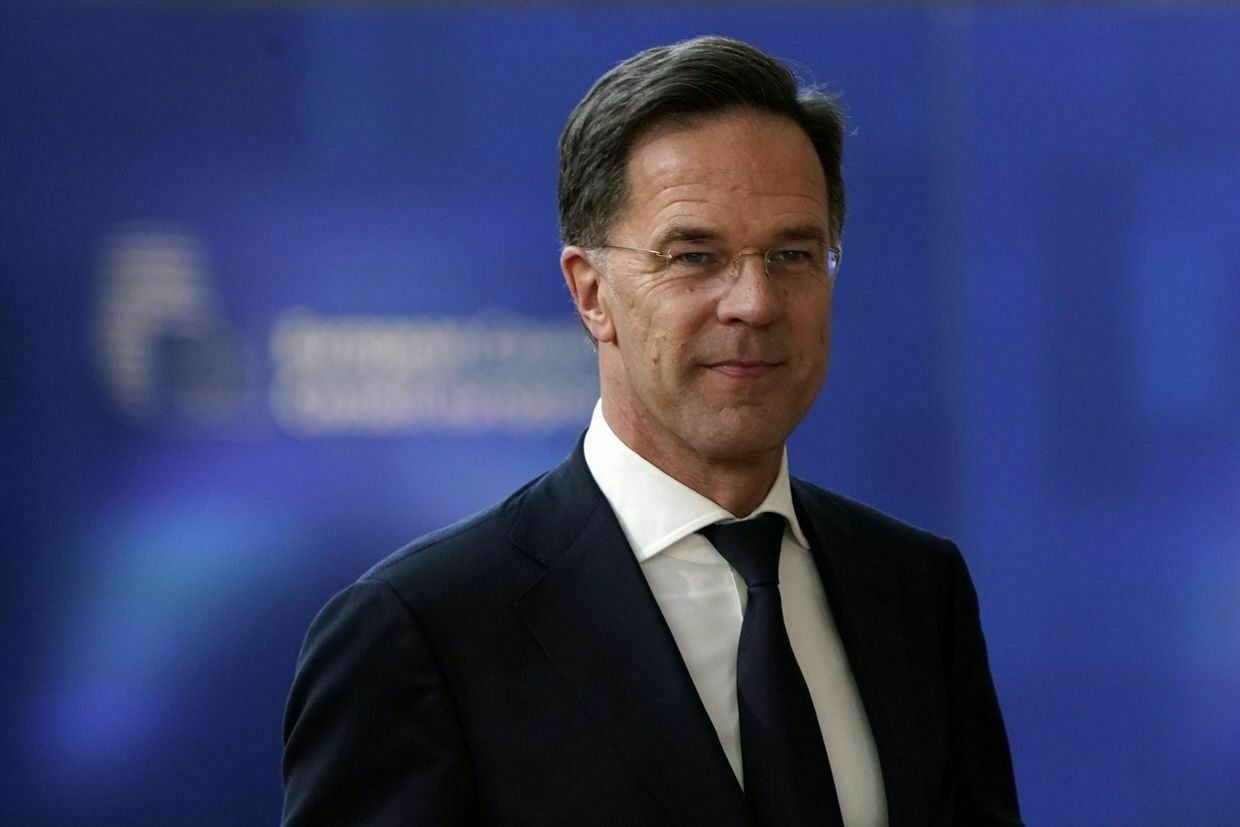
Russia produces as much ammunition in three months as NATO does in a year, posing serious risks for the alliance, NATO Secretary General Mark Rutte said on June 9 at Chatham House in London.
“The capabilities of (Vladimir) Putin’s war machine are speeding up, not slowing down,” Rutte said. “Russia is reconstituting its forces with Chinese technology and producing more weapons faster than we thought."
Rutte’s statement comes amid mounting tensions between the alliance and Russia and an increasingly uncertain U.S. commitment to European security.
According to Rutte, Russia is restoring its military potential with the help of China, Iran, and North Korea. This year, the Russian industrial complex is expected to roll out 1,500 tanks, 3,000 armored vehicles, and 200 Iskander missiles, NATO chief said.
“Russia could be ready to use military force against NATO within five years,” Rutte said. “Let’s not kid ourselves."
“We are all on the eastern flank now. The new generation of Russian missiles travels at the speed of sound. The distance between European capitals is only a matter of minutes. There is no longer east or west. There is just NATO,” he added.
When asked whether a long-term truce in Ukraine’s war against Russia would allow the latter to stockpile even more weapons and increase the risks to NATO, Rutte said: “That’s a statement of fact."
“Our assumption at the moment is that even whilst the war against Ukraine is continuing, they (Russian forces) are still able to increase stockpiles slightly, but that’s debatable,” Rutte added.
Russia’s full-scale invasion of Ukraine in 2022 prompted European countries to hike defense spending in order to revive their military capabilities, which atrophied after decades of disarmament following the Cold War.
The matter gained more urgency after signals that the U.S., the most powerful military in NATO, plans to scale down its presence in Europe as President Donald Trump shifts strategic focus to the Asia-Pacific region.
Ukrainian foreign intelligence chief Oleh Ivashchenko recently warned that Russia will be able to replenish its forces between two and four years after the war in Ukraine, allowing it to launch aggression against Europe.
‘Find and destroy’ – how Ukraine’s own Peaky Blinders mastered the art of bomber dronesEditor’s note: In accordance with the security protocols of the Ukrainian military, soldiers featured in this story are identified by first names and callsigns only. DONETSK OBLAST – From the moment the vehicles duck into pre-prepared positions in the leafy treeline to the first dead Russian soldiers, less than twentyThe Kyiv IndependentFrancis Farrell
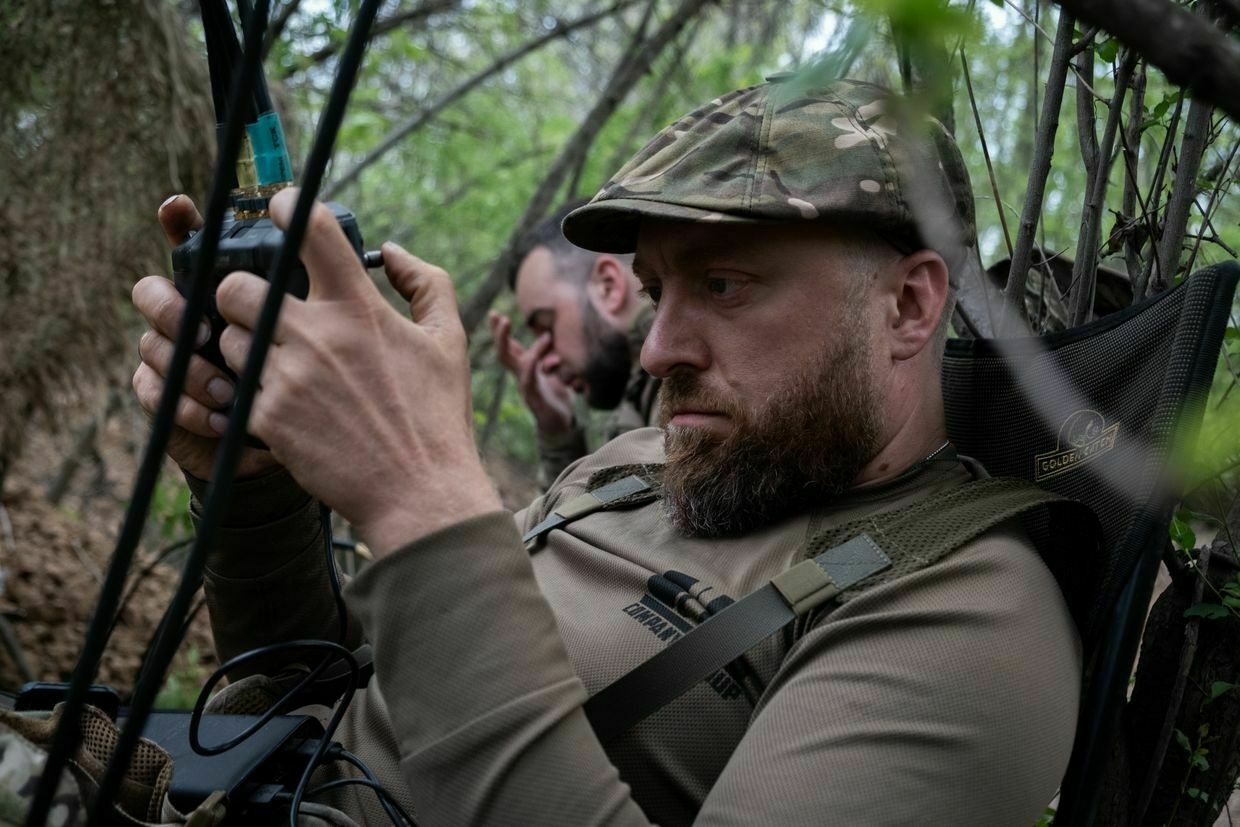
-
Exiled Russian scholar on why Dugin is no philosopher, and Russia no defender of ‘traditional values’
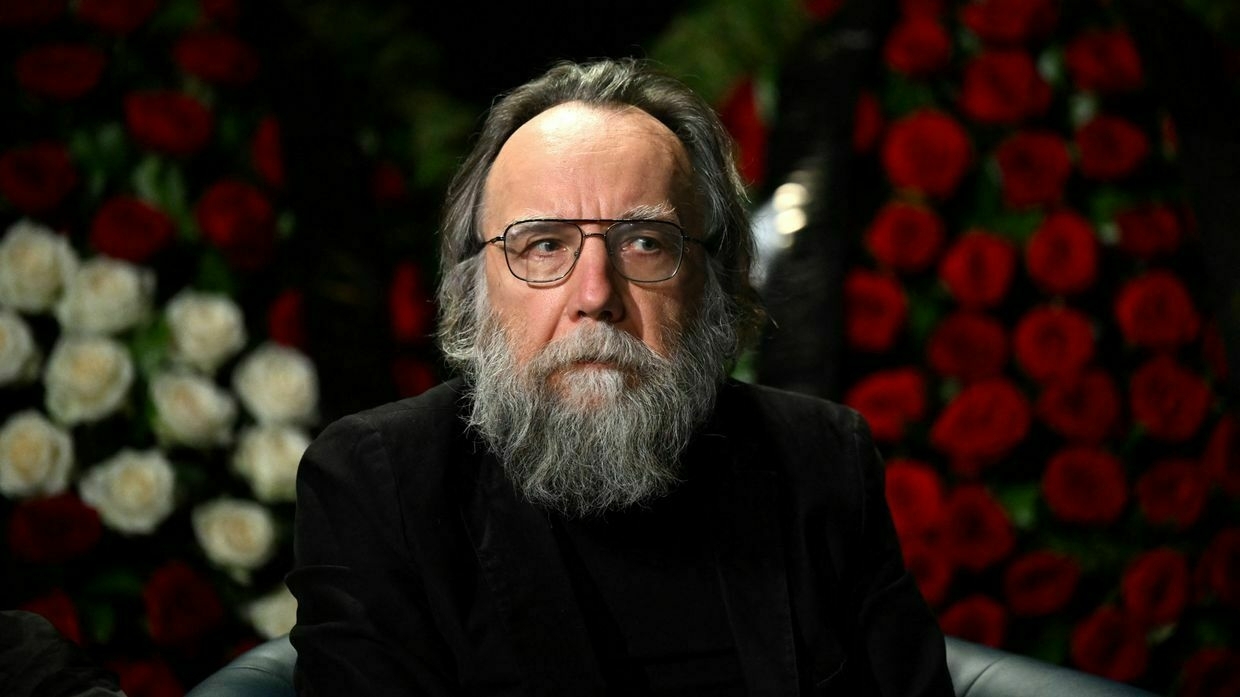
In recent years, the Kremlin has sought to cast Russia as a bastion of so-called traditional values, positioning itself in stark contrast to what it describes as the morally decaying West. Yet beneath this veneer, a more complex reality persists. As exiled Russian philosopher Alexey Zhavoronkov told the Kyiv Independent, “conservative rhetoric and concepts are employed to mask a different reality.”
Within the framework of traditional conservative thought, personal liberty is regarded as a foundational principle. But in today’s Russia, such freedom is markedly absent.
As Zhavoronkov observes, those advancing the narrative of a “conservative” Russia frequently do so less out of ideological conviction than opportunism — aligning themselves with the Kremlin to serve as de facto spokespeople for President Vladimir Putin’s regime while also enriching themselves.
Among those frequently cited as intellectual architects of the Kremlin’s “traditional values” worldview is Alexander Dugin, referred to in Western media as “Putin’s brain” — a title that belies the ambiguous and likely overstated nature of his actual influence.
Dugin, who has openly called for the genocide of Ukrainians and maintains a network aimed at exporting his ideology far and wide abroad, presents himself as a philosopher. But as exiled Zhavoronkov explained to the Kyiv Independent, Dugin’s work is marred by intellectual incoherence and lacks the philosophical depth required for serious consideration.
This interview has been edited for length and clarity.
The Kyiv Independent: Some right-wing contingents in the West claim that Russia is a last holdout for “traditional values.” Could you go into more detail about the image that Russia is trying to project versus what is really happening there?
Alexey Zhavoronkov: This concept of “traditional values” — and by that I mean the political use of the concept of traditional values — is very illustrative because there are hundreds of its interpretations in different documents and publications. If we look at official documents like Russian national development strategies, which offer lists of specific “traditional values,” most of these values are not strictly conservative. We see notions like individual freedom, or we see something more associated with the philosophy of enlightenment (like the idea of human dignity) — meaning that traditional values are more along the lines of liberal thought. There are also certain concepts, such as collectivism, that were carried over from the Soviet period.
Conservative values mentioned in Russian official documents are mostly centered around ‘traditional family’ — beyond that, there isn’t much. This serves as a good example of how conservative rhetoric and concepts — sometimes even borrowed from Western traditions, which are officially condemned in Russia — are employed to mask a different reality.
If we look at the conservative tradition in the U.S. and compare it to the Russian tradition, the differences are striking — they’re two entirely different worlds.
The Kyiv Independent: How so?
Alexey Zhavoronkov: The differences exist on many levels, including political practice. But if we start with the theoretical side, the Anglo-American conservative tradition has a long and deep history. It doesn’t begin as a reaction to the French Revolution (in the 18th century), but rather can be traced back to 15th- and 16th-century England. There’s a lot to examine when analyzing this tradition.
There was no major rupture in the American conservative tradition after World War II. In contrast, the Bolshevik Revolution (in 1917) in Russia effectively severed the continuity of the country’s conservative tradition. In the U.S., there have certainly been political crises within the conservative movement, but the development of the tradition was never interrupted. Moreover, in the U.S., after World War II, much of the conservative movement was defined by anti-communism. Overall, if we look at major themes and the political policies associated with them, there’s very little overlap between the Russian and American traditions.
Russia sees itself as having a unique role in the world — it believes it should save the world, but it will save it by means of destruction.
The Russian tradition faced multiple issues that differentiated it from the American tradition — which itself had internal problems, such as the split between neoconservatives and paleoconservatives since the 1970s. I’ll return to that later, because I think there are some similarities between American and Russian neoconservatives, though only at the level of the international political agenda.
As I mentioned, in Russia, we see a major interruption in the conservative tradition. There was certainly a conservative tradition before the revolution, though by the end of the 19th century, it was already in decline. It’s also quite telling that as soon as the Russian (imperial) government, under Emperor Alexander III, officially adopted conservative rhetoric, conservatism as an intellectual movement practically disappeared. The government wasn’t interested in serious programmatic works; it only needed slogans, which were mostly supplied by the official press.
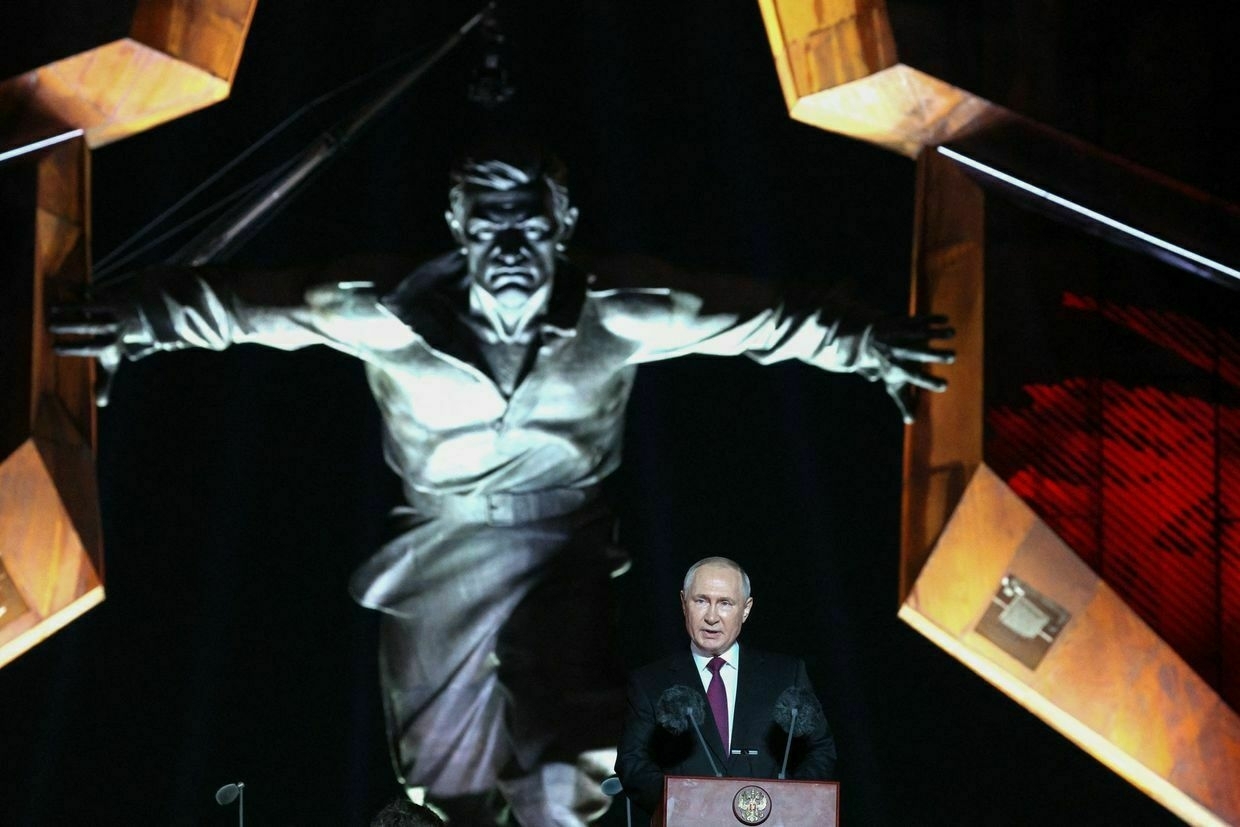
Russian President Vladimir Putin addresses the audience in Kursk, Russia, on Aug. 23, 2023. (Gavriil Grigorov/Pool/AFP via Getty Images) 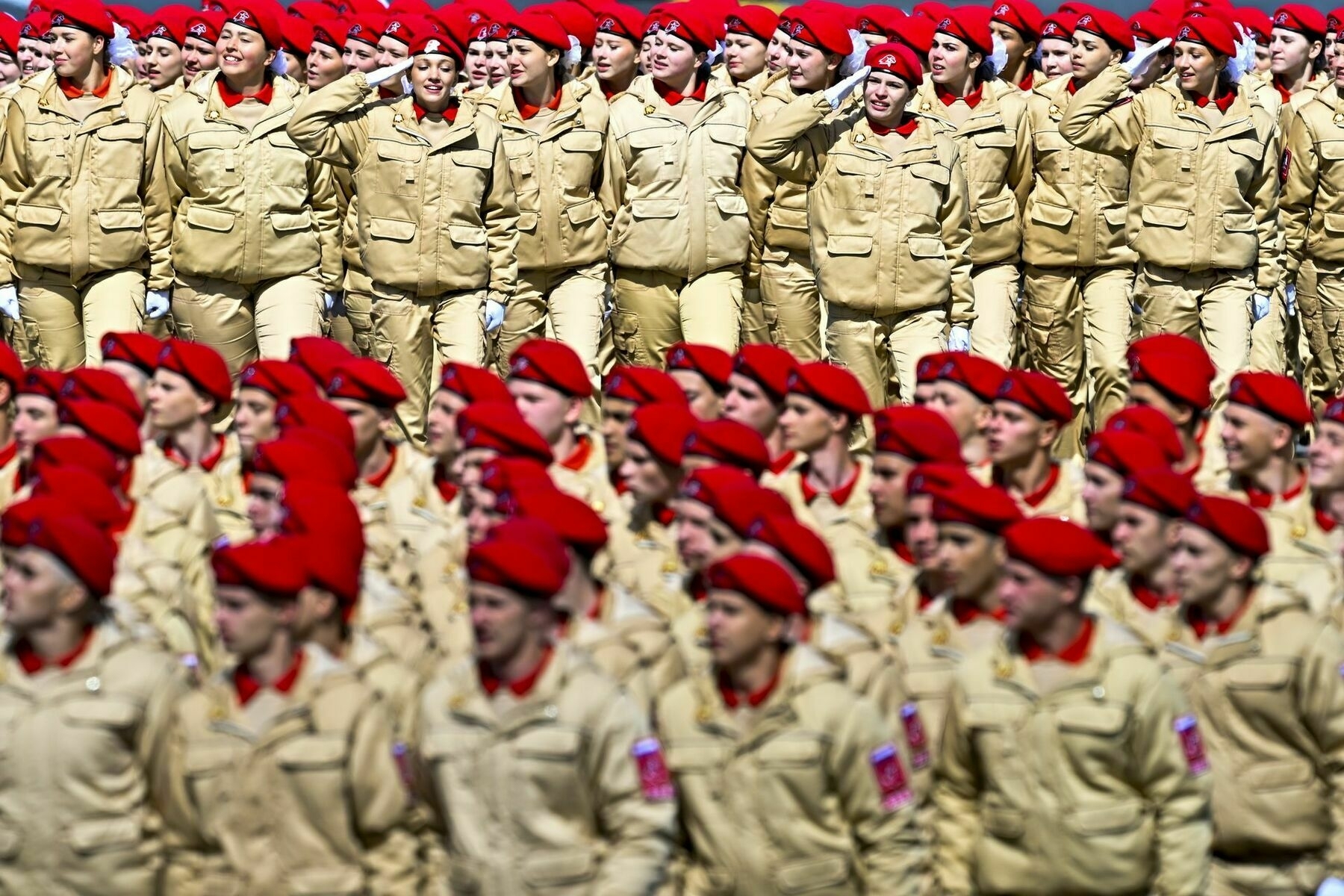
Young Army Cadets National Movement members march toward Red Square during the 80th anniversary celebrations of Victory Day in Moscow, Russia, on May 9, 2025. (Sefa Karacan/Anadolu via Getty Images) There were a plethora of newspapers and some journals that labeled themselves as conservative, but there were virtually no intellectual platforms for Russian conservatives. The golden era of Russian conservatism — associated with the Slavophile movement in the mid-19th century — was already long gone. It wasn’t revived later under Emperor Nicholas II, and then came the revolution. After that, there were only limited attempts to revitalize the conservative tradition during the Soviet period, by figures like Alexander Solzhenitsyn, for instance. There were also some more radical conservative, mostly Orthodox, movements during the Soviet period. But aside from a few collections of essays and Solzhenitsyn’s publications, there were no major works that could be considered significant intellectual manifestos. So we are left to piece together fragments from various texts — texts that are neither philosophical in nature nor structured as political programs.
I think the last truly meaningful intellectual exchange between Russian conservatives and Russian liberals was the debate between Solzhenitsyn and Andrei Sakharov in the 1970s and 1980s. Both of them had clearly defined (but incompatible) visions of Russia’s future.
Many aspects of that debate are either no longer relevant or problematic, such as Solzhenitsyn’s idea of the nation. But still, it was a genuine (direct and indirect) debate that highlighted fundamental differences in how each thinker envisioned Russia’s path forward over the coming century.
The Kyiv Independent: Why do you think the Russian government following the USSR’s collapse, chose the path of neoconservatism?
Alexey Zhavoronkov: I think if we return to the issue of tradition, it’s clear that there has been a break in its continuity. Contrary to what the Russian government suggests, this tradition has not been restored. Instead, the government is attempting something similar to what American anti-traditionalist neoconservatives aimed to do starting in the 1980s — namely, to formulate a global political agenda based primarily on the country's national interests rather than on international agreements and rules. These national interests are used to justify what I would describe as aggressive, even imperialist, policies aimed at establishing or maintaining dominance in various regions of the world.
Of course, the economic weight of a country like the U.S. is incomparably greater than that of Russia. Russia represents only a small fraction of the global economy and is now largely isolated from many international markets. Therefore, the Russian government had to come up with a different kind of justification for its imperial ambitions.
This justification has taken on a radical Orthodox form. This is where figures like Alexander Dugin come into play, along with many other ideologists who popularized the concept of “Katechon” — which has become one of the key notions in Russian politics today.
The Kyiv Independent: Could you explain what that is?
Alexey Zhavoronkov: This concept enforces the idea that Russia is the world’s sole and last protector against the Antichrist. Instead of American political and economic exceptionalism, which is manifested in (U.S. President Donald) Trump’s policies, Russia has its own form of exceptionalism, but with different pillars supporting the ideology. For the U.S., the pillar is economic dominance, as seen in Trump’s obsession with tariffs. For Russia, the pillar is spiritual or radical Orthodoxy, which contains strong elements of messianism. Russia sees itself as having a unique role in the world — it believes it should save the world, but it will save it by means of destruction. And to protect the world, Russia must be in a constant state of war with those who worship the Antichrist, namely with the ‘Collective West.’
The so-called ‘Collective West’ is another political concept actively used in Russian politics. The permanent state of war also means a permanent state of exception within Russia, because war serves as a perfect justification for almost any political action. In such a situation, established rules no longer apply. The government can always claim that it’s an exceptional circumstance.
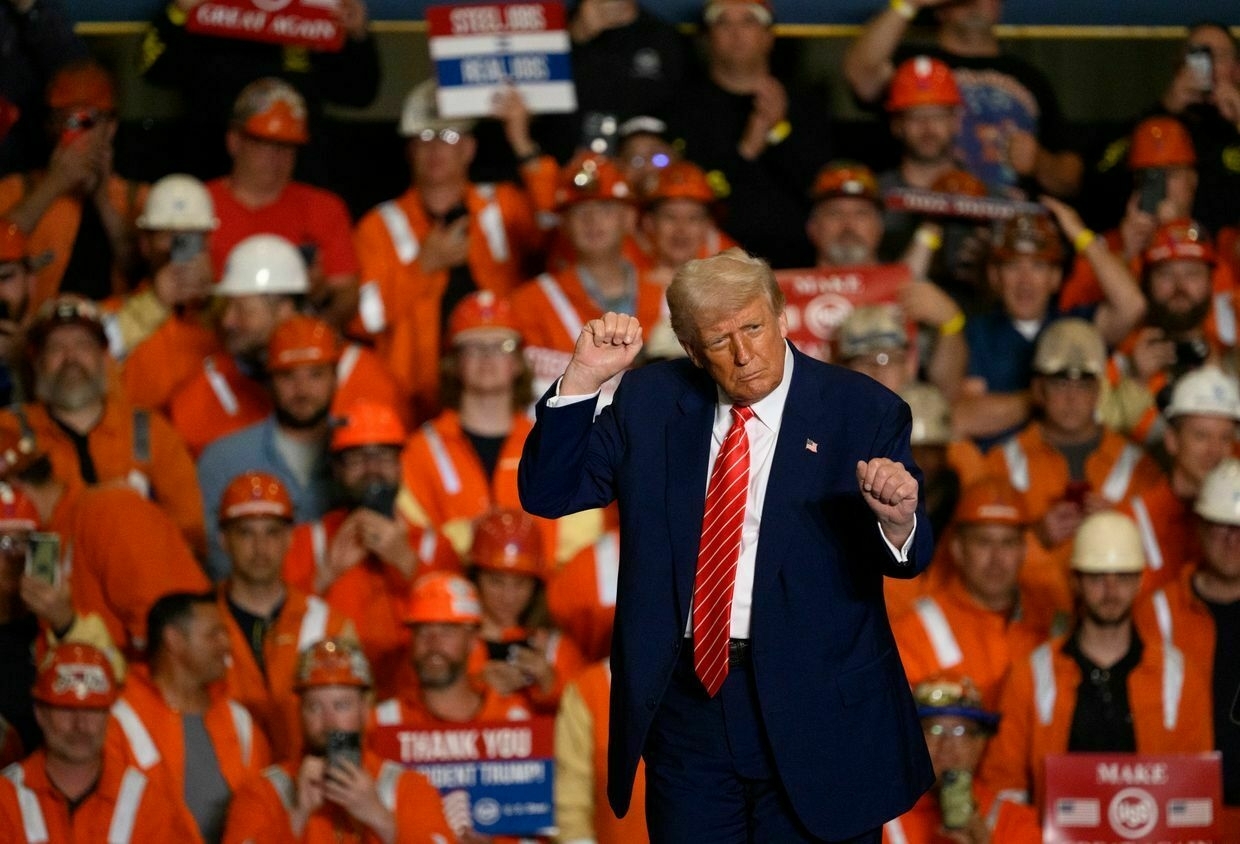
U.S. President Donald Trump speaks during a rally at the U.S. Steel-Irvin Works in West Mifflin, Pennsylvania, U.S. on May 30, 2025, after approving the U.S. Steel–Nippon Steel merger. (Jeff Swensen/Getty Images) The Kyiv Independent: You mentioned Alexander Dugin. Could you just go into who he is and how he came into prominence? In the West, they call him “Putin's brain.” But his connections to Putin are highly debated. Does he have any real influence in Russia or is it just an outward projection?
Alexey Zhavoronkov: Yes, Dugin is a really interesting figure from the perspective of how he's seen from the West. For a long time — even in Western political science — he was widely regarded as Putin’s favored ideologist, someone with direct access to him and the ability to advise him on key issues. This was, of course, not the case. And this still isn't the case today, although Dugin has gained significantly more favor in recent years for various reasons, one of which is the murder of his daughter.
I think Dugin is perhaps the most eclectic ideologist in Russia as of today. What he writes is mostly eclectic and situational commentary on what the Russian government does. At the heart of his “philosophy” is the so-called Fourth Political Theory, a framework intended to create a new political ideology to replace existing ones such as Liberalism and Marxism. This idea is understandable on an elementary level, but there is no intellectual content in this theory. It consists only of slogans about the need to establish such a theory, without offering any clear explanation of what that theory should actually be. It's also evident that Dugin has no intention of developing it further, and neither do other ideological figures in Russia, largely due to the nature of Russian politics.
Contemporary Russian politics — much like during the reign of Emperor Alexander III — has no need for intellectual manifestos. The role of ideologists is largely to retroactively justify actions already taken. Their task is to claim, for example, that they have long supported a particular policy or alliance, referencing something they wrote in a book a decade ago.
The Russian government uses the strategy of fusionism. It has encompassed pretty much all movements that existed around it. Nowadays, we have Marxists and Stalinists who support Putin, but also traditionalists like Dugin, fascists, etc. This is a wild mix of people from diverse backgrounds who, in theory, should hold differing opinions — but in practice, they do not, at least not publicly. Many of them even collaborate within government-affiliated organizations, such as the Izborsky Club (a Russian think tank which Dugin is a member of, among others).
What we see in Russia is an eclectic blend of very different ideologies, all loosely labeled as conservatism. To better disguise this inconsistency, Putin — or more accurately, his speechwriters — occasionally reference conservative literature, sometimes even theories by Western authors.
Take, for example, Putin’s speech from October 2021 — just a few months before the war began. In it, there’s a noteworthy section where he offers a clear definition of conservatism. Interestingly, this definition closely aligns with liberal conservatism as understood by scholars like Michael Freeden and others. Conservatism, in this context, is portrayed as cautious progress based on principles of healthy realism and anti-isolationism, a framework of cultural relations that emphasizes respect for different traditions and viewpoints, aversion to extremism, etc.
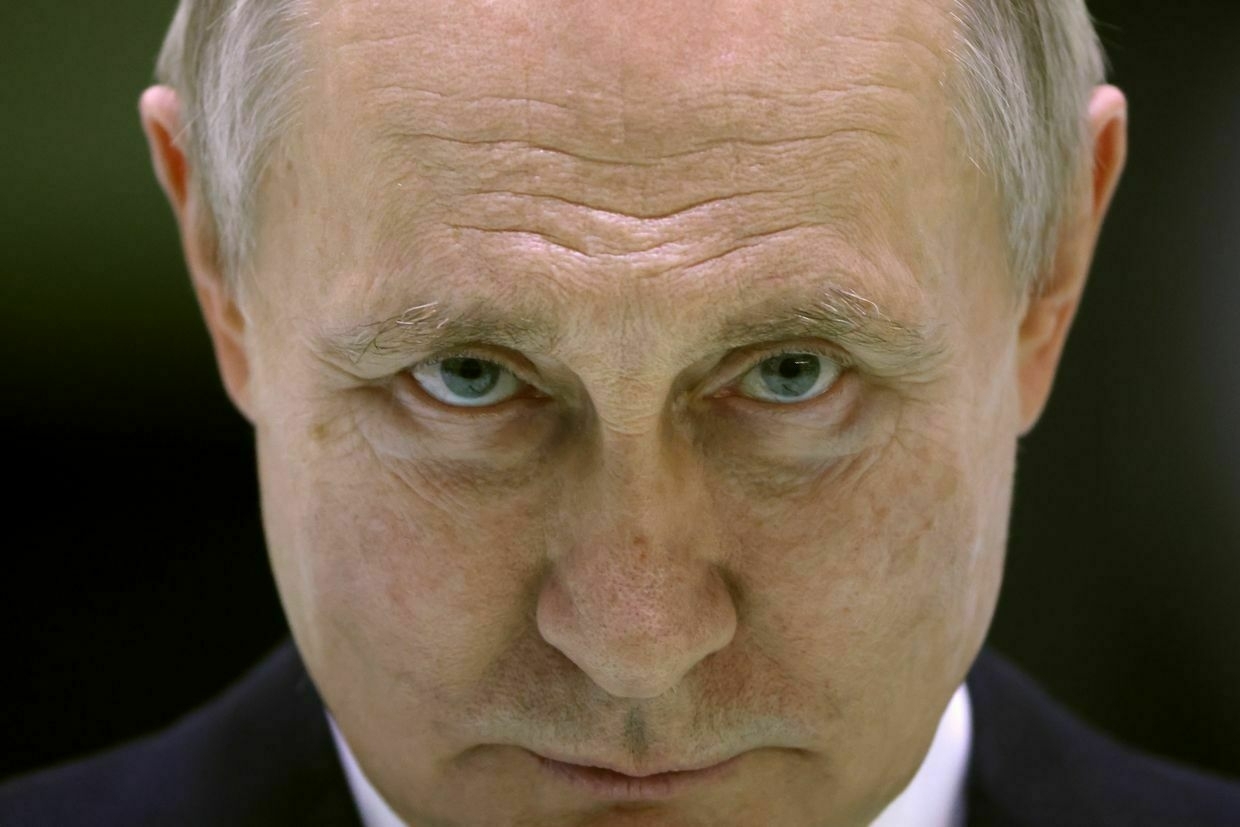
Vladimir Putin during a meeting with workers at the Obukhov State Plant in Saint Petersburg, Russia, on Jan. 18, 2023. (Contributor/Getty Images) 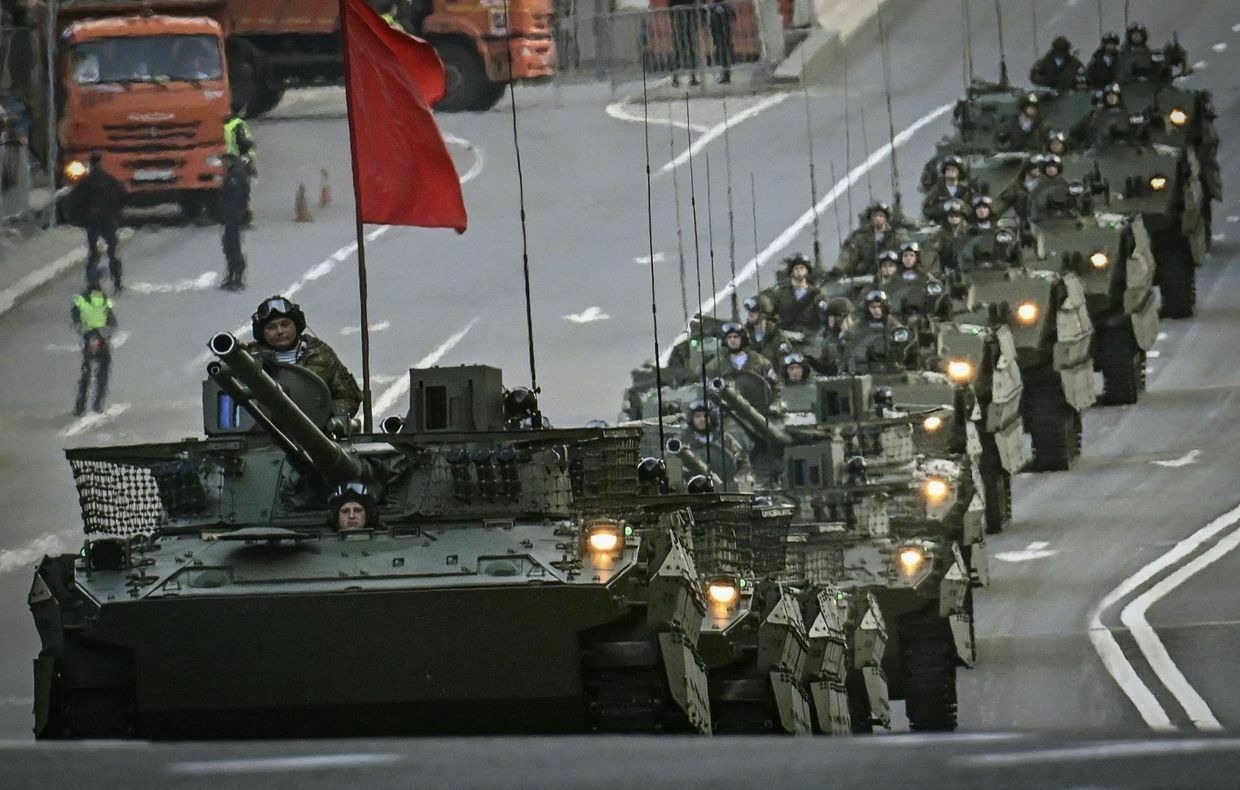
A Russian army tank drives through central Moscow, Russia, during a rehearsal for the Victory Day parade on May 3, 2025. (Alexander Nemenov/AFP via Getty Images) All the rhetoric about cautious decision-making, anti-isolationism, and respect for others stood in stark contrast to what unfolded just a few months later. It’s clear that Putin aims to appeal to the more conservative segments of the Russian population — and indeed, many Russians hold culturally conservative views in their everyday lives. But ultimately, this conservative messaging serves to mask policies that are, in many respects, deeply anti-conservative.
This is why I would label it as pseudo-conservatism — it mimics conservatism with the clear goal of making people feel more secure in turbulent times and fostering pride in their nation and government. However, in practice, what’s actually happening has little to do with traditional conservatism.
The Kyiv Independent: We see from here in Ukraine why people like Dugin are so dangerous. He has actively called for the genocide of Ukrainian people for years — that's what got him kicked out of one university back in 2014 or 2015, if I'm not mistaken. But what damage has he and others like him inflicted upon Russian academia over the past decade of war? What damage can they inflict abroad?
Alexey Zhavoronkov: It's a really good question. I think Dugin's academic trajectory shows us that nowadays, the Russian government is seriously concerned with the issue of Russian academics not being too cooperative, for the most part.
There’s a set of statistics from 2022 that breaks down how different social groups relate to the war, whether they support it actively, passively, or oppose it altogether. The group with the least support for the war was Russian academics, which signals to the government that this is a significant issue.
The government uses various means to control the excessively ‘cosmopolitan’ Russian academia. We see now that pro-government ideologists have been gifted their own institutes. Dugin now directs the Ivan Ilyin Higher Political School, an institute within the Russian State University for Humanities. This, along with other recent policies in education, is a signal to Dugin’s colleagues from the same university and other institutions that they are now being closely watched. Naturally, this contributes to an atmosphere of paranoia and self-censorship.
This self-censorship did not start in 2022. We do not have hard statistical data, but we still have some facts from recent history, like the dissolution of the Department for Constitutional Law at the Higher School of Economics in Moscow directly after the public debate concerning the necessity of the 2020 amendments to the Russian constitution. This action was not the government’s initiative. The university itself decided to lay off leading scholars in constitutional law, de facto, because there was no living constitution anymore. The constitution was amended in a way that several parts of it were practically destroyed.
People like Dugin contribute to the deterioration of the overall intellectual climate and the rise of self-censorship, which, I believe, is even worse than state censorship. In today’s Russia, state censorship is more about punishing a few individuals, while the universities punish the other 200 people themselves out of fear. It's different from the Soviet Union, where state control was stricter and all-encompassing.
Externally, Dugin makes an impression, partly because he has an army of writers, translators, and many supporters promoting his books in Europe and the U.S. I know several colleagues here in Germany, for instance, who were excited that there was supposed to be a workshop on Dugin’s philosophy at the Danube Institute in Hungary and wanted to attend. However, after watching some of his videos, they started questioning what he was actually saying. They realized it wasn’t philosophy but more like justificatory commentary on the Russian political agenda, filled with big slogans trying to align him with current policies. For instance, in his talk with John Mearsheimer, Dugin explicitly states that Ukraine should have been either neutral or part of Russia, and now Eastern Europe should be either neutral or "ours."
Dugin gives the impression, externally, that he represents Russian philosophy today and embodies the intellectual majority among his colleagues, which is not the case. However, he is the loudest, with all the necessary resources and instruments at his disposal. While he presents himself as a traditionalist, he also uses capitalist tools to commercialize his ideas in the West, adapting his views depending on where he is. In this way, he reminds me of Trump a bit.
If we look at some of the translations of Dugin’s books, like the German or English versions, it’s striking how much he tailors his message to please his European audience. In Russia, he often speaks of the ‘collective West’ or Europe as a declining culture, a culture that promotes degeneration. But for his German audience, he or his ghostwriters prepared an introduction to one of his major works that says something like this: “Germany has historically been oppressed by the U.S., but I, Dugin, am fond of German culture and thinkers.” Indeed, his Russian publications frequently reference Hegel and Heidegger, although he never understands their ideas. However, for his Russian audience, he also emphasizes the need for authoritarianism or even totalitarianism. When appealing to a German audience, he avoids such statements, knowing they wouldn't resonate with his readers there. Instead, he tries to appeal to a broader public, not just the most radical circles, by presenting himself as a German sympathizer.
Note from the author:
Hi, this is Kate Tsurkan, thank you for reading this article. You might have noticed that none of our reporting is behind a paywall — that’s because we believe that now, more than ever, the world needs access to reliable reporting from the ground here in Ukraine. To keep our journalism going, we rely on our community of over 20,000 members, most of whom give just $5 a month. Help us today.
Aestheticized aggression — why Gosha Rubchinskiy’s ‘Victory Day’ photo book is Russian propagandaRussia’s war against Ukraine is waged not only with missiles and tanks, but with distorted myths — powerful narratives that romanticize empire, rewrite history, and embolden Russian soldiers to reduce once prosperous cities to rubble. Those very same myths surfaced at the Photo London Festival from May 15 to 18, whereThe Kyiv IndependentKate Tsurkan
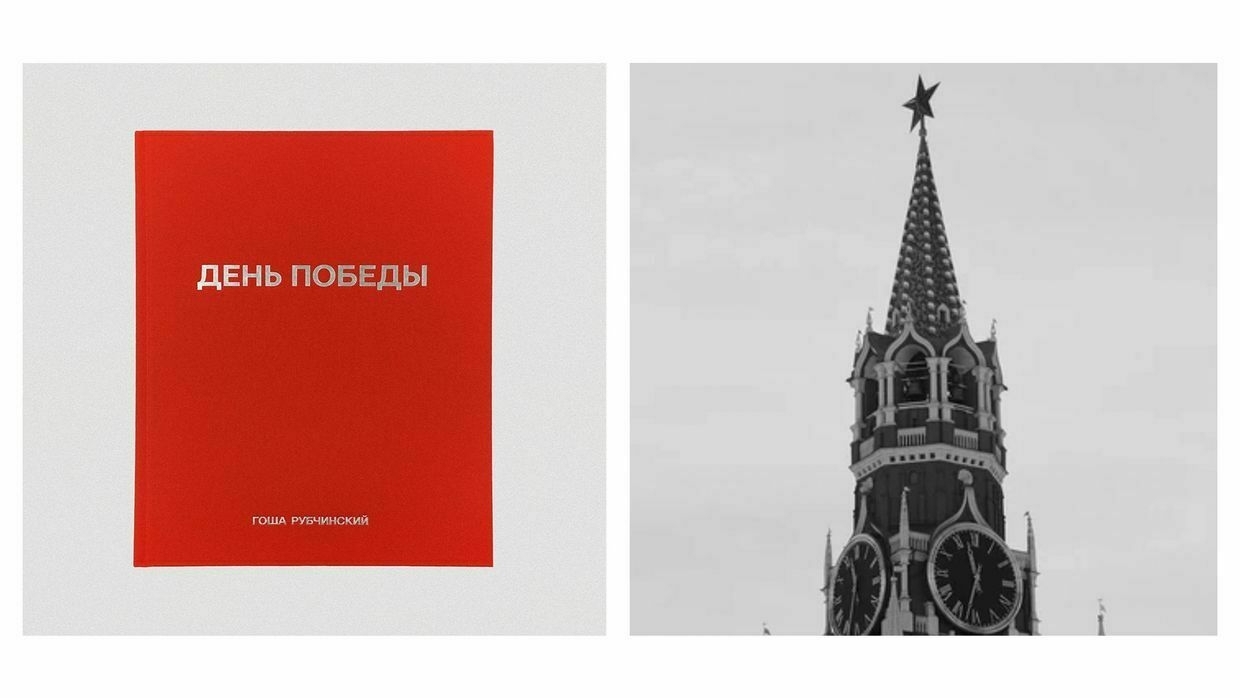
-
General Staff: Russia has lost 997,120 troops in Ukraine since Feb. 24, 2022
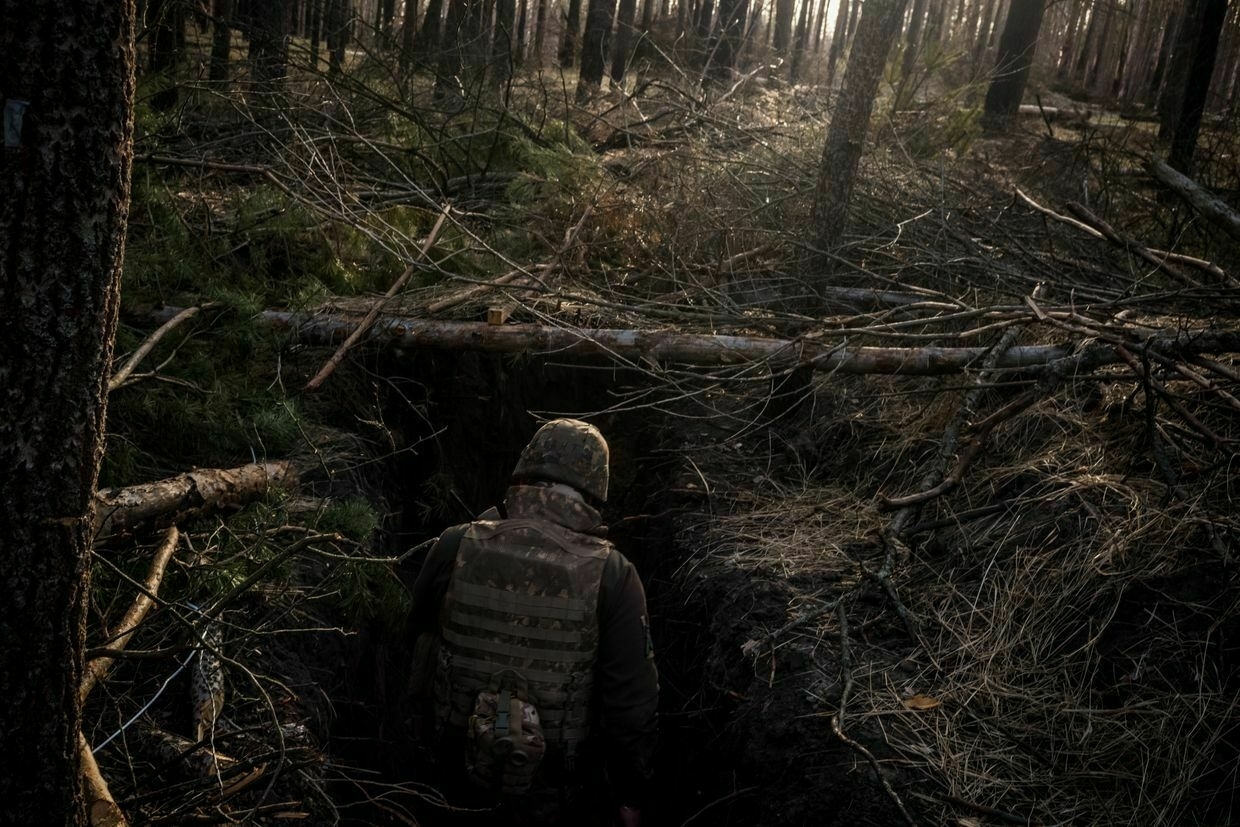
Russia has lost 997,120 troops in Ukraine since the beginning of its full-scale invasion on Feb. 24, 2022, the General Staff of Ukraine’s Armed Forces reported on June 9.
The number includes 970 casualties that Russian forces suffered just over the past day.
According to the report, Russia has also lost 10,915 tanks, 22,759 armored fighting vehicles, 51,348 vehicles and fuel tanks, 28,934 artillery systems, 1,411 multiple launch rocket systems, 1,183 air defense systems, 414 airplanes, 337 helicopters, 39,818 drones, 28 ships and boats, and one submarine.
Trump administration redirects 20,000 anti-drone missiles meant for Ukraine, Zelensky confirms“We counted on this project — 20,000 missiles. Anti-Shahed missiles. It was not expensive, but it’s a special technology,” President Volodymyr Zelensky said.The Kyiv IndependentTim Zadorozhnyy

-
Ukrainian boxer Usyk invites Trump to his home to see Russia's war firsthand, BBC reports
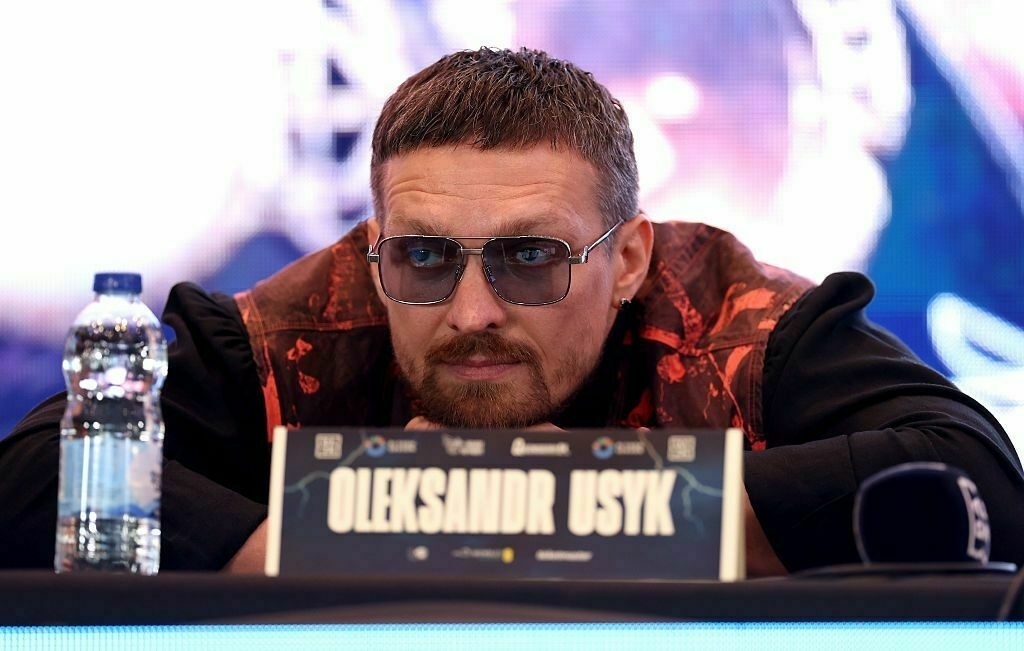
Unified heavyweight champion Oleksandr Usyk invited U.S. President Donald Trump to live for a week in his house in Ukraine during a June 8 interview with BBC Sport.
Trump has pledged to negotiate an end to Russia’s war against Ukraine, but after six months in office a ceasefire remains nowhere in sight. Trump has threatened to abandon the peace process altogether and even suggested Ukraine is to blame for Russia’s intensifying aerial attacks.
Usyk said he would welcome Trump to visit his home in Ukraine to experience the realities of the war firsthand.
“I advise American President Donald Trump, go to Ukraine and live in my house one week. Only one week … Watch what’s going on every night,” he told BBC Sport.
“Every night, bombs fly above my house. Bomb, rocket, Shahed. Every night."
Usyk’s appeal to Trump comes after multiple large-scale Russian attacks against Ukrainian cities.
Originally from Crimea, Usyk now resides in Kyiv, the target of several drone and missile strikes in late May and early June. Russia has broken its nightly drone record repeatedly in the last two weeks and U.S. officials have warned Ukraine to expect more mass strikes in the coming days.
While Trump initially criticized Russian President Vladimir Putin after a series of consecutive attacks against Ukrainian cities in late May, he did not follow through on threats to sanction Moscow.
Trump has since attempted to delay and soften a U.S. Senate bill imposing harsher sanctions against Russia and has even threatened to possibly sanction Ukraine.
Usyk has previously directed public comments to Trump while advocating for Ukraine. During the 2024 U.S. presidential election, Usyk took to social media to urge Trump to use his purported influence over Putin to help free Ukrainian prisoners of war (POWs).
Usyk has held the title of unified heavyweight champion since 2021. Before his professional boxing career, he was a gold medalist at the 2012 Olympic Games in London.
US expects Russia’s retaliation for Operation Spiderweb to continue soonOne official told Reuters that while the timing remains unclear, a retaliatory strike could be expected in the coming days and is likely to be “asymmetrical.”The Kyiv IndependentTim Zadorozhnyy
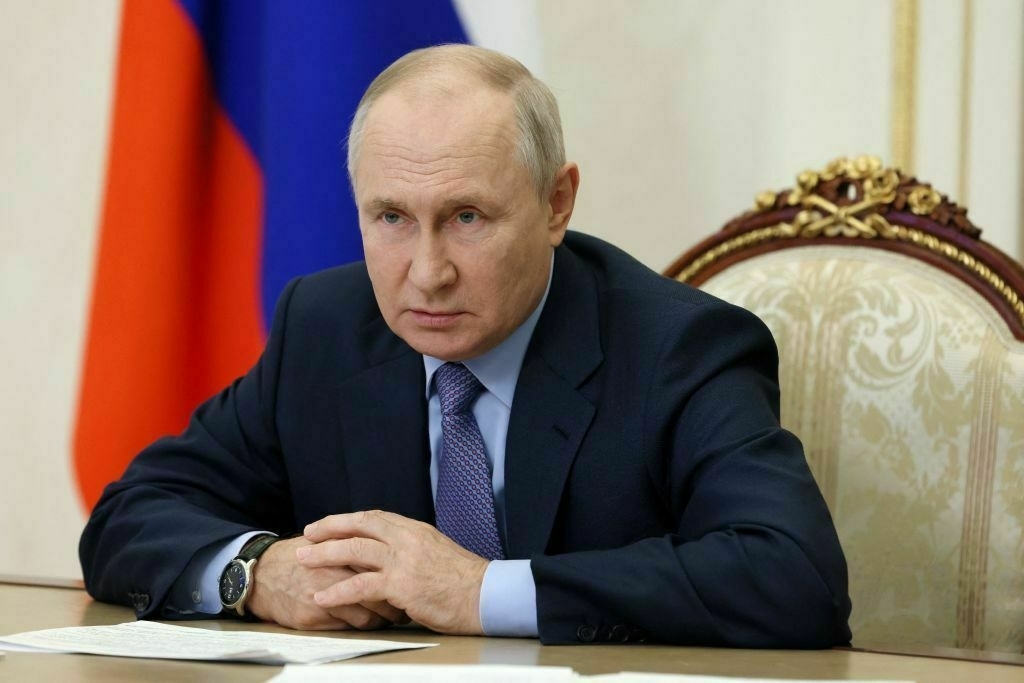
-
Drone attack ignites blaze in Russia's Chuvashia Republic, media reports
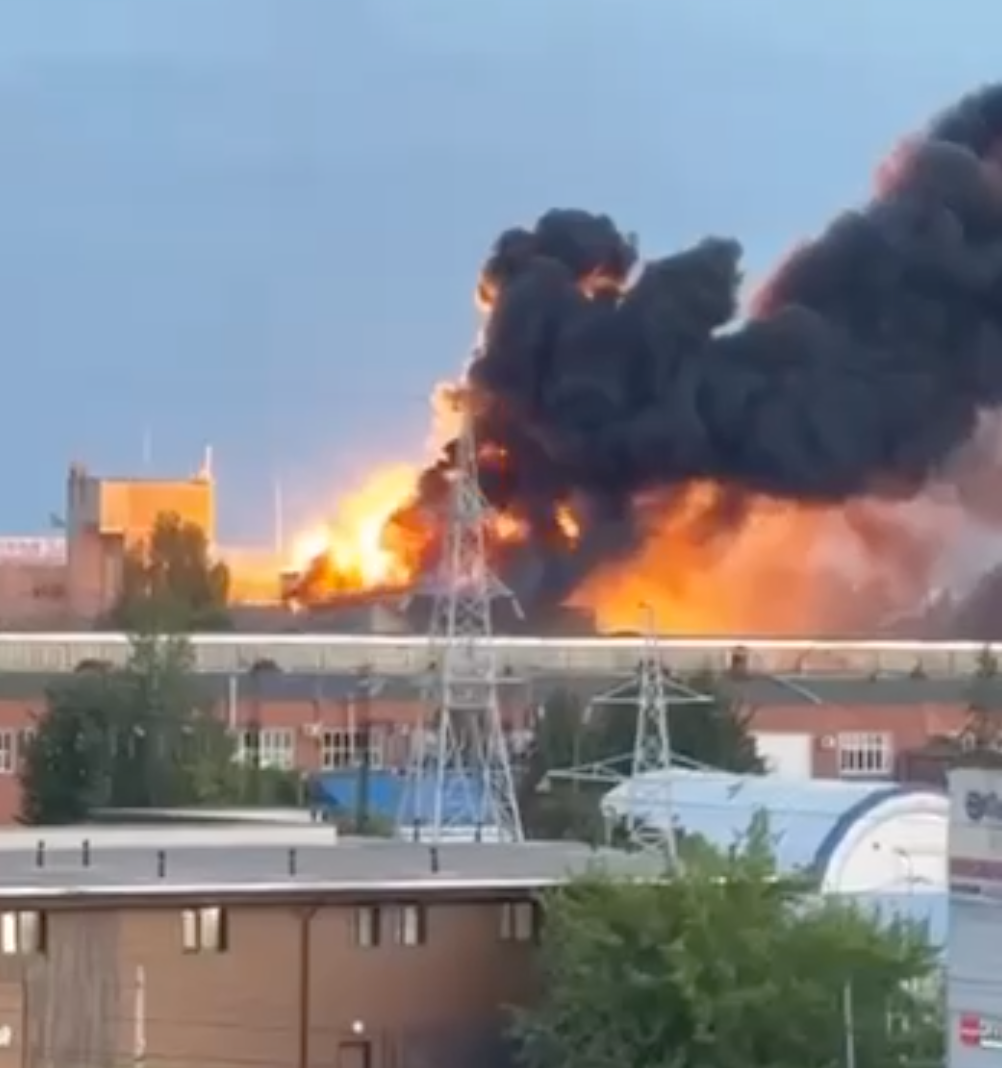
Editor’s Note: This is a developing story and is being updated.
Explosions and massive fires followed a drone attack on the Russian city of Cheboksary in the Chuvashia Republic, Russian Telegram news channels reported in the early hours of June 9.
Ukrainian drones allegedly targeted an oil depot in Cheboksary in a previous attack in March.
In video footage from local residents purporting to show the June 9 strike, smoke and flames can be seen rising over the city of Cheboksary. One video, published by the Russian independent news outlet Astra, shows a drone approaching the target and making impact, causing another explosion.
0:00/Footage purporting to show an alleged Ukrainian drone strike against the Russian city of Cheboksary in the Chuvashia Republic on June 9, 2025. (Astra) Russian officials have not yet commented on the alleged attack and the Kyiv Independent could not verify the claims.
Overnight drone strikes in Russia reportedly triggered flight restrictions at airports in Kazan, Nizhny Novgorod, Saratov, and Tambov.
Ukraine reportedly attacked the Burevestnik oil refinery in Cheboksary on March 9, in its first reported drone attack against the Chuvashia Republic. The refinery lies over 900 kilometers (559 miles) from the Ukrainian border.
Since 2022, Kyiv has launched repeated attacks against Russian refineries, which Ukraine considers to be valid military targets.
In recent days, Ukraine has launched a number of strikes against military facilities in Russia, including missile bases and airfields. The most audacious and high-profile attack came on June 1, when Ukraine carried out Operation Spiderweb — a mass drone strike that simultaneously targeted four major Russian air bases, reportedly damaging 41 planes.
Ukraine war latest: US expects Russia’s retaliation for Operation Spiderweb to continue soon; Ukraine denies Russian troop presence in Dnipropetrovsk Oblast, describes situation as ‘tense’Key developments on June 7-8: * US expects Russia’s retaliation for Operation Spiderweb to continue soon * Ukraine denies Russian troop presence in Dnipropetrovsk Oblast amid offensive, describes situation as ‘tense’ * Trump administration redirects 20,000 anti-drone missiles meant for Ukraine, Zelensky confirms * Ukraine downs fighter jet in Russia’s Kursk Oblast, AirThe Kyiv IndependentThe Kyiv Independent news desk
